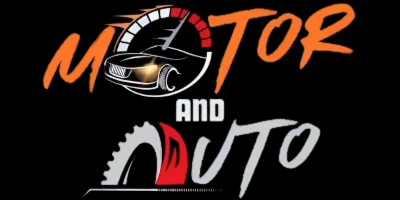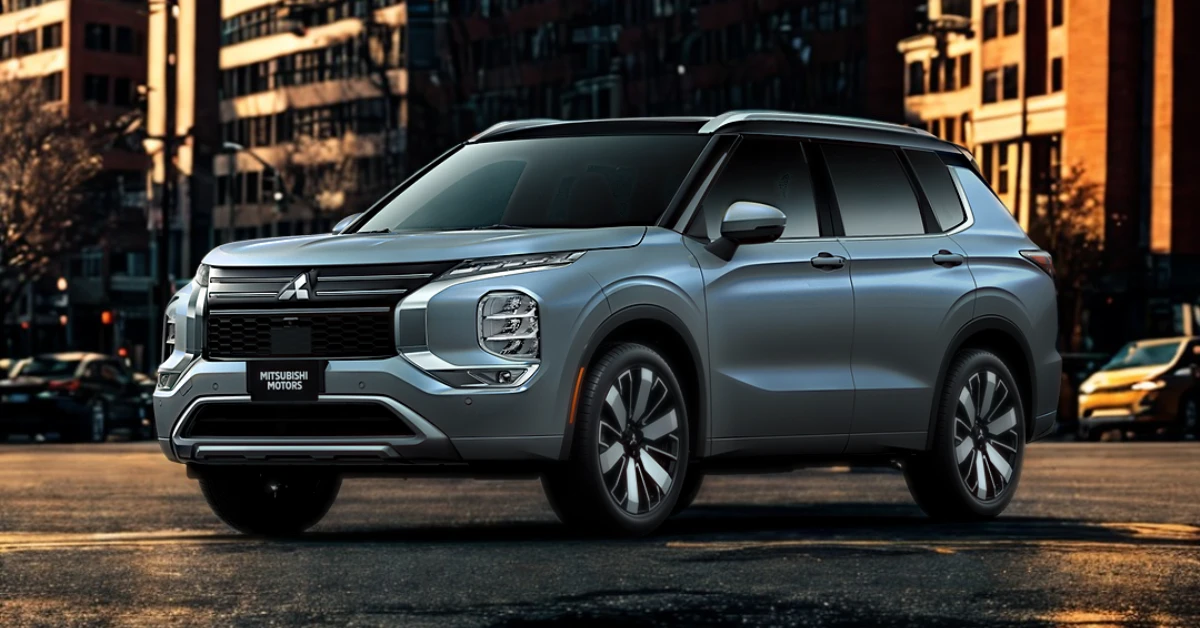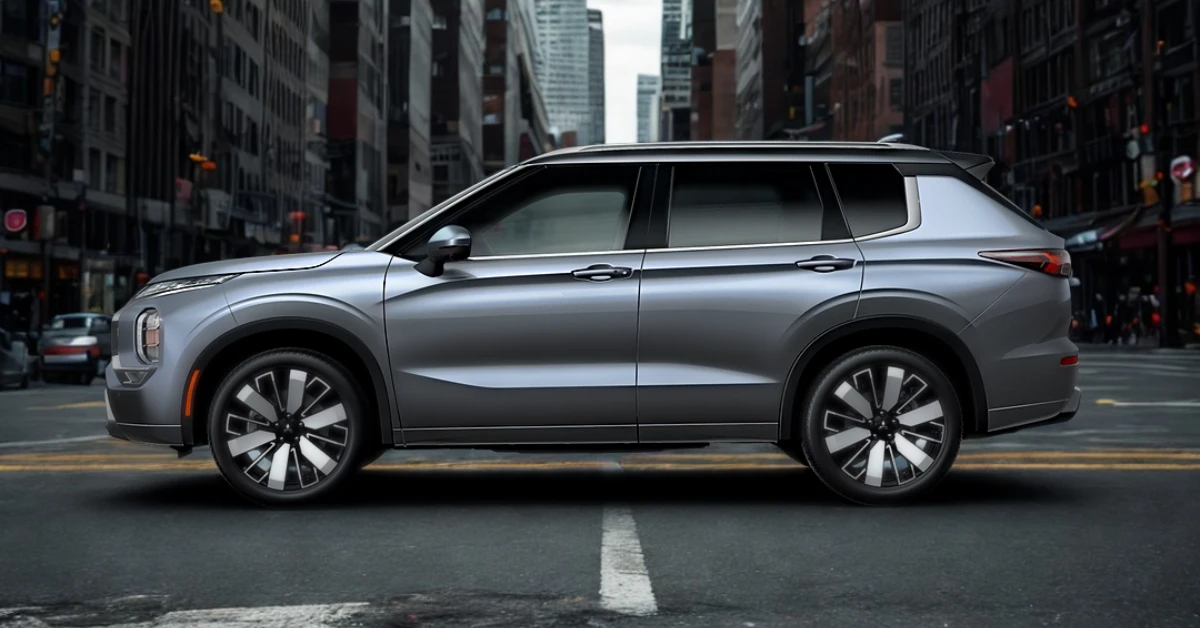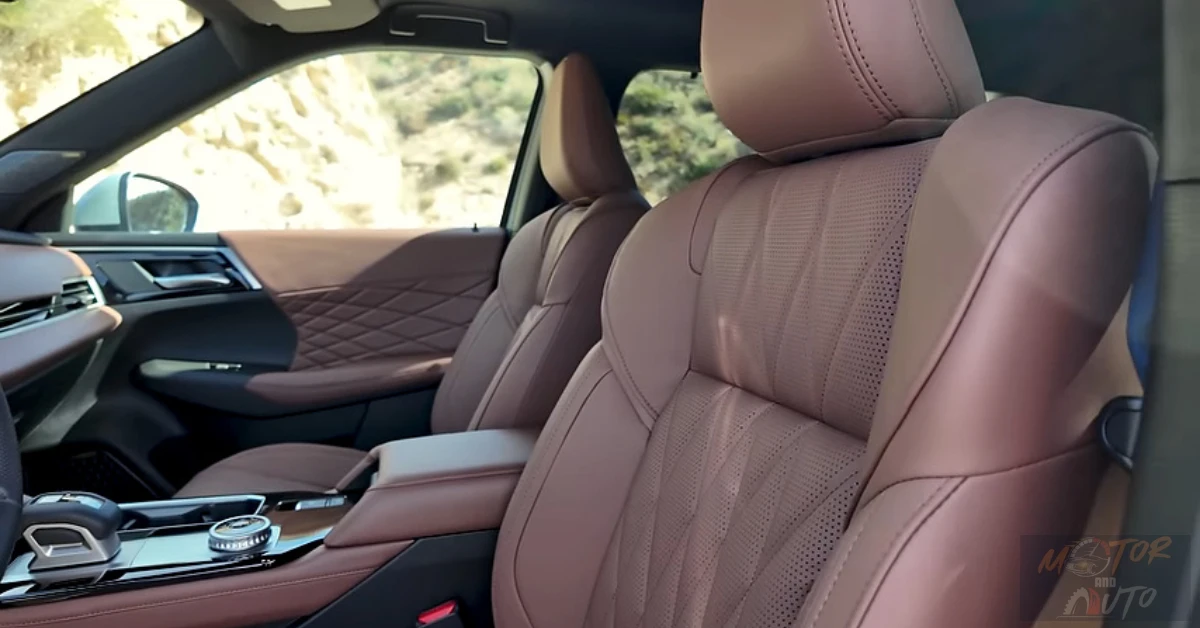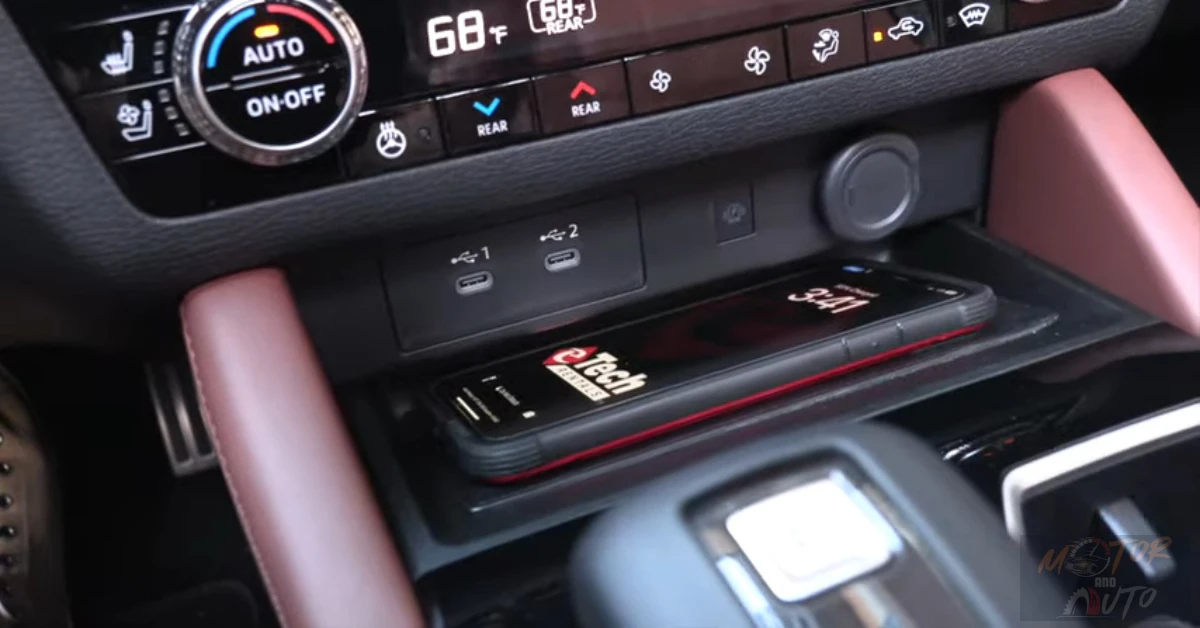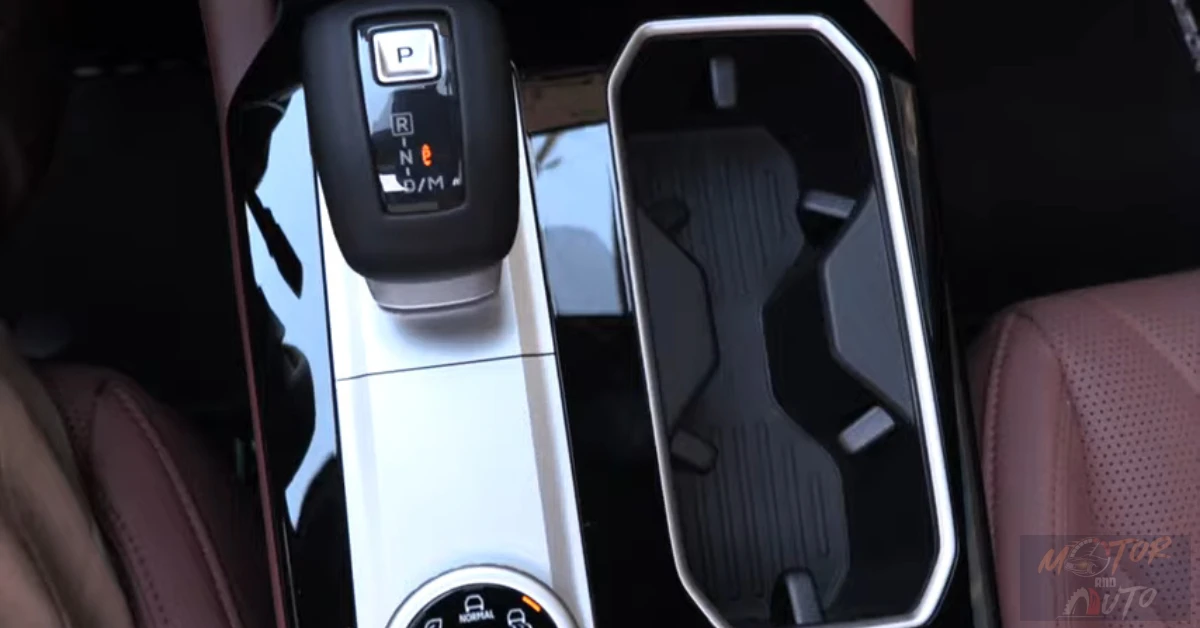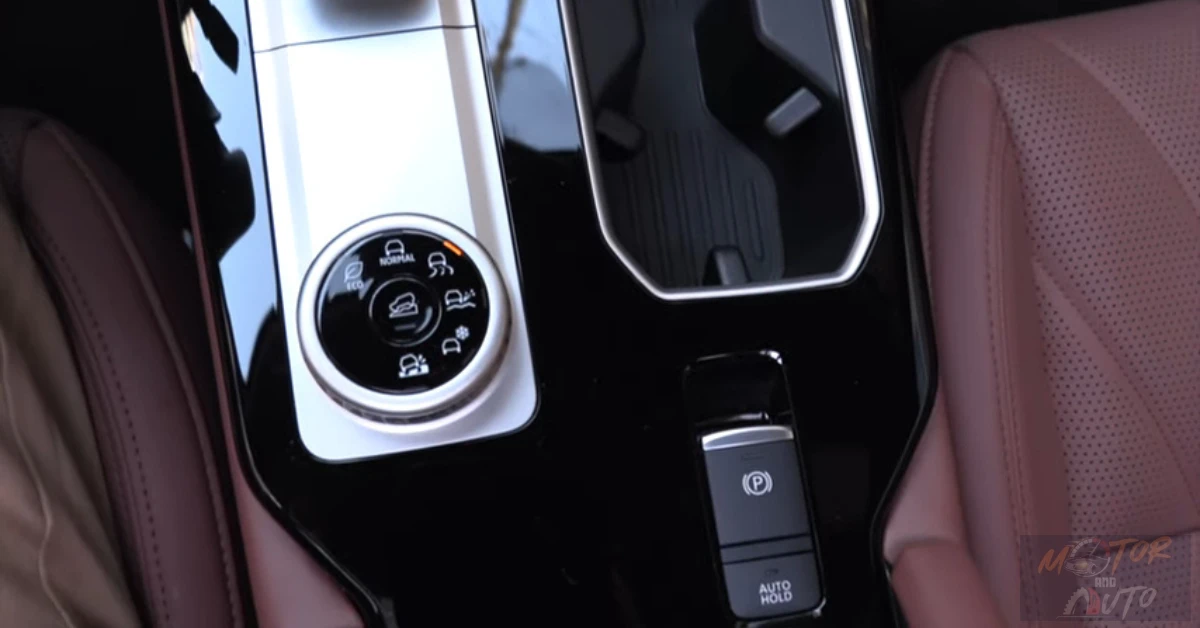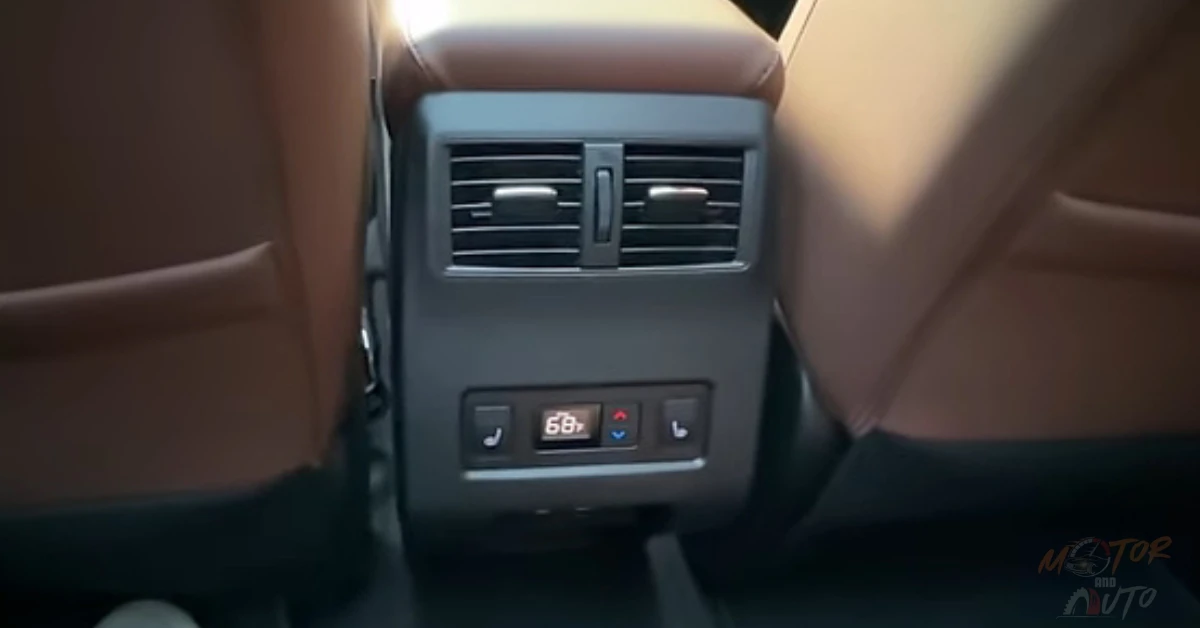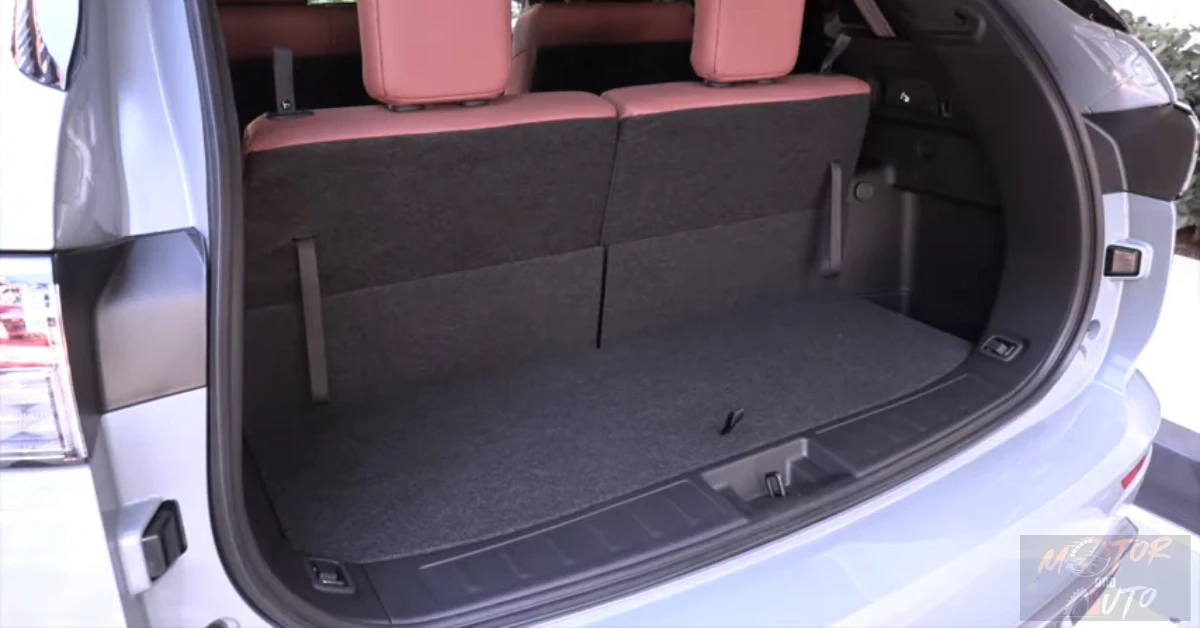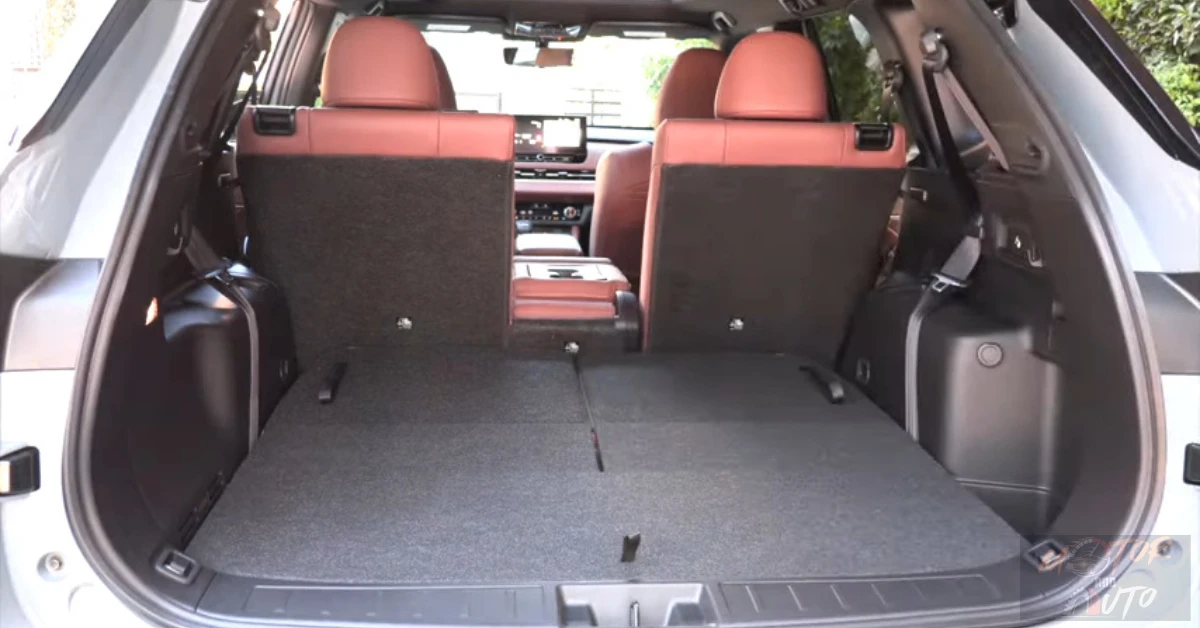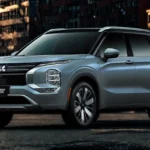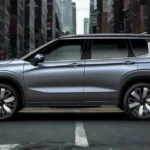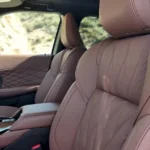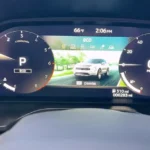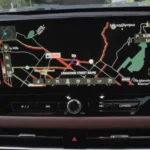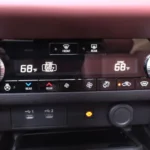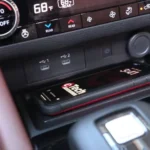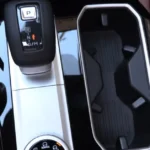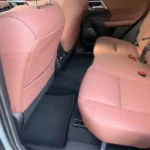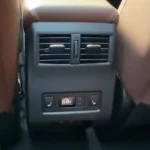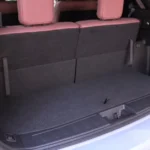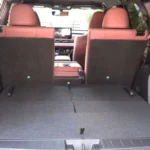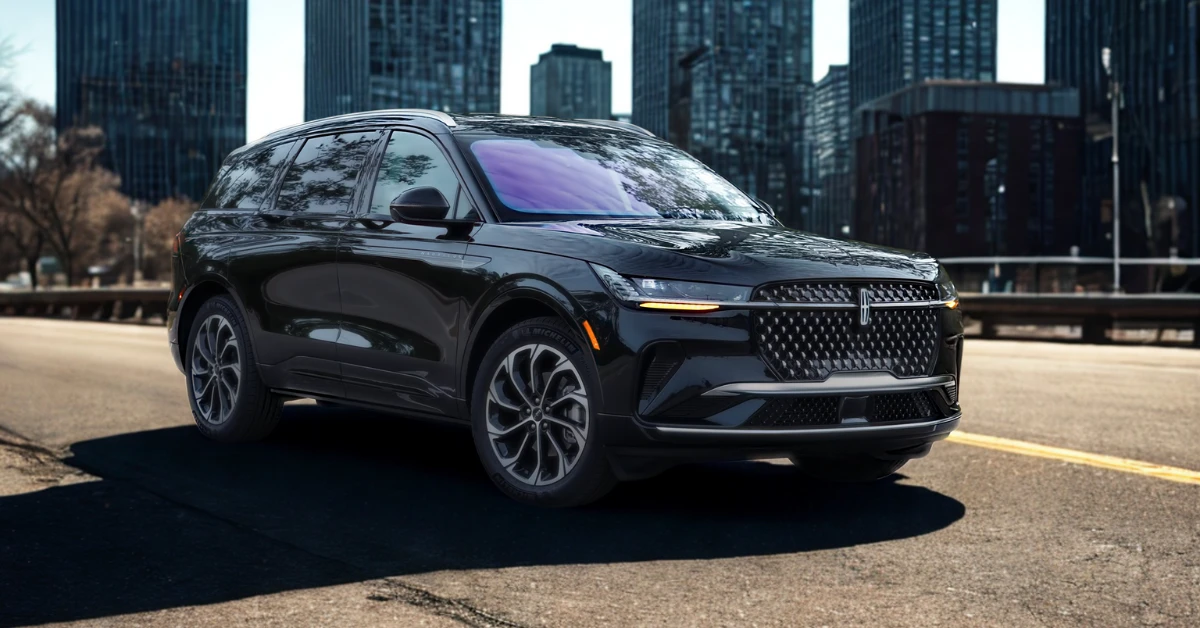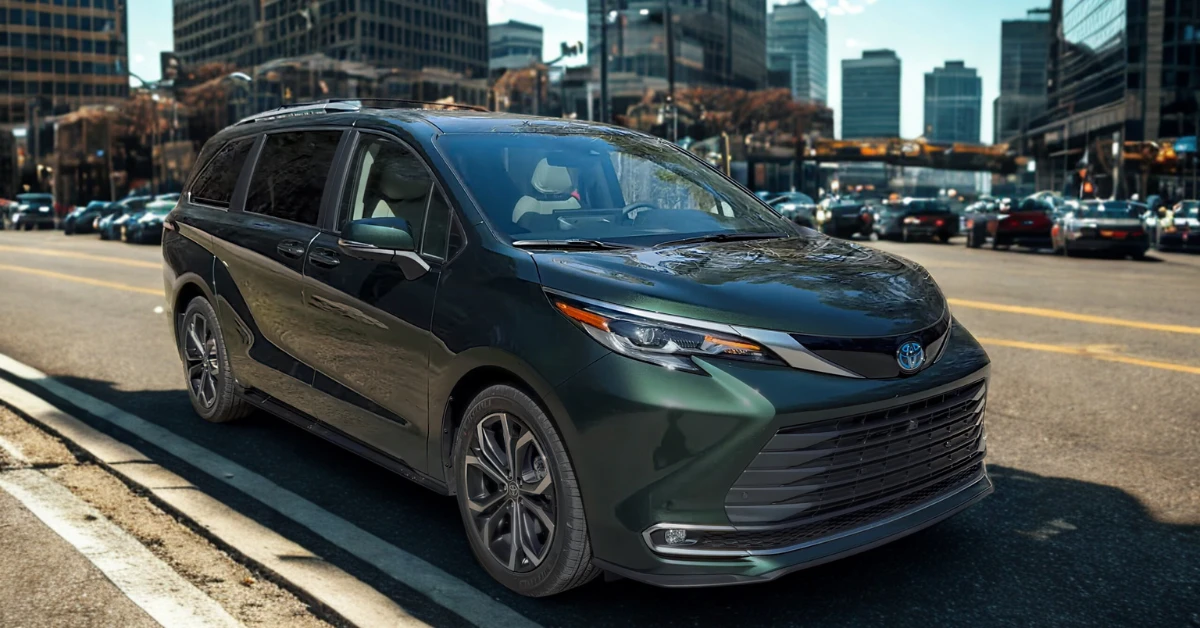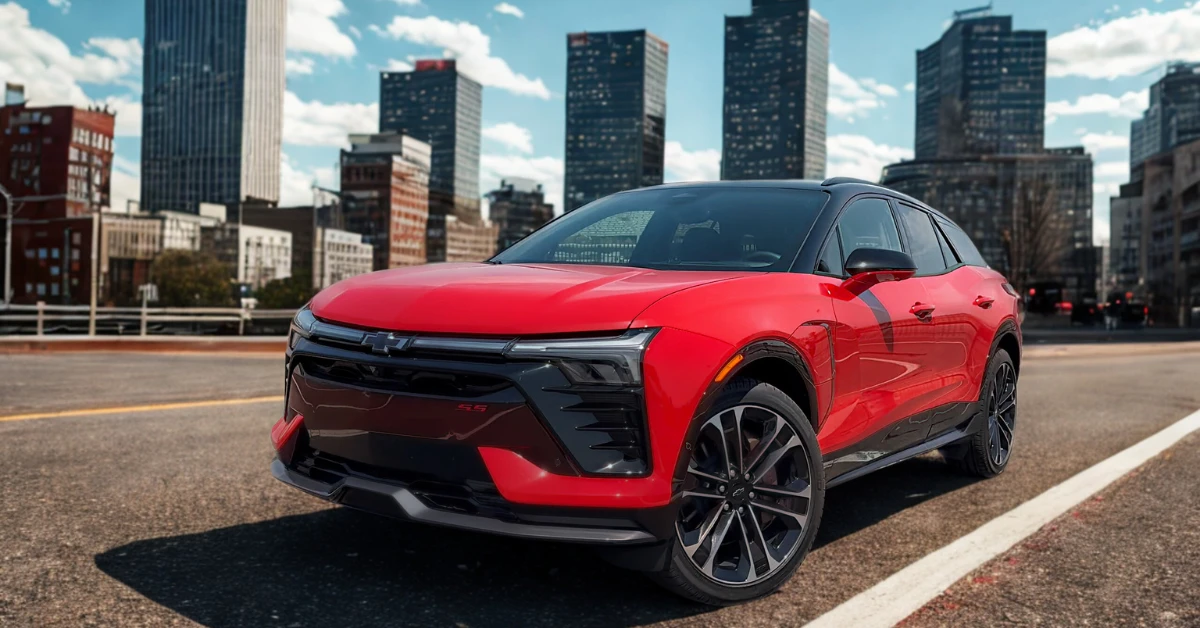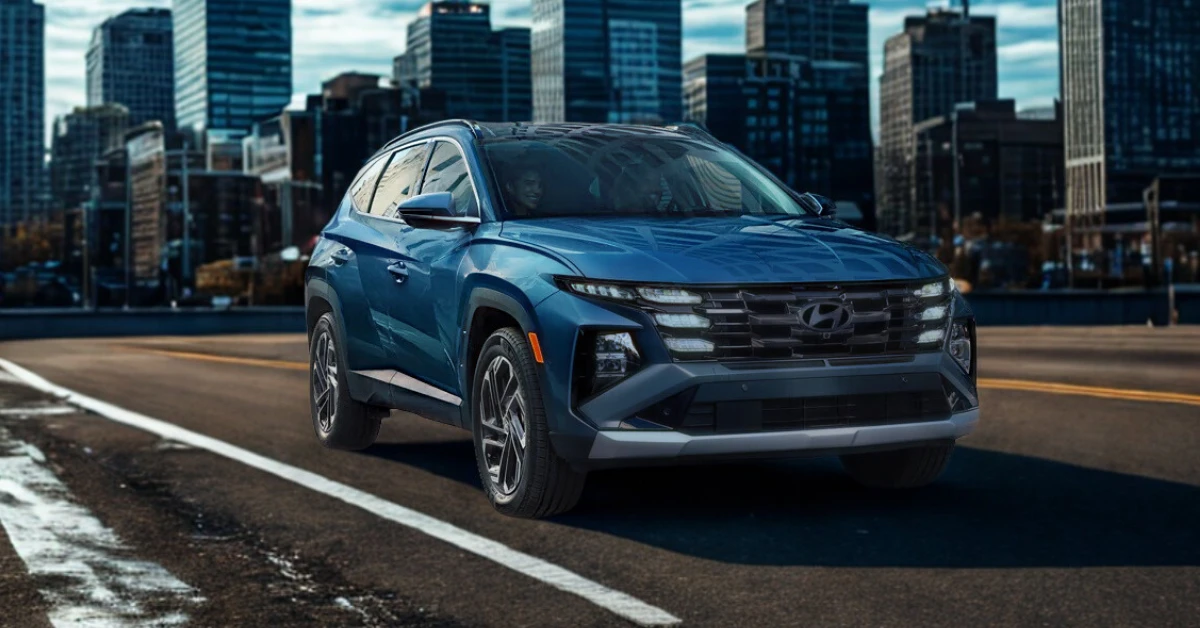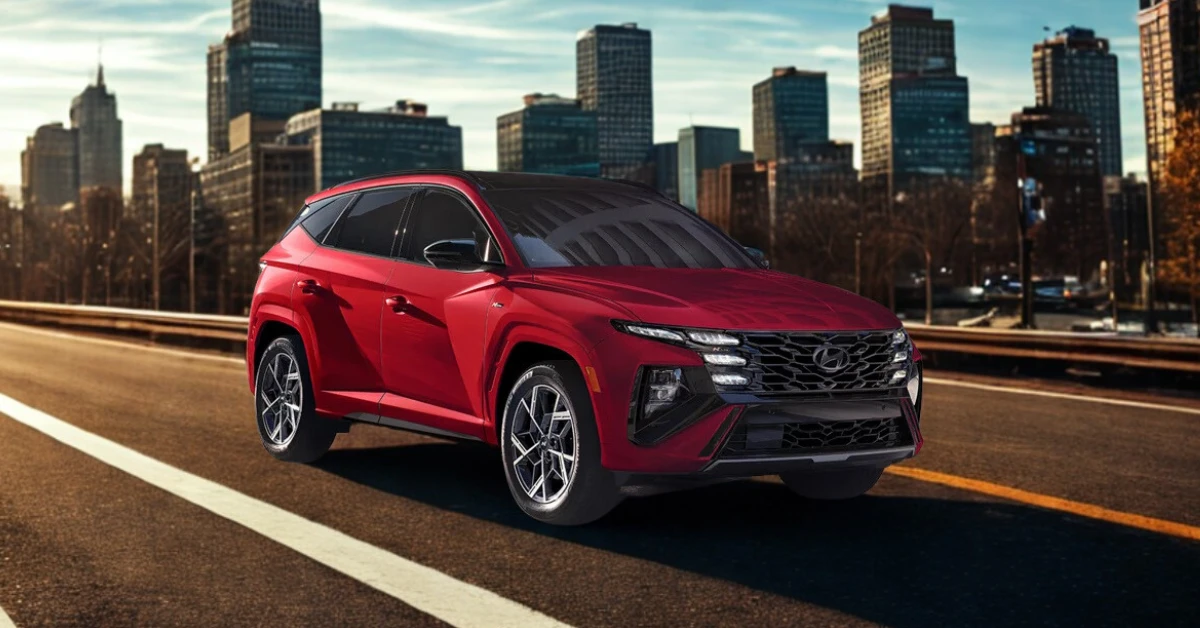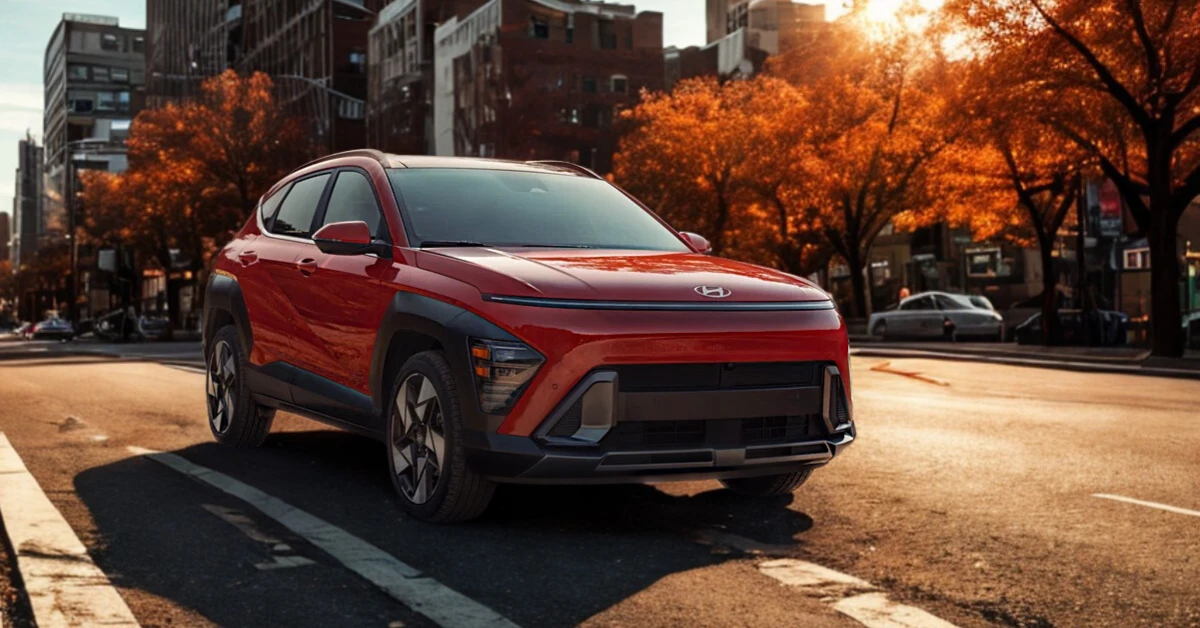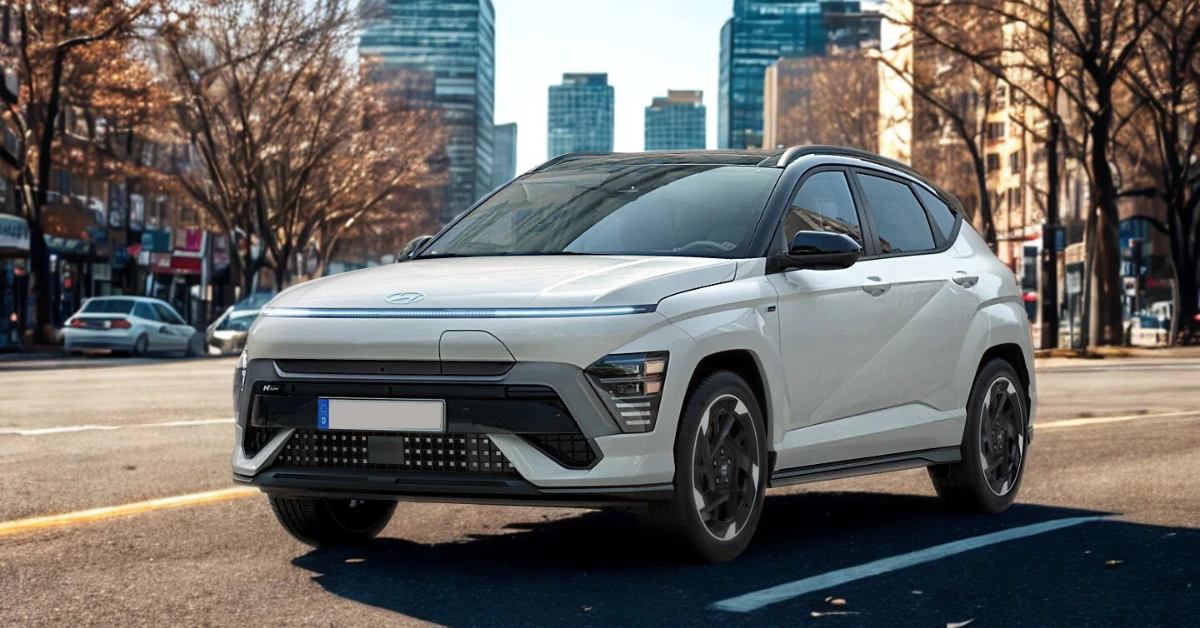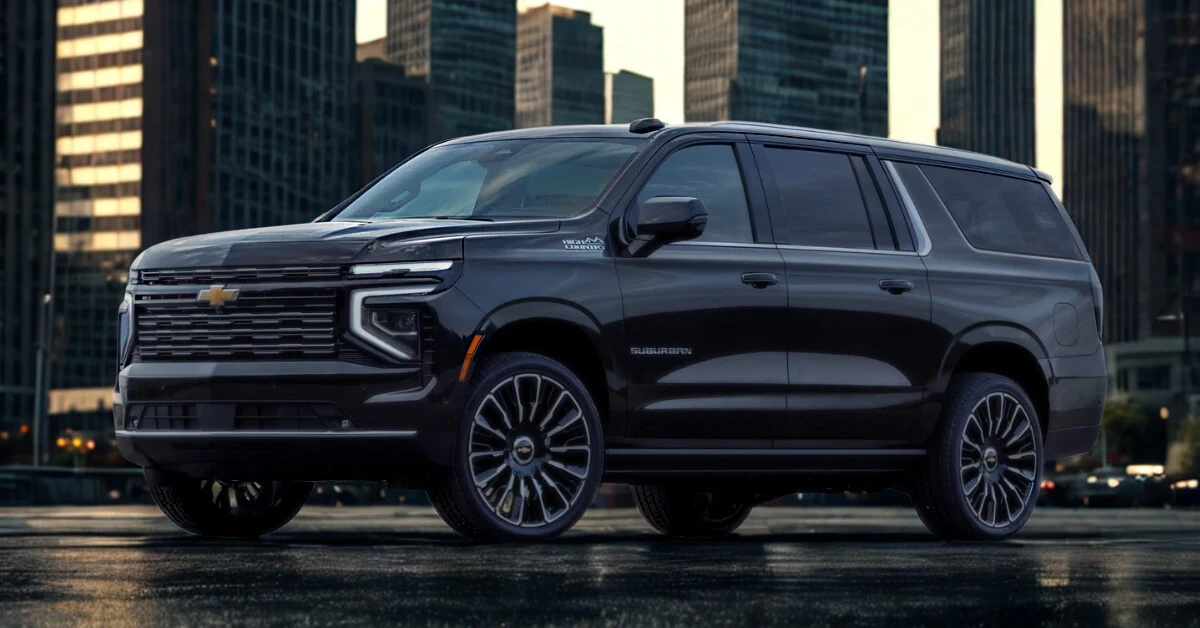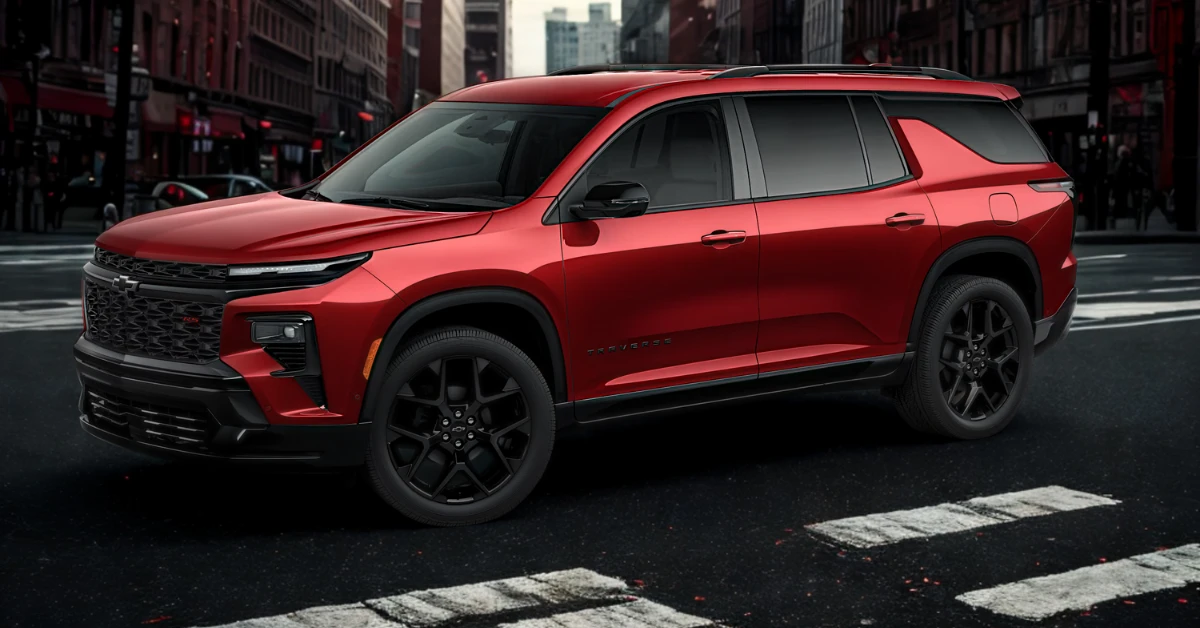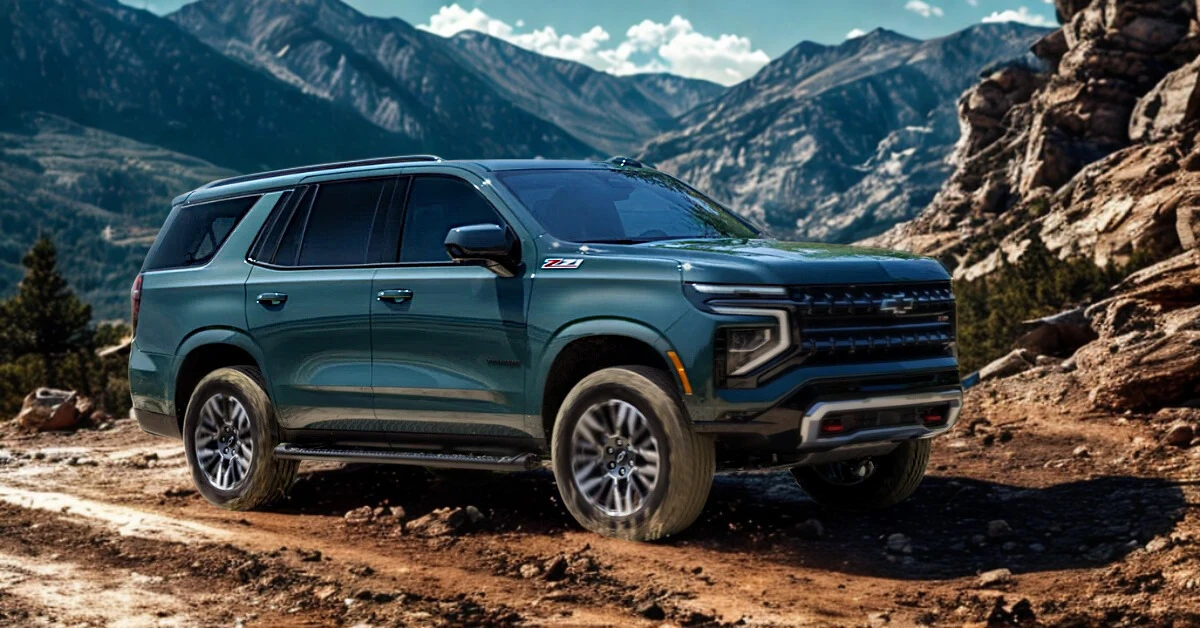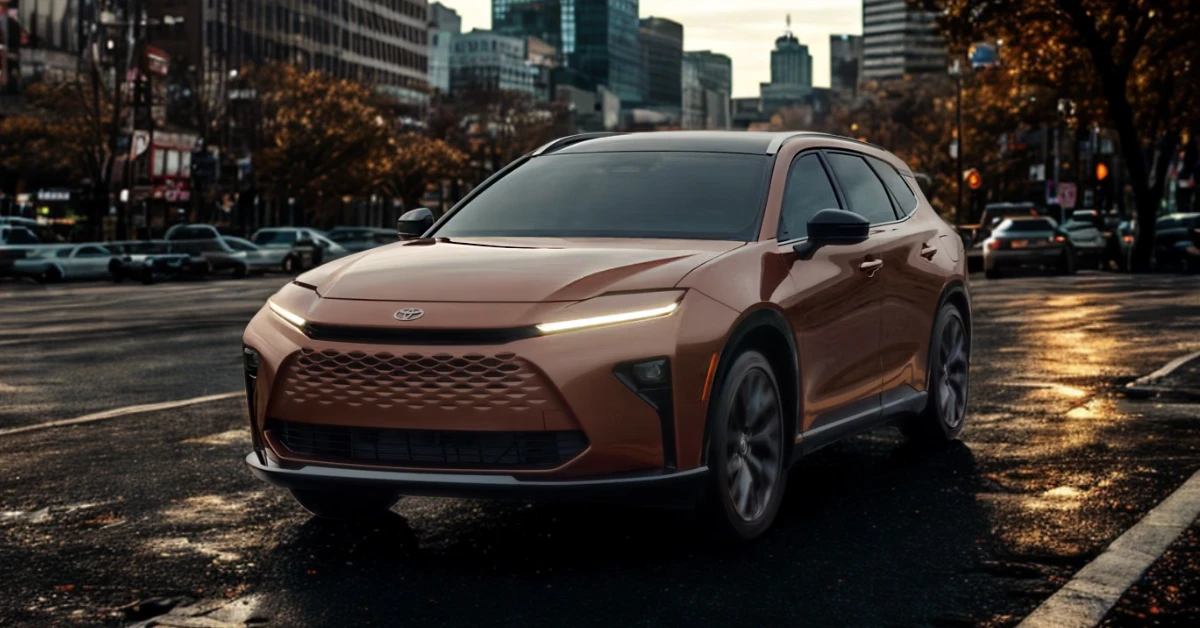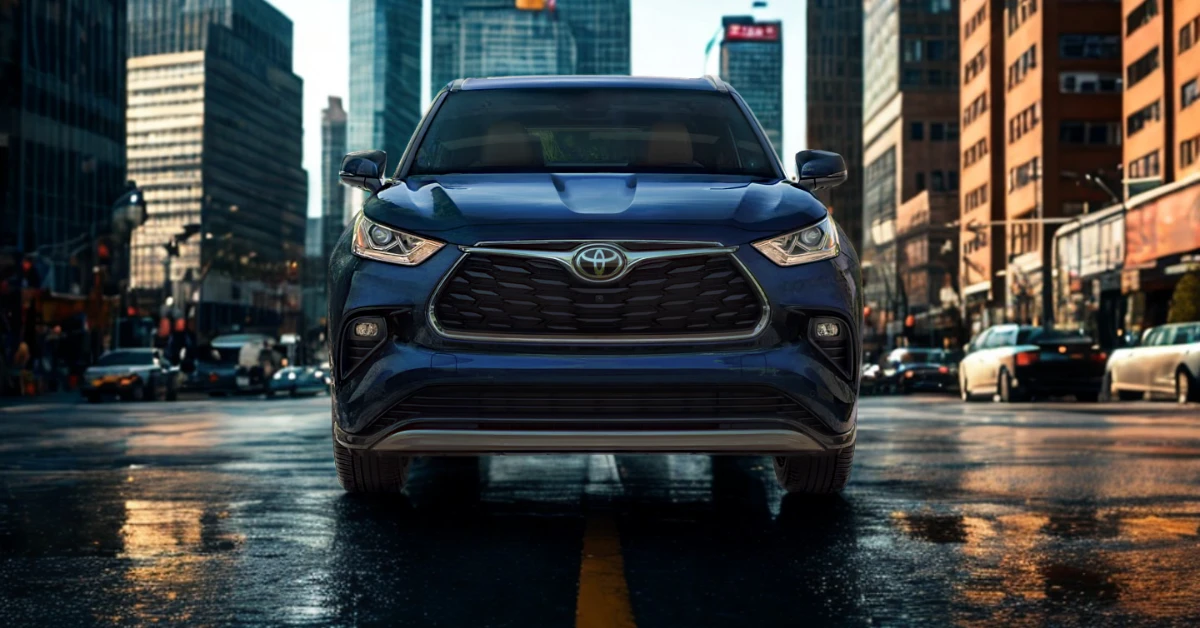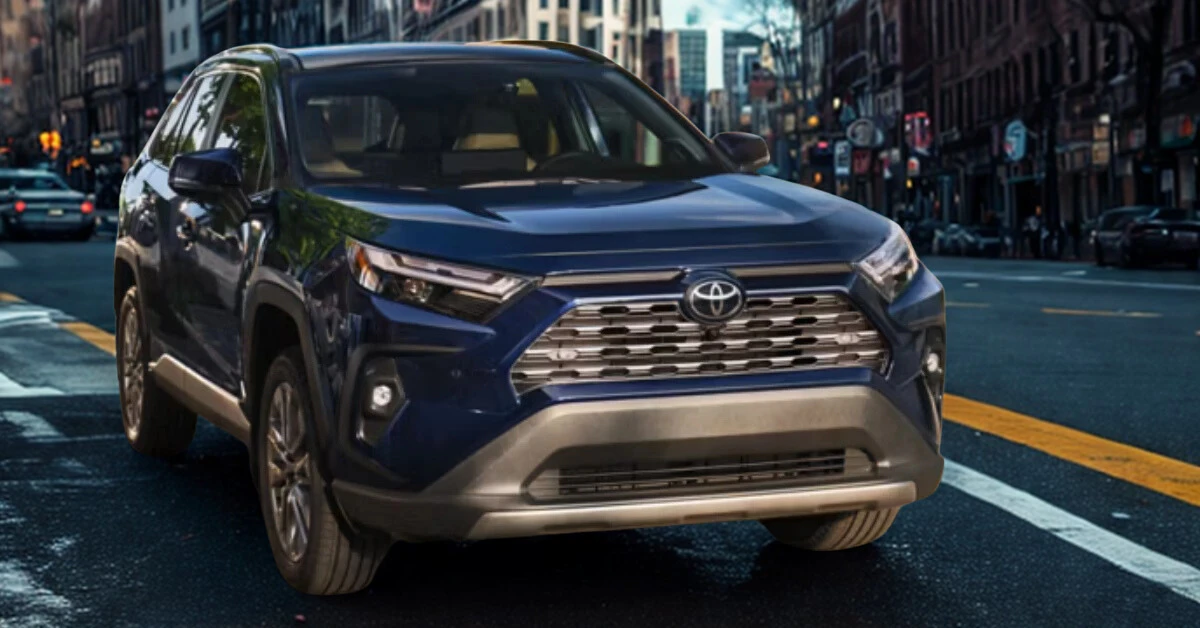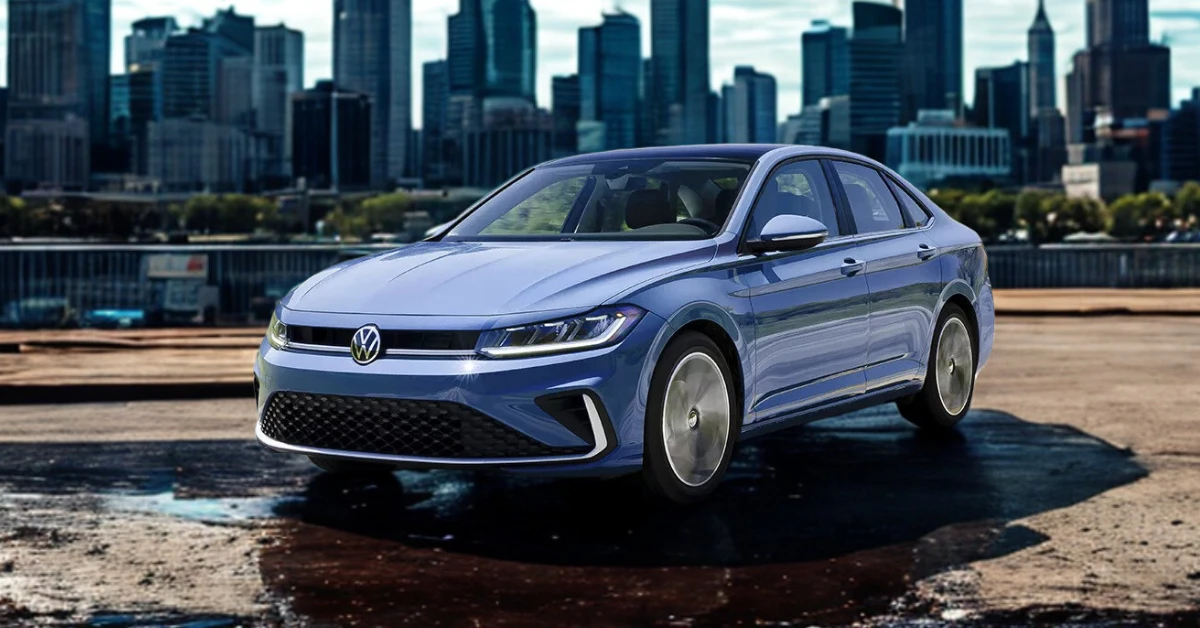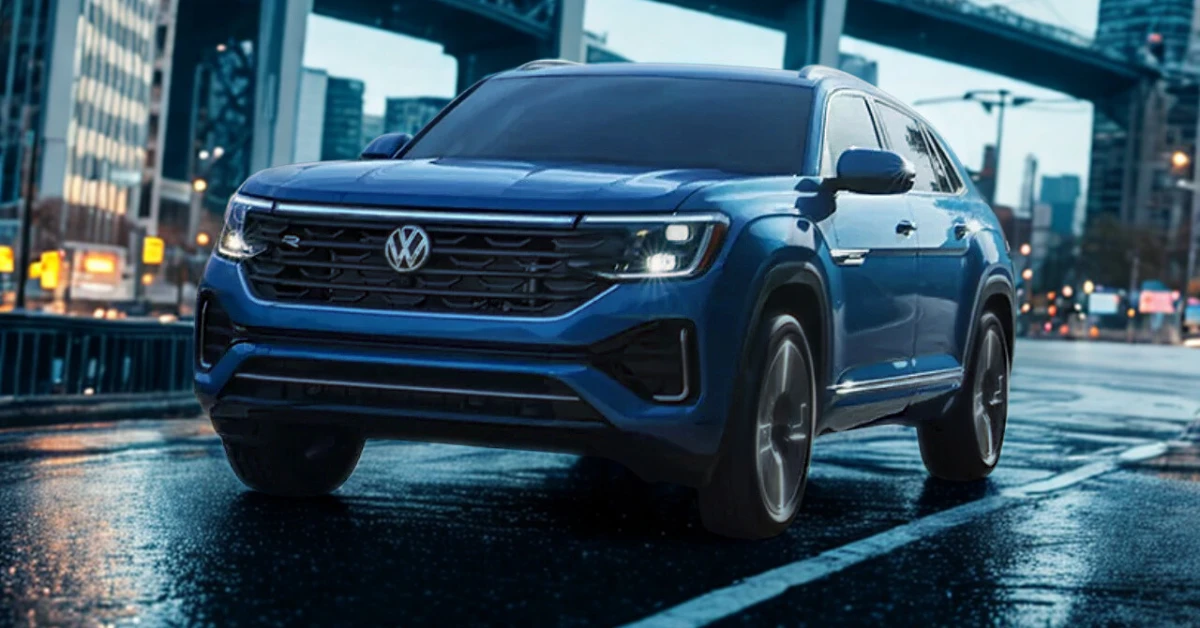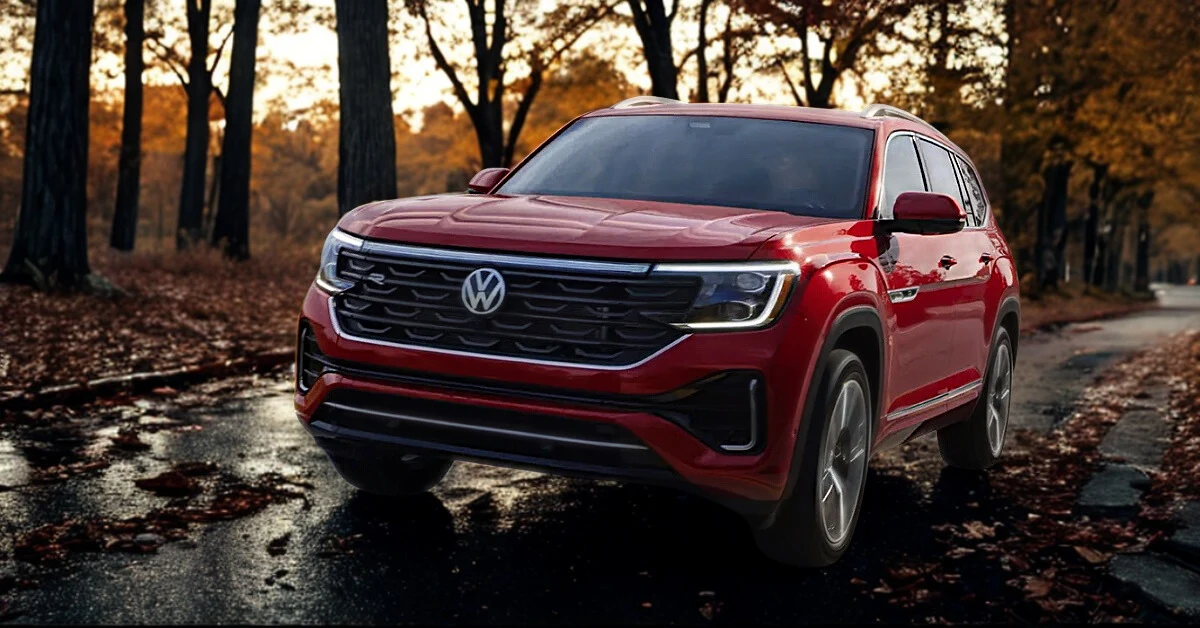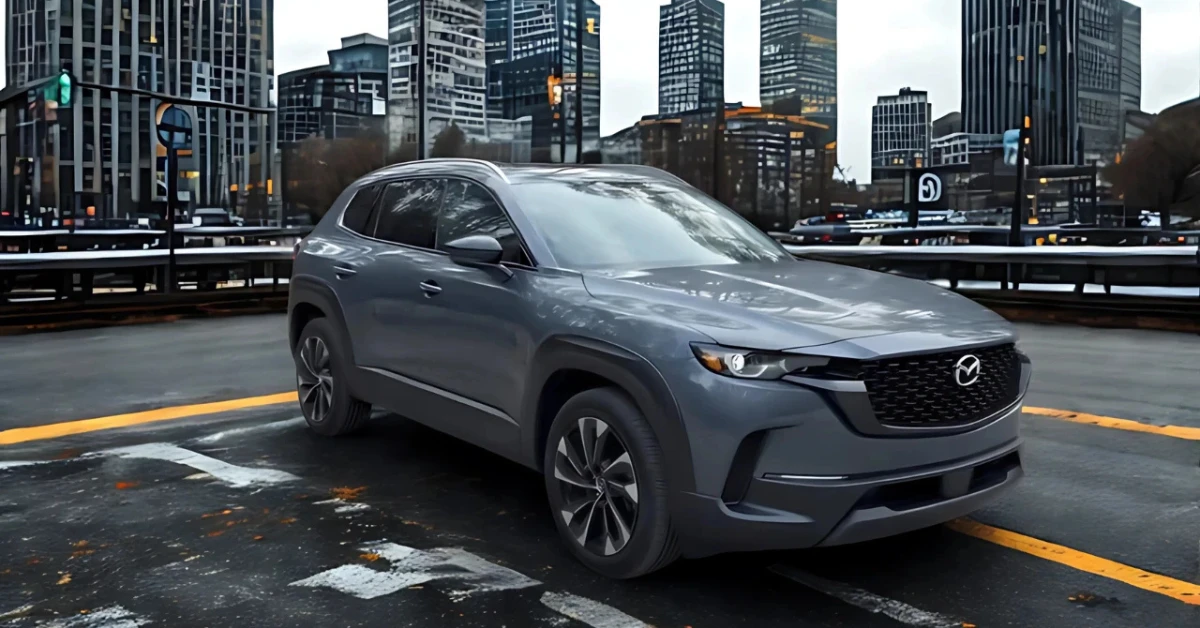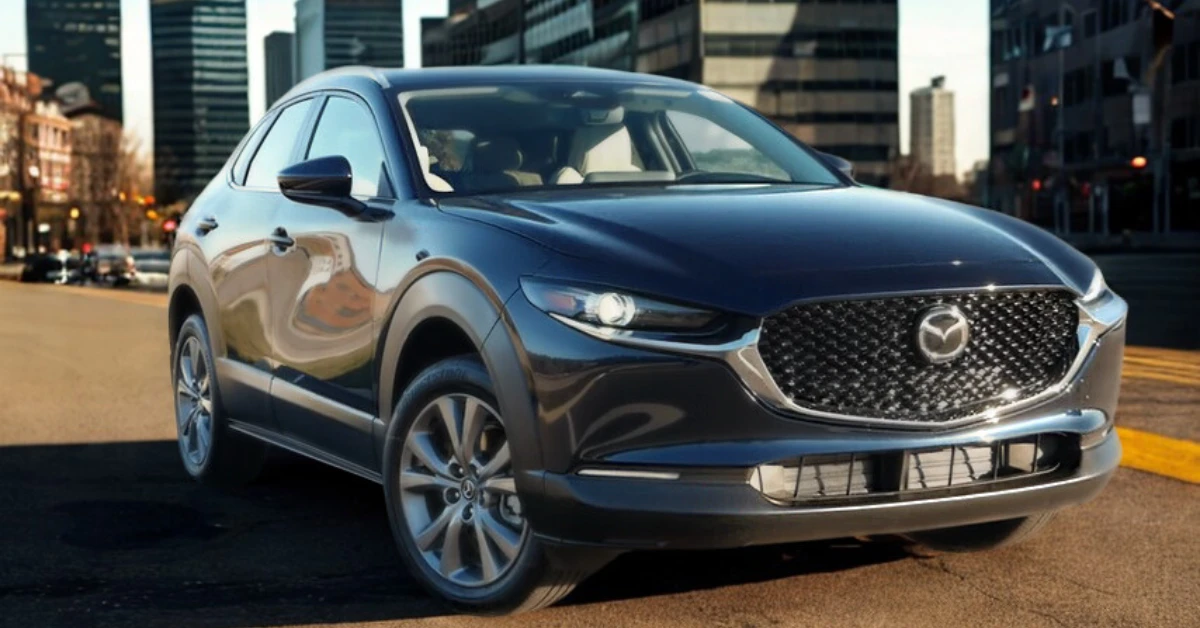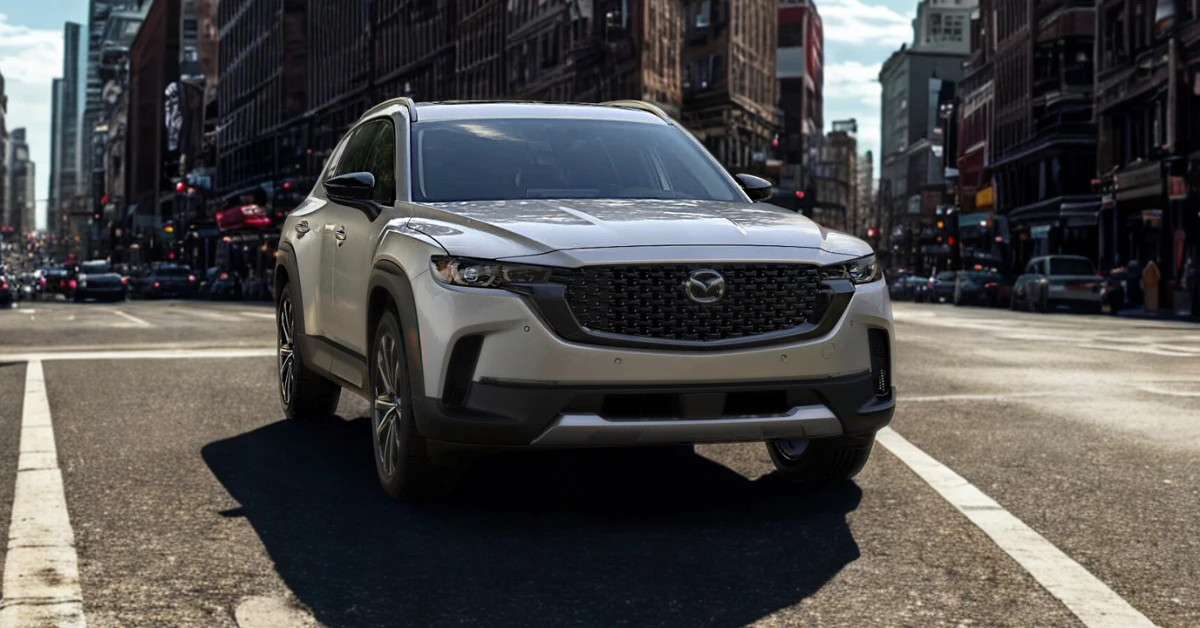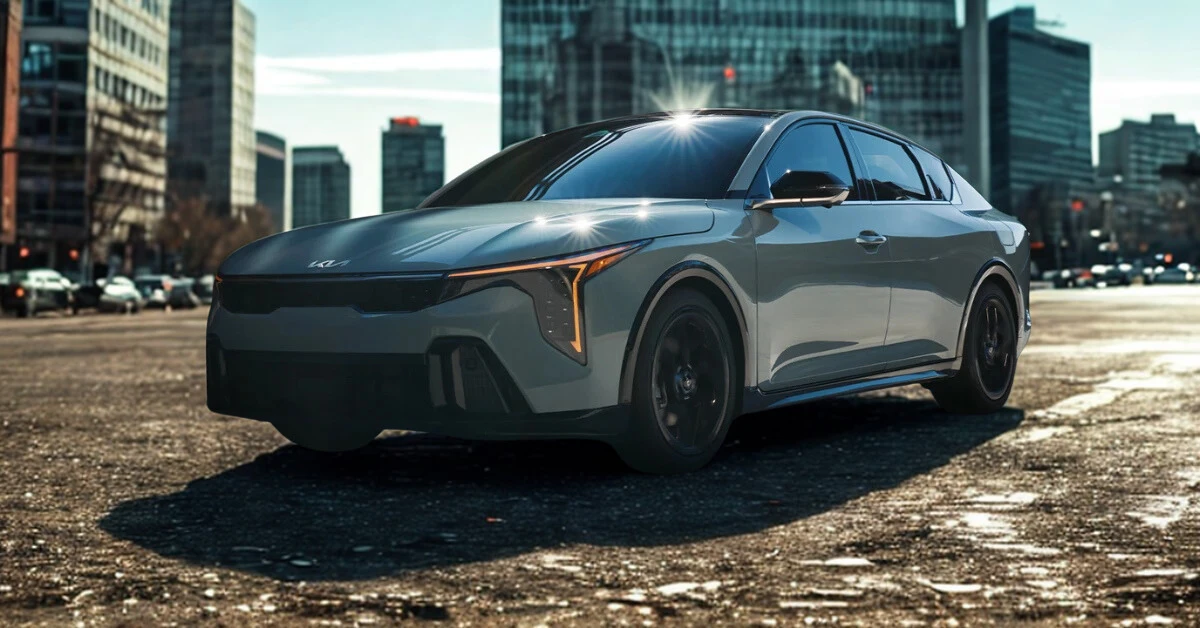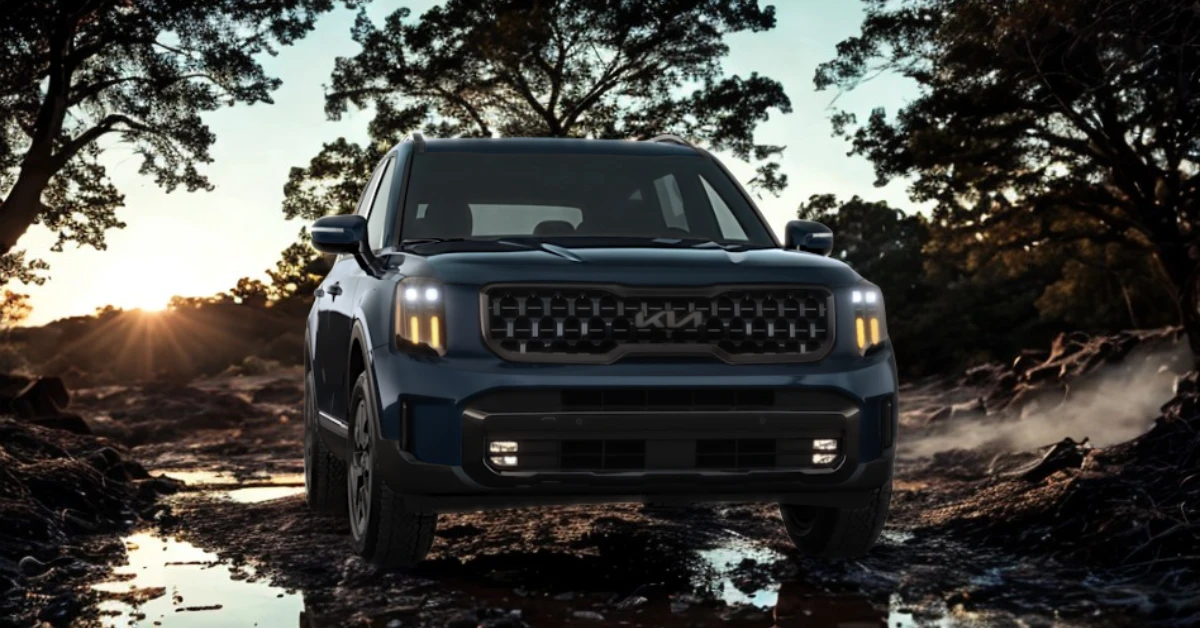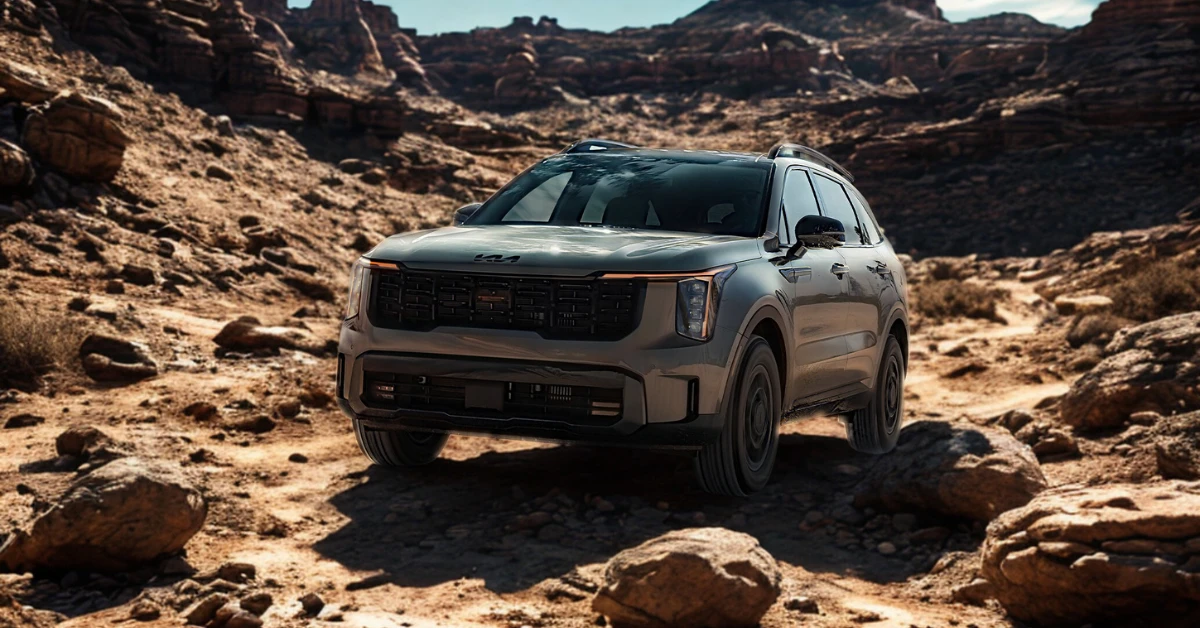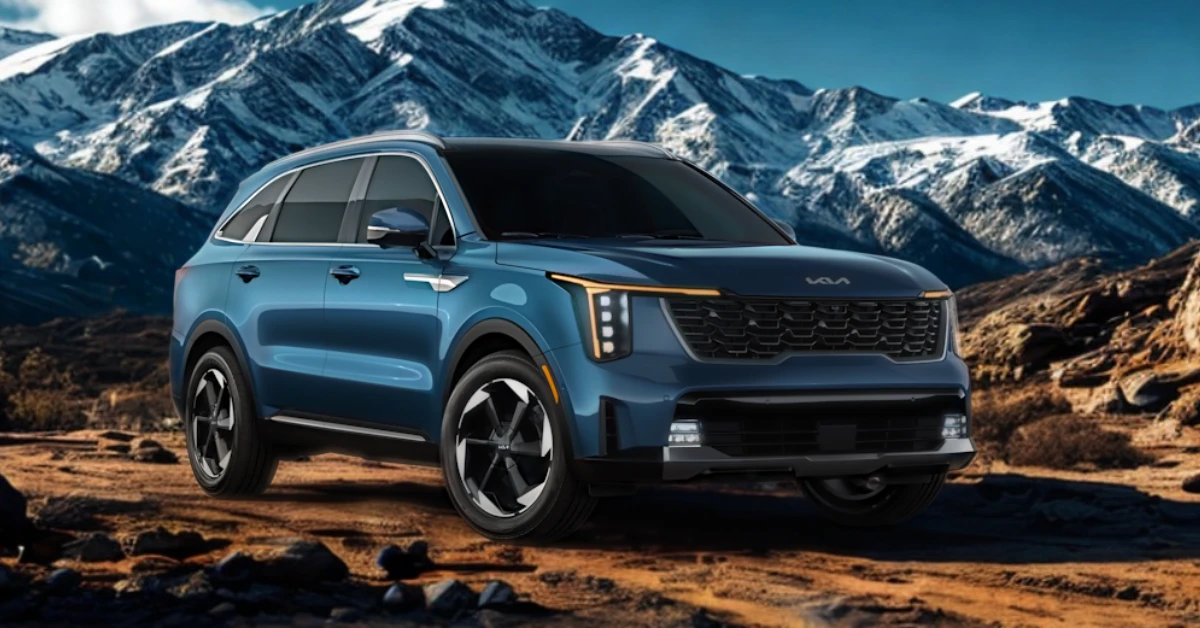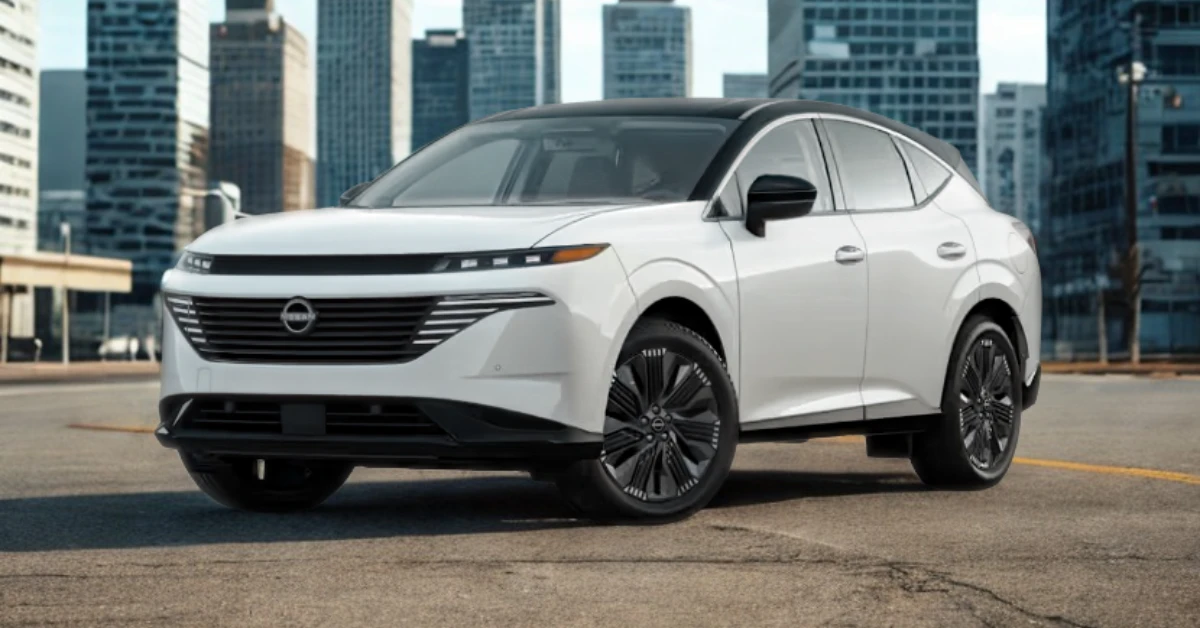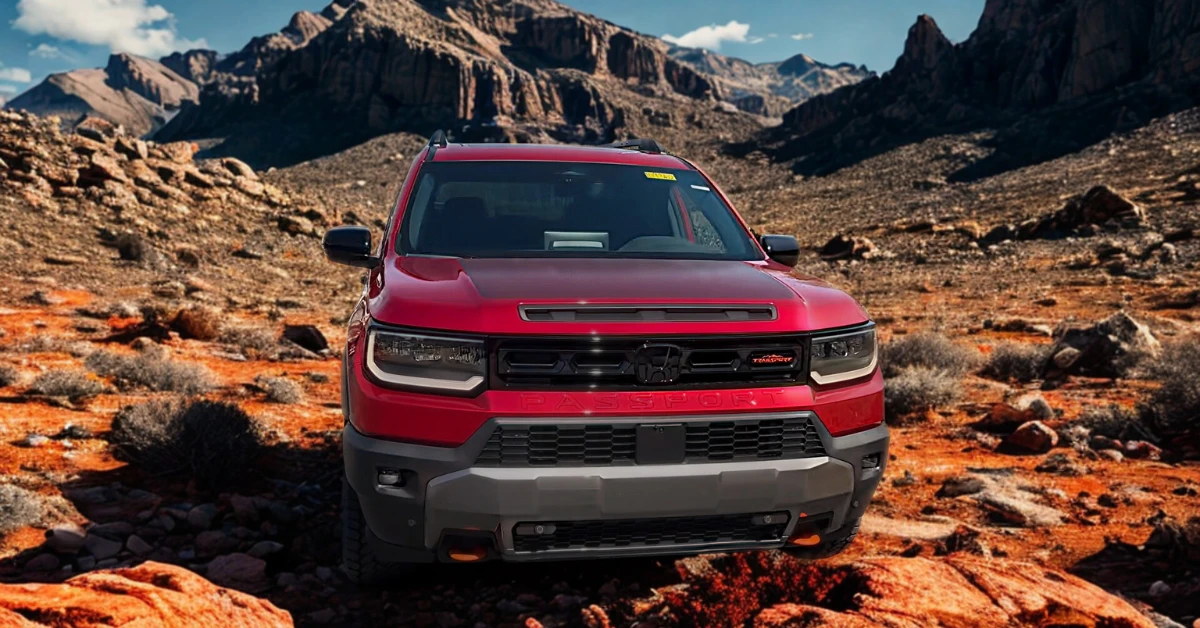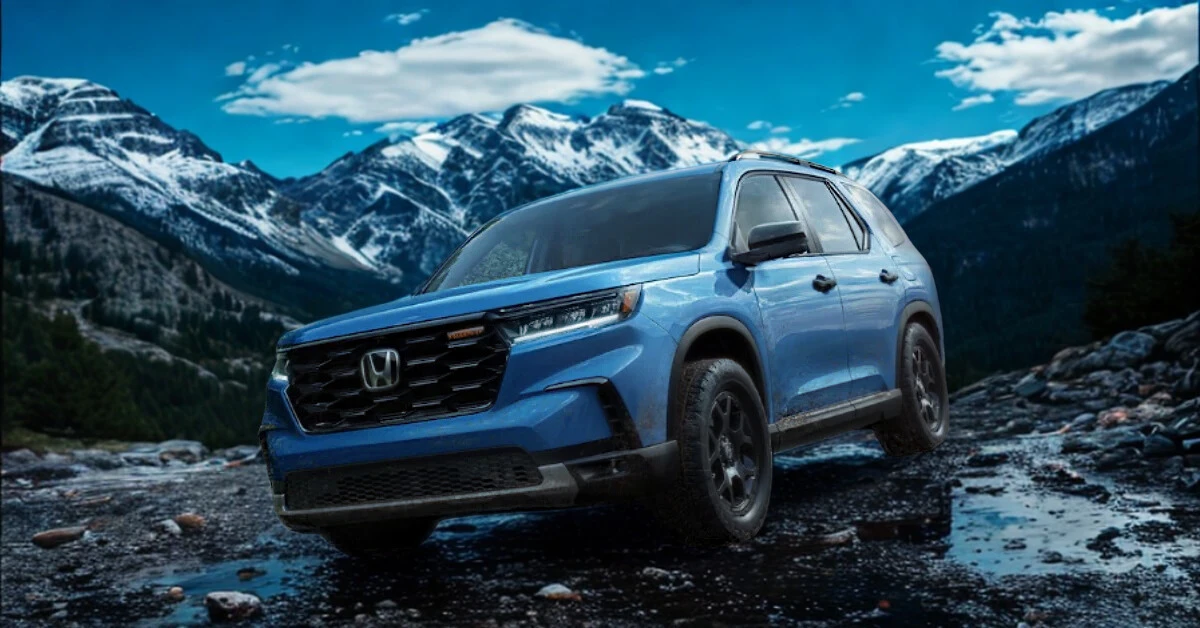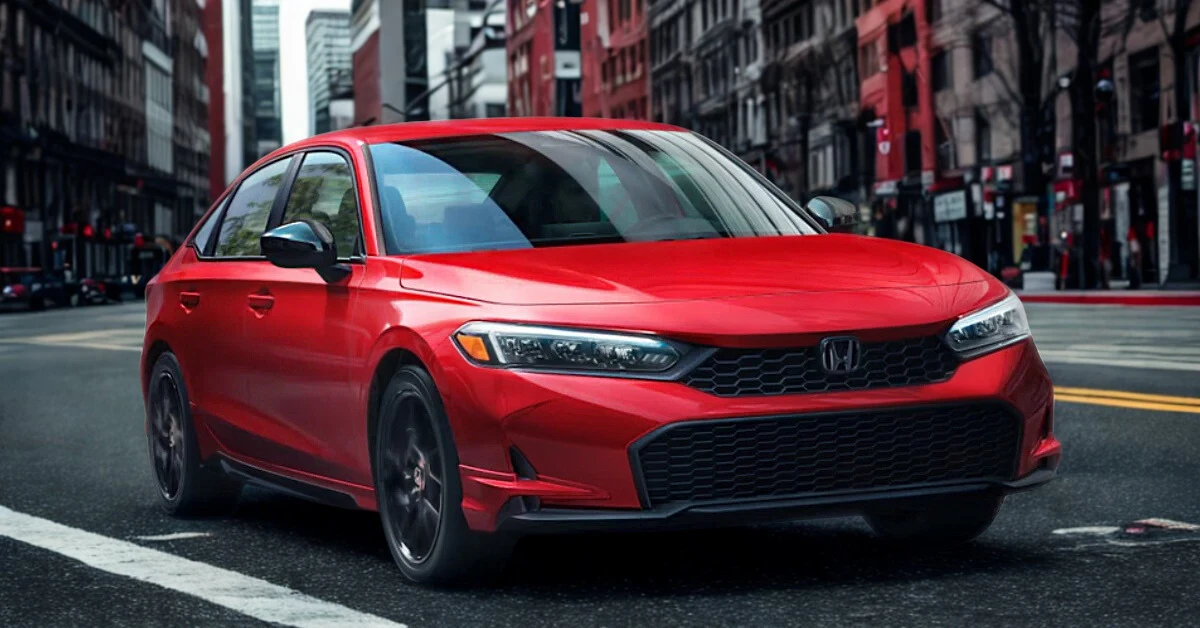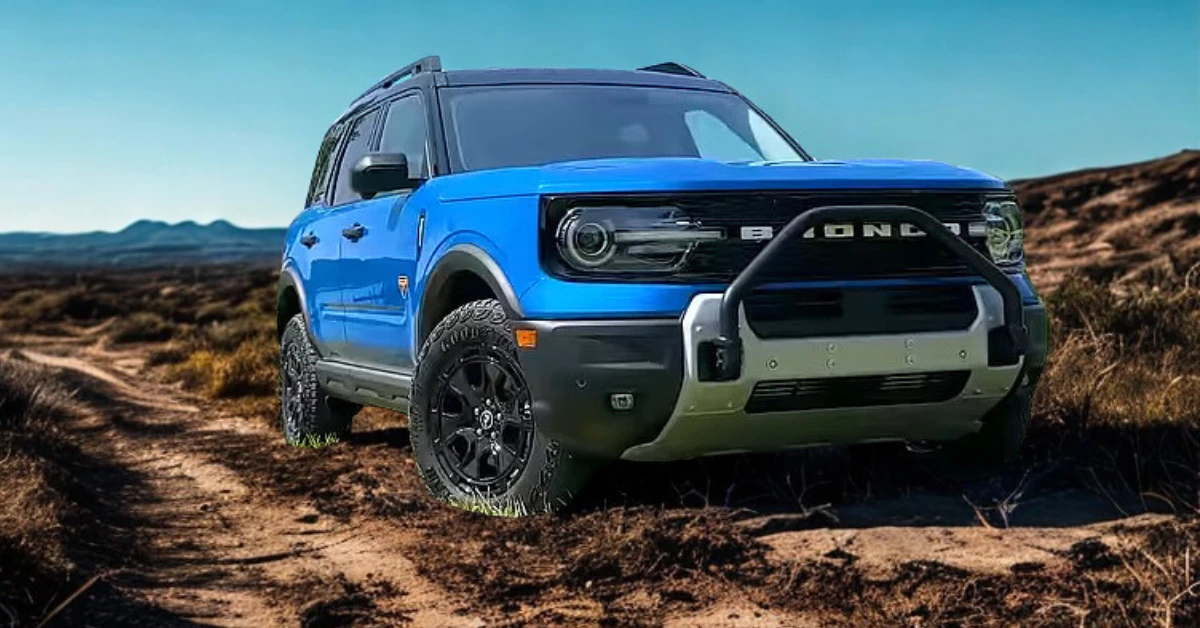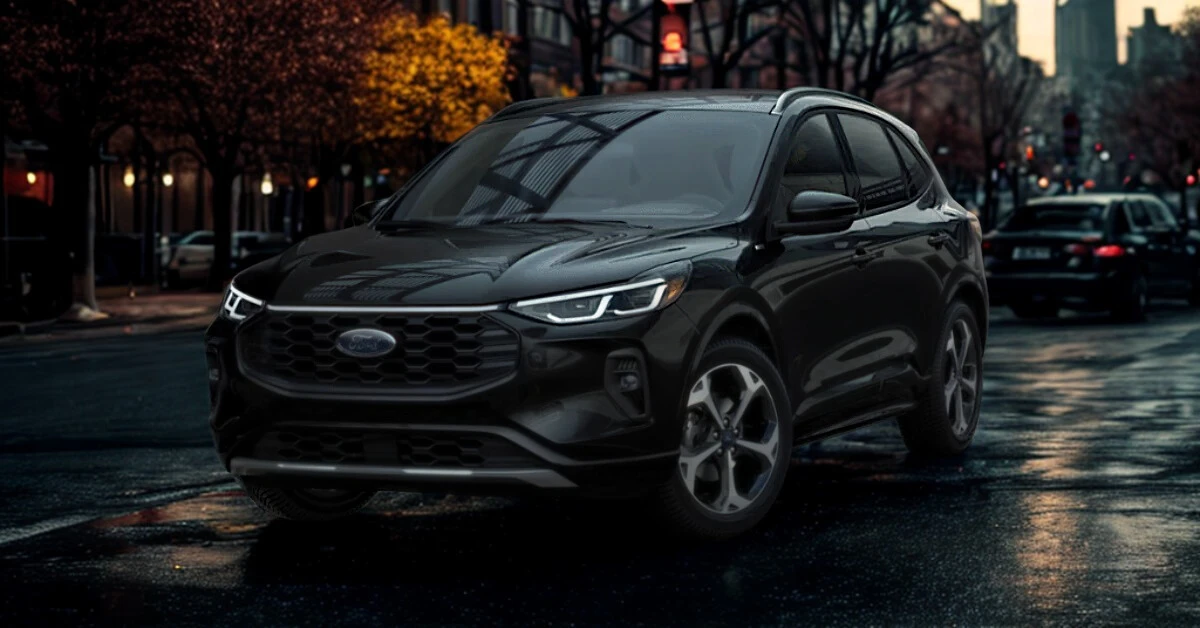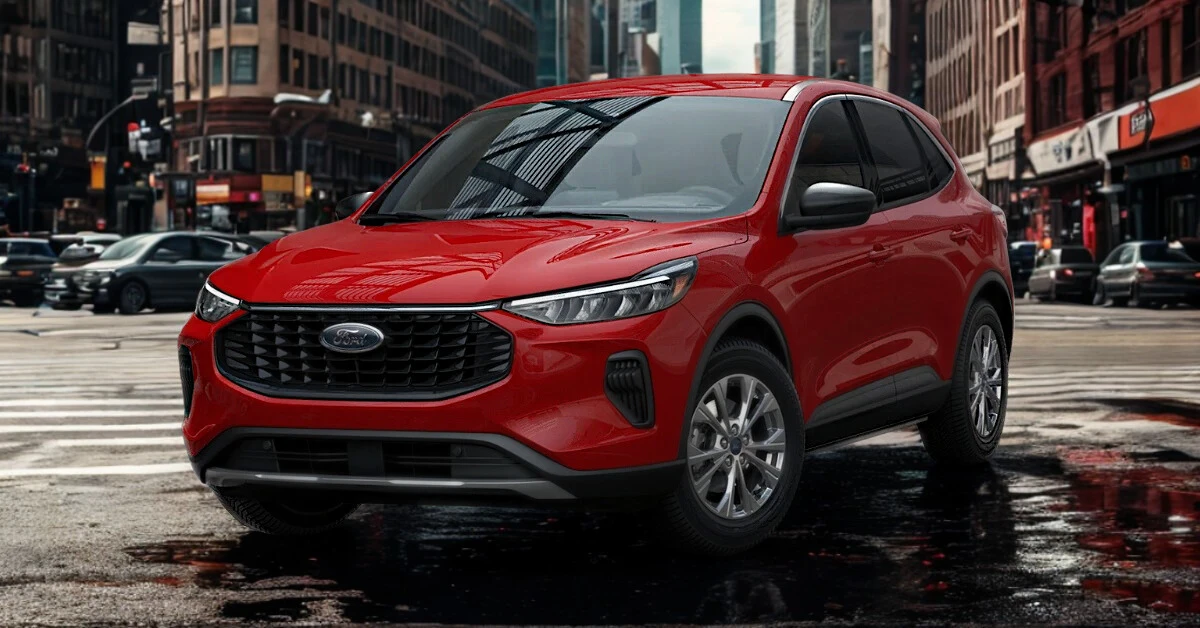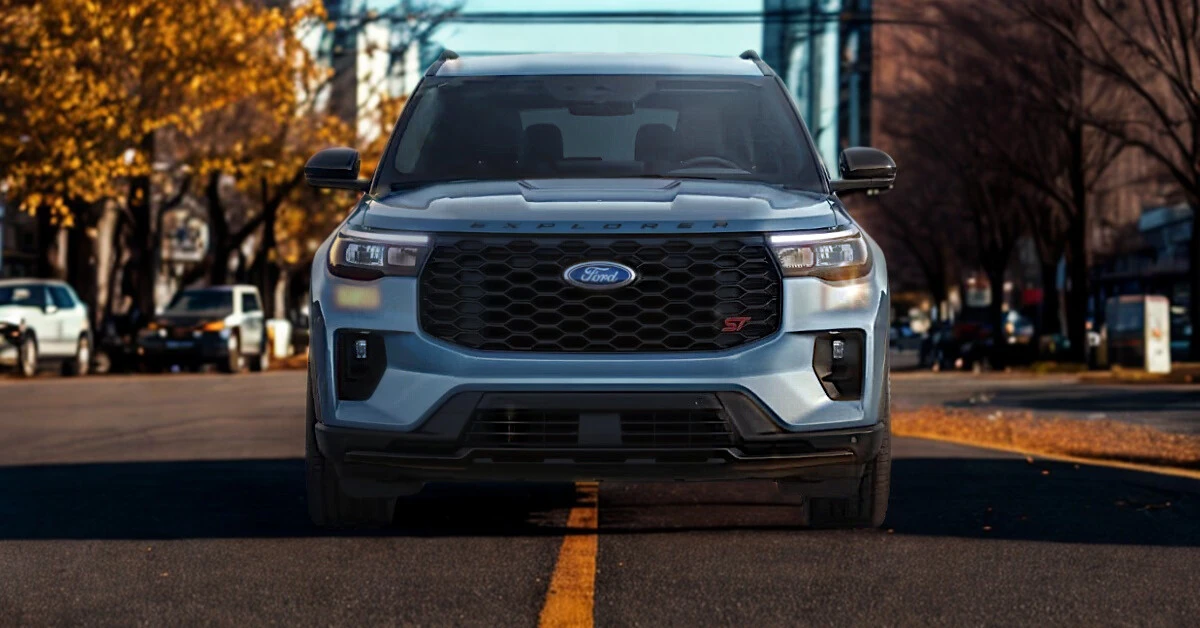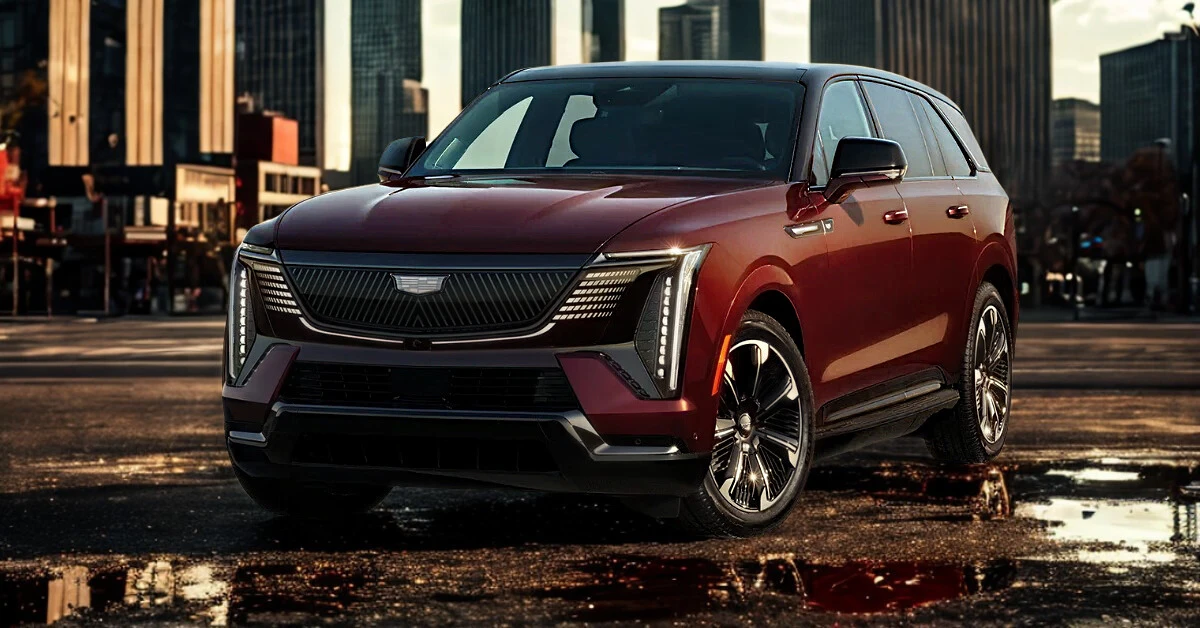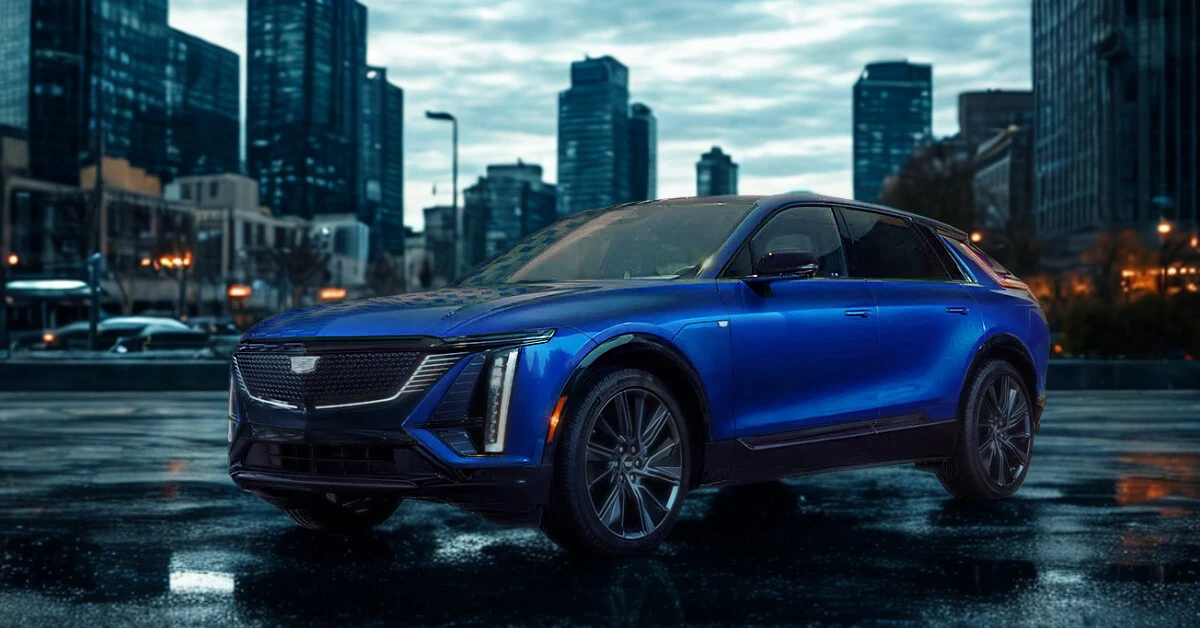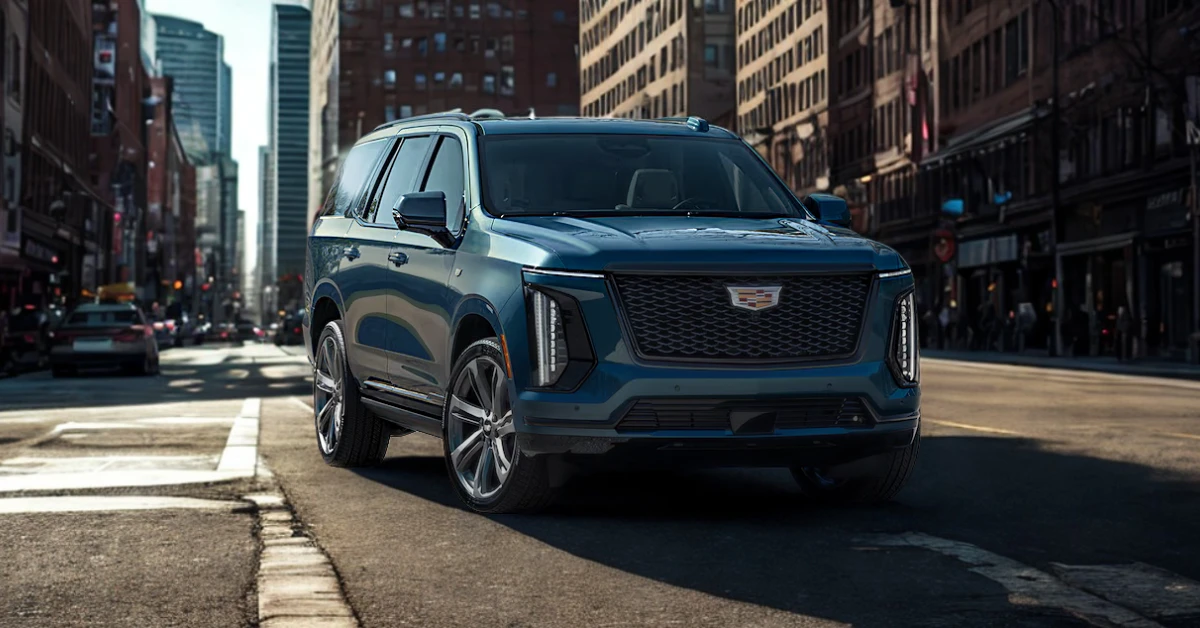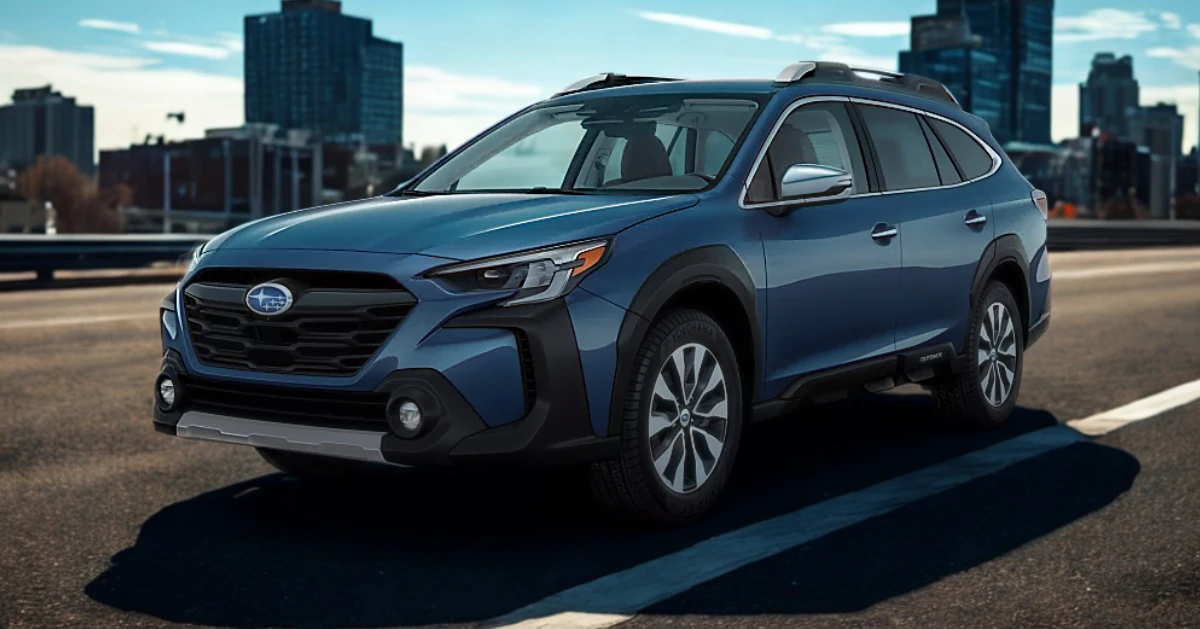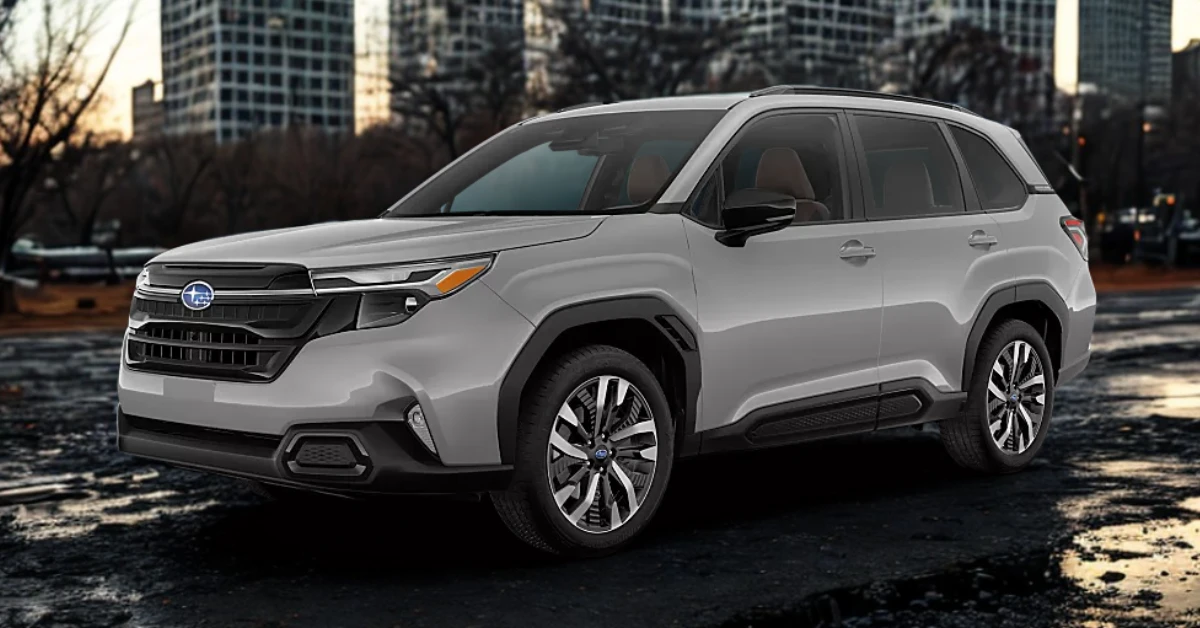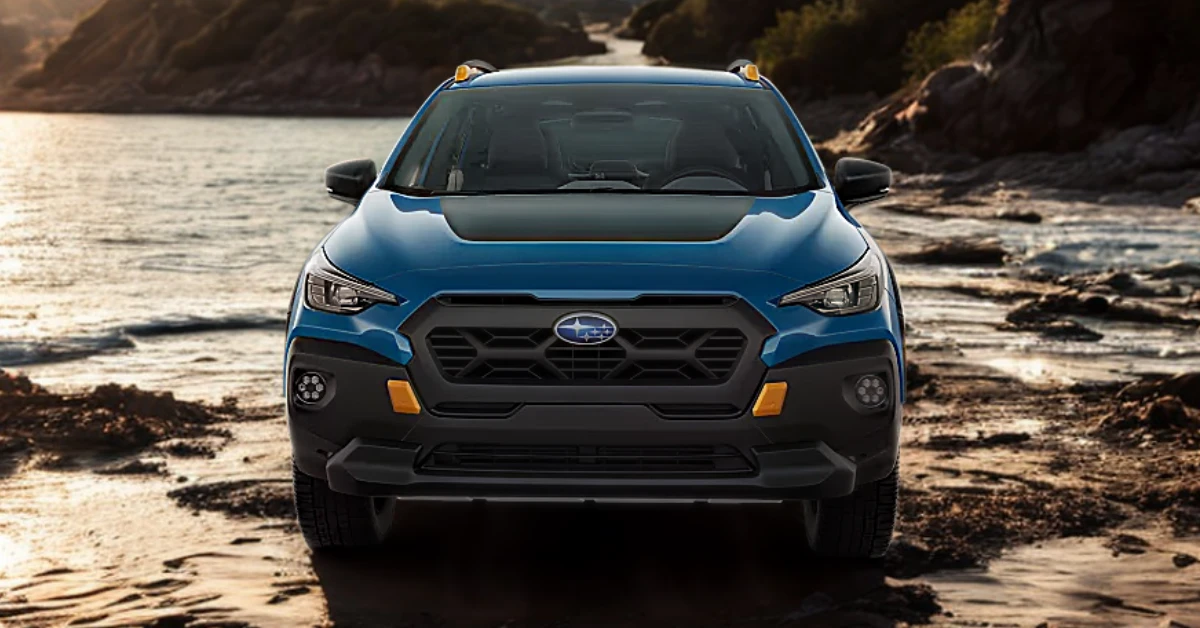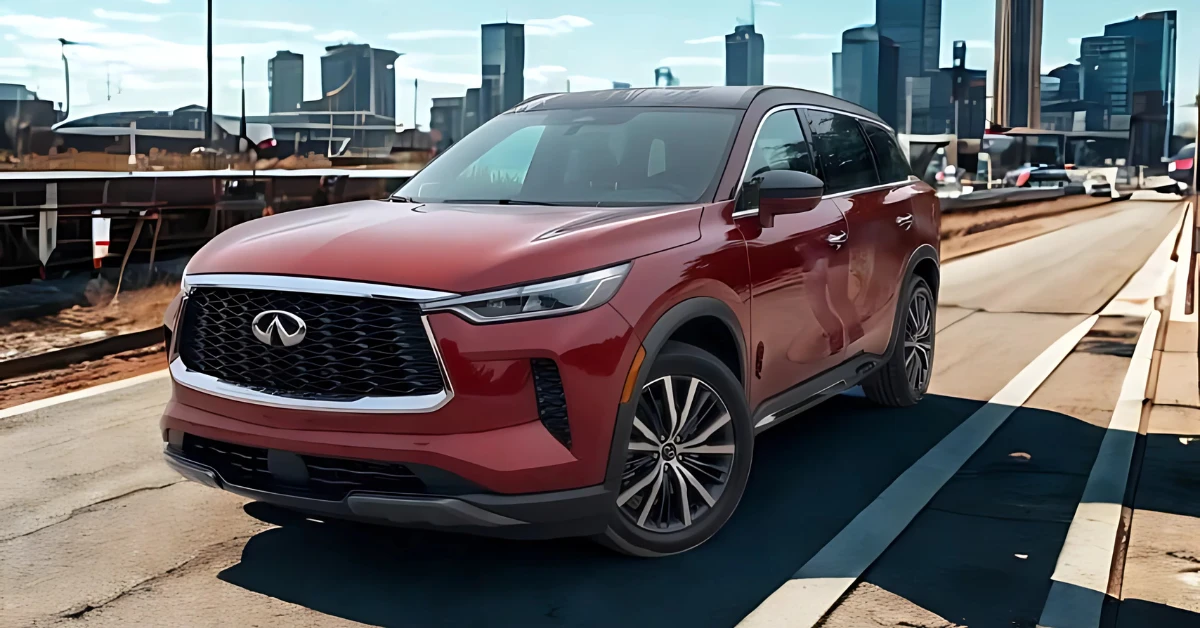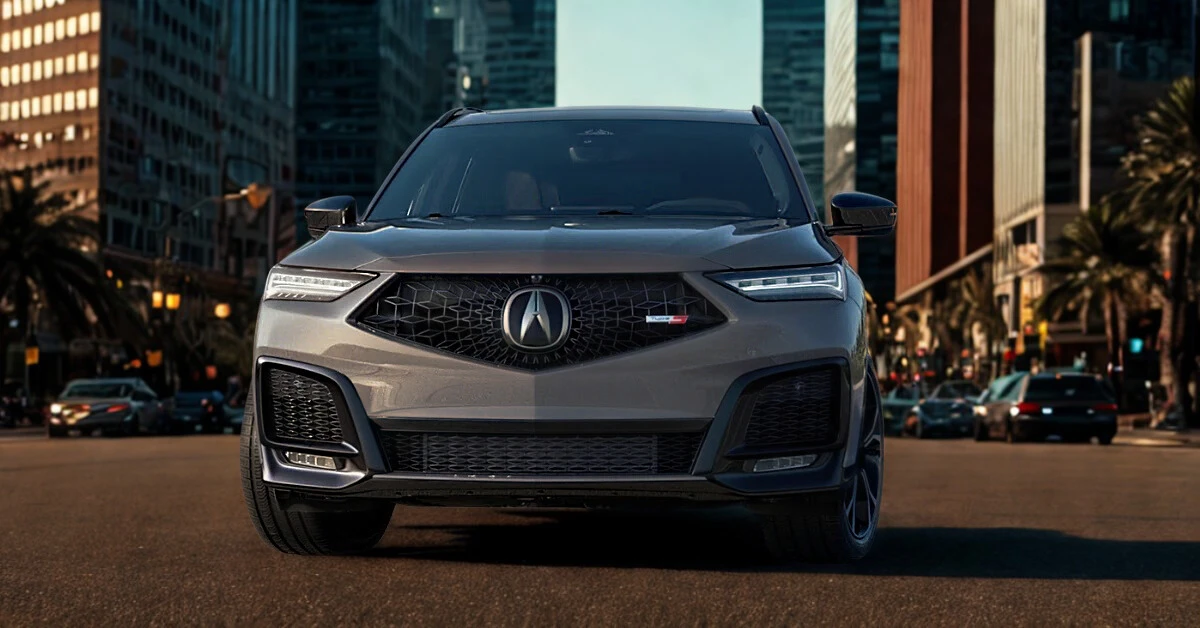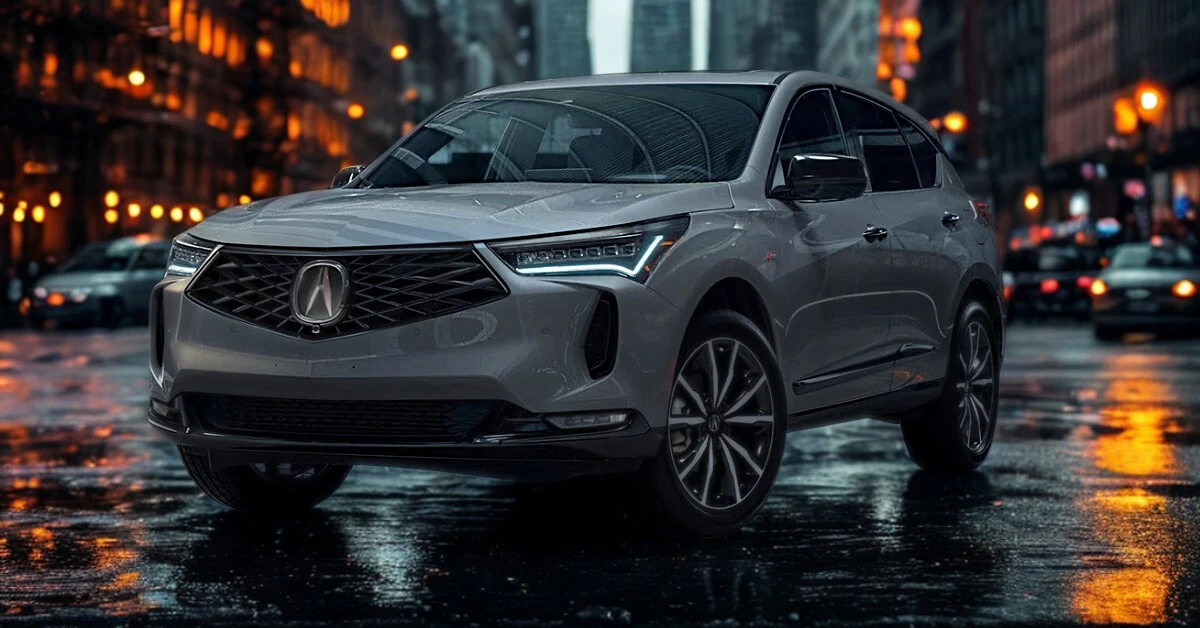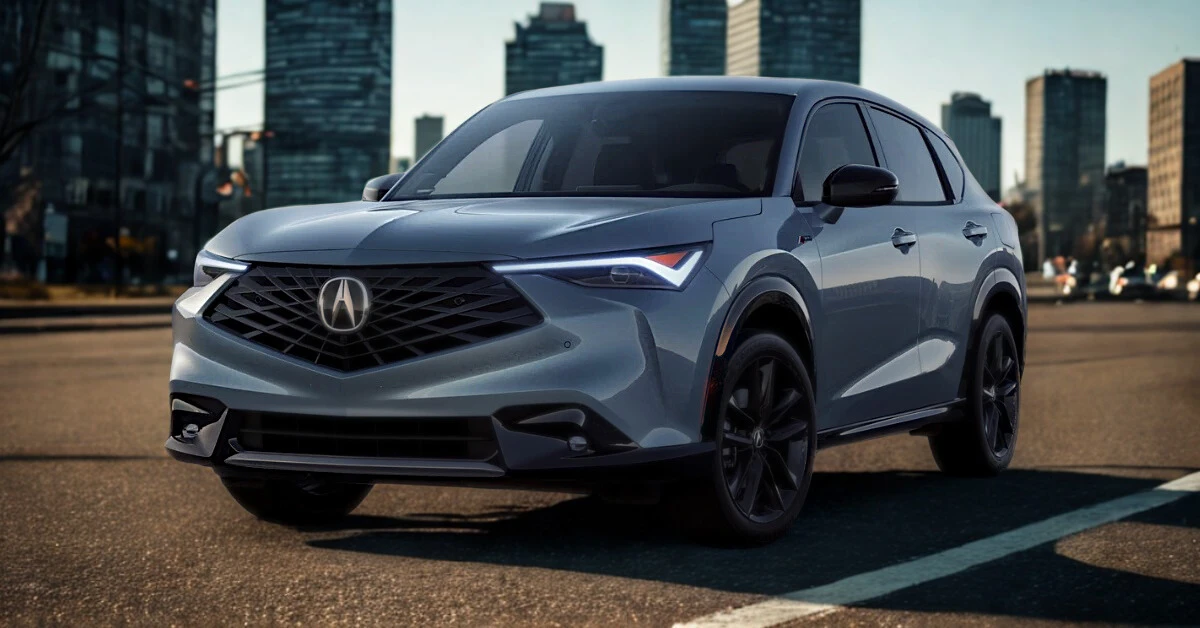2025 Mitsubishi Outlander Specifications
- POWERTRAINS
- TRIMS
- COLORS
- DIMENSIONS
| Specification | ES FWD | ES S-AWC | SE FWD | SE S-AWC | Trail Edition S-AWC | SEL FWD | SEL S-AWC | Platinum Edition S-AWC |
|---|---|---|---|---|---|---|---|---|
| Base Price | $31,535 | $33,335 | $34,285 | $36,085 | $39,900 | $38,885 | $40,685 | $45,035 |
| Engine Type | Regular Unleaded I-4 | Regular Unleaded I-4 | Regular Unleaded I-4 | Regular Unleaded I-4 | Regular Unleaded I-4 | Regular Unleaded I-4 | Regular Unleaded I-4 | Regular Unleaded I-4 |
| Displacement | 2.5L/152 cu. in. | 2.5L/152 cu. in. | 2.5L/152 cu. in. | 2.5L/152 cu. in. | 2.5L/152 cu. in. | 2.5L/152 cu. in. | 2.5L/152 cu. in. | 2.5L/152 cu. in. |
| Fuel System | Gasoline Direct Injection | Gasoline Direct Injection | Gasoline Direct Injection | Gasoline Direct Injection | Gasoline Direct Injection | Gasoline Direct Injection | Gasoline Direct Injection | Gasoline Direct Injection |
| Horsepower | 181 @ 6000 rpm | 181 @ 6000 rpm | 181 @ 6000 rpm | 181 @ 6000 rpm | 181 @ 6000 rpm | 181 @ 6000 rpm | 181 @ 6000 rpm | 181 @ 6000 rpm |
| Torque | 181 lb-ft @ 3600 rpm | 181 lb-ft @ 3600 rpm | 181 lb-ft @ 3600 rpm | 181 lb-ft @ 3600 rpm | 181 lb-ft @ 3600 rpm | 181 lb-ft @ 3600 rpm | 181 lb-ft @ 3600 rpm | 181 lb-ft @ 3600 rpm |
| Transmission | CVT w/OD | CVT w/OD | CVT w/OD | CVT w/OD | CVT w/OD | CVT w/OD | CVT w/OD | CVT w/OD |
| Transmission Detail | 8-Speed Continuously Variable (CVT) w/ Paddle Shifters | 8-Speed Continuously Variable (CVT) w/ Paddle Shifters | 8-Speed Continuously Variable (CVT) w/ Paddle Shifters | 8-Speed Continuously Variable (CVT) w/ Paddle Shifters | 8-Speed Continuously Variable (CVT) w/ Paddle Shifters | 8-Speed Continuously Variable (CVT) w/ Paddle Shifters | 8-Speed Continuously Variable (CVT) w/ Paddle Shifters | 8-Speed Continuously Variable (CVT) w/ Paddle Shifters |
| Drive Type | Front-Wheel Drive | Four-Wheel Drive (S-AWC) | Front-Wheel Drive | Four-Wheel Drive (S-AWC) | Four-Wheel Drive (S-AWC) | Front-Wheel Drive | Four-Wheel Drive (S-AWC) | Four-Wheel Drive (S-AWC) |
| Drive Modes | Tarmac, Gravel, Snow, Normal, Eco | Tarmac, Gravel, Snow, Normal, Eco, Mud | Tarmac, Gravel, Snow, Normal, Eco | Tarmac, Gravel, Snow, Normal, Eco, Mud | Tarmac, Gravel, Snow, Normal, Eco, Mud | Tarmac, Gravel, Snow, Normal, Eco | Tarmac, Gravel, Snow, Normal, Eco, Mud | Tarmac, Gravel, Snow, Normal, Eco, Mud |
| Fuel Economy (city/hwy/combined) | 24/31/27 mpg (2024) | 24/30/26 mpg (2024) | 24/31/27 mpg (2024) | 24/30/26 mpg (2024) | 24/30/26 mpg (2024) | 24/31/27 mpg (2024) | 24/30/26 mpg (2024) | 24/30/26 mpg (2024) |
| Fuel Tank Capacity | 14.5 gal. | 14.5 gal. | 14.5 gal. | 14.5 gal. | 14.5 gal. | 14.5 gal. | 14.5 gal. | 14.5 gal. |
| Range (city/hwy) | 348/449.5 miles | 348/435 miles | 348/449.5 miles | 348/435 miles | 348/435 miles | 348/449.5 miles | 348/435 miles | 348/435 miles |
| Max Towing Capacity | 2,000 lbs | 2,000 lbs | 2,000 lbs | 2,000 lbs | 2,000 lbs | 2,000 lbs | 2,000 lbs | 2,000 lbs |
| Curb Weight | 3,593 lbs | 3,714 lbs | 3,637 lbs | 3,759 lbs | 3,759 lbs | 3,681 lbs | 3,803 lbs | 3,803 lbs |
| Suspension Type (F/R) | Strut / Multi-Link | Strut / Multi-Link | Strut / Multi-Link | Strut / Multi-Link | Strut / Multi-Link | Strut / Multi-Link | Strut / Multi-Link | Strut / Multi-Link |
| Special Features | Brake Actuated Limited Slip Differential | Brake Actuated Limited Slip Differential | Brake Actuated Limited Slip Differential | Brake Actuated Limited Slip Differential | Brake Actuated Limited Slip Differential | Brake Actuated Limited Slip Differential | Brake Actuated Limited Slip Differential | Brake Actuated Limited Slip Differential |
Interior Features
| Feature | ES FWD | ES S-AWC | SE FWD | SE S-AWC | Trail Edition S-AWC | SEL FWD | SEL S-AWC | Platinum Edition S-AWC |
|---|---|---|---|---|---|---|---|---|
| Seating Capacity | 7 | 7 | 7 | 7 | 7 | 7 | 7 | 7 |
| Seating Material | Cloth Fabric | Cloth Fabric | Synthetic Leather | Synthetic Leather | Synthetic Leather | Leather Appointed | Leather Appointed | Leather Appointed |
| Front Seats | Driver w/Power Lumbar | Heated, Driver w/Power Lumbar | Heated, 8-way Power Driver w/Power Lumbar | Heated, 8-way Power Driver w/Power Lumbar | Heated, 8-way Power Driver w/Power Lumbar | Heated, 8-way Power Driver w/Power Lumbar, 4-way Power Passenger | Heated, 8-way Power Driver w/Power Lumbar, 4-way Power Passenger, Driver Memory | Heated & Ventilated, 8-way Power Driver w/Power Lumbar, 4-way Power Passenger, Driver Memory |
| 2nd Row Seats | 40-20-40 Split | 40-20-40 Split | 40-20-40 Split | 40-20-40 Split | 40-20-40 Split | 40-20-40 Split, Heated | 40-20-40 Split, Heated | 40-20-40 Split, Heated |
| 3rd Row Seats | 50-50 Split | 50-50 Split | 50-50 Split | 50-50 Split | 50-50 Split | 50-50 Split | 50-50 Split | 50-50 Split |
| Steering Wheel | Urethane | Urethane | Leather | Leather | Leather | Heated Leather | Heated Leather | Heated Leather |
| 2nd Row Sun Blinds | Not Standard | Not Standard | Not Standard | Not Standard | Not Standard | Standard | Standard | Standard |
| Climate Control | Dual Zone Auto | Dual Zone Auto | Dual Zone Auto | Dual Zone Auto | Dual Zone Auto | Dual Zone Auto w/Rear HVAC | Dual Zone Auto w/Rear HVAC | Dual Zone Auto w/Rear HVAC |
| Interior Trim | Leatherette Instrument Panel, Piano Black Accents | Leatherette Instrument Panel, Piano Black Accents | Leatherette Instrument Panel, Piano Black Accents | Leatherette Instrument Panel, Piano Black Accents | Leatherette Instrument Panel, Piano Black Accents | Leatherette Instrument Panel, Piano Black/Aluminum Accents | Leatherette Instrument Panel, Piano Black/Aluminum Accents | Leatherette Instrument Panel, Piano Black/Metal-Look Accents |
Technology
| Feature | ES FWD | ES S-AWC | SE FWD | SE S-AWC | Trail Edition S-AWC | SEL FWD | SEL S-AWC | Platinum Edition S-AWC |
|---|---|---|---|---|---|---|---|---|
| Touchscreen | 12.3″ Navigation | 12.3″ Navigation | 12.3″ Navigation | 12.3″ Navigation | 12.3″ Navigation | 12.3″ Navigation | 12.3″ Navigation | 12.3″ Navigation |
| Audio System | Dynamic Sound Yamaha Premium (8 speakers) | Dynamic Sound Yamaha Premium (8 speakers) | Dynamic Sound Yamaha Premium (8 speakers) | Dynamic Sound Yamaha Premium (8 speakers) | Dynamic Sound Yamaha Premium (8 speakers) | Dynamic Sound Yamaha Premium (8 speakers) | Dynamic Sound Yamaha Premium (8 speakers) | Dynamic Sound Yamaha Ultimate (12 speakers) |
| Apple CarPlay/Android Auto | Wireless | Wireless | Wireless | Wireless | Wireless | Wireless | Wireless | Wireless |
| Voice Recognition | Standard | Standard | Standard | Standard | Standard | Standard | Standard | Standard |
| Navigation | Standard | Standard | Standard with Real-Time Traffic | Standard with Real-Time Traffic | Standard with Real-Time Traffic | Standard with Real-Time Traffic | Standard with Real-Time Traffic | Standard with Real-Time Traffic |
| HD Radio | Standard | Standard | Standard | Standard | Standard | Standard | Standard | Standard |
| USB Ports | 2 USB-C | 2 USB-C | 2 USB-C | 2 USB-C | 2 USB-C | 2 USB-C | 2 USB-C | 2 USB-C |
| Head-Up Display | Not Standard | Not Standard | Not Standard | Not Standard | Not Standard | Not Standard | Not Standard | Standard |
| Digital Instrument Cluster | Standard | Standard | Standard | Standard | Standard | Standard | Redundant Digital Speedometer | Redundant Digital Speedometer |
| Mitsubishi Connect | 5-year safeguard trial, 1-year remote services | 5-year safeguard trial, 1-year remote services | 5-year safeguard trial, 1-year remote services | 5-year safeguard trial, 1-year remote services | 5-year safeguard trial, 1-year remote services | 5-year safeguard trial, 1-year remote services | 5-year safeguard trial, 1-year remote services | 5-year safeguard trial, 1-year remote services |
| SiriusXM | 90-day subscription | 90-day subscription | 90-day subscription | 90-day subscription | 90-day subscription | 90-day subscription | 90-day subscription | 90-day subscription |
Safety & Driver Assistance
| Feature | ES FWD | ES S-AWC | SE FWD | SE S-AWC | Trail Edition S-AWC | SEL FWD | SEL S-AWC | Platinum Edition S-AWC |
|---|---|---|---|---|---|---|---|---|
| Adaptive Cruise Control | With Traffic Stop-Go | With Traffic Stop-Go | With Traffic Stop-Go | With Traffic Stop-Go | With Traffic Stop-Go | With Traffic Stop-Go | With Traffic Stop-Go | With Traffic Stop-Go |
| Forward Collision Mitigation | Standard | Standard | Standard | Standard | Standard | Standard | Standard | Standard |
| Lane Departure Warning | Standard | Standard | Standard | Not Standard | Not Standard | Not Standard | Not Standard | Not Standard |
| Lane Keeping Assist | Not Standard | Not Standard | Not Standard | Standard | Standard | Not Standard | Standard | Standard |
| Lane Departure Prevention | Not Standard | Not Standard | Not Standard | Standard | Standard | Not Standard | Standard | Standard |
| Blind Spot Warning | Standard | Standard | Not Standard | Not Standard | Not Standard | Not Standard | Not Standard | Not Standard |
| Lane Change Assist | Not Standard | Not Standard | Standard | Standard | Standard | Standard | Standard | Standard |
| Rear Cross Traffic Alert | Standard | Standard | Standard | Standard | Standard | Standard | Standard | Standard |
| Driver Monitoring Alert | Standard | Standard | Standard | Standard | Standard | Standard | Standard | Standard |
| Front Parking Sensors | Not Standard | Not Standard | Not Standard | Standard | Standard | Not Standard | Standard | Standard |
| Rear Parking Sensors | Standard | Standard | Standard | Standard | Standard | Standard | Standard | Standard |
| Surround View Camera | Not Standard | Not Standard | Not Standard | Aerial View Camera System | Aerial View Camera System | Not Standard | Aerial View Camera System | Aerial View Camera System |
| Back-Up Camera | Standard | Standard | Standard | Standard | Standard | Standard | Standard | Standard |
| Airbags | Front, Side, Knee, Curtain | Front, Side, Knee, Curtain | Front, Side, Knee, Curtain | Front, Side, Knee, Curtain | Front, Side, Knee, Curtain | Front, Side, Knee, Curtain | Front, Side, Knee, Curtain | Front, Side, Knee, Curtain |
Exterior Features
| Feature | ES FWD | ES S-AWC | SE FWD | SE S-AWC | Trail Edition S-AWC | SEL FWD | SEL S-AWC | Platinum Edition S-AWC |
|---|---|---|---|---|---|---|---|---|
| Sunroof | Not Standard | Not Standard | Not Standard | Not Standard | Panoramic | Panoramic | Panoramic | Panoramic |
| Power Liftgate | Not Standard | Not Standard | Standard | Standard | Standard | Standard | Standard | Standard |
| Side Mirrors | Body-Colored, Power | Body-Colored, Power | Body-Colored, Power, Heated, Power Folding | Body-Colored, Power, Heated, Power Folding | Black, Power, Heated, Power Folding | Body-Colored, Power, Heated, Power Folding w/Tilt Down | Body-Colored, Power, Heated, Power Folding w/Tilt Down | Body-Colored, Power, Heated, Power Folding w/Tilt Down |
| LED Headlights | Auto On/Off | Auto On/Off | Auto On/Off | Auto On/Off | Auto On/Off | Auto On/Off | Auto On/Off | Auto On/Off |
| Auto High-Beam | Standard | Standard | Standard | Standard | Standard | Standard | Standard | Standard |
| Fog Lights | Not Standard | Not Standard | Not Standard | Not Standard | Standard | Not Standard | Standard | Standard |
| Wipers | Speed Sensitive Variable Intermittent | Speed Sensitive Variable Intermittent w/Heated Wiper Park | Speed Sensitive Rain Detecting | Speed Sensitive Rain Detecting w/Heated Wiper Park | Speed Sensitive Rain Detecting w/Heated Wiper Park | Speed Sensitive Rain Detecting | Speed Sensitive Rain Detecting w/Heated Wiper Park | Speed Sensitive Rain Detecting w/Heated Wiper Park |
| Headlight Washers | Not Standard | Standard | Not Standard | Standard | Standard | Not Standard | Standard | Standard |
| Bodyside Cladding | Black | Black | Black | Black | Black | Body-Colored | Body-Colored | Body-Colored |
| Window Trim | Chrome | Chrome | Chrome | Chrome | Dark Chrome | Chrome | Chrome | Chrome |
| Door Handles | Body-Colored | Body-Colored | Body-Colored | Body-Colored | Black | Body-Colored | Body-Colored | Body-Colored |
Suspension & Chassis
| Feature | ES FWD | ES S-AWC | SE FWD | SE S-AWC | Trail Edition S-AWC | SEL FWD | SEL S-AWC | Platinum Edition S-AWC |
|---|---|---|---|---|---|---|---|---|
| Front Suspension | Strut | Strut | Strut | Strut | Strut | Strut | Strut | Strut |
| Rear Suspension | Multi-Link | Multi-Link | Multi-Link | Multi-Link | Multi-Link | Multi-Link | Multi-Link | Multi-Link |
| Shock Absorbers | Gas-Pressurized | Gas-Pressurized | Gas-Pressurized | Gas-Pressurized | Gas-Pressurized | Gas-Pressurized | Gas-Pressurized | Gas-Pressurized |
| Turning Diameter | 36.1 ft | 36.1 ft | 36.1 ft | 36.1 ft | 36.1 ft | 36.1 ft | 36.1 ft | 36.1 ft |
| Front/Rear Anti-Roll Bars | Standard | Standard | Standard | Standard | Standard | Standard | Standard | Standard |
| Brake Type | 4-Wheel Disc w/ABS | 4-Wheel Disc w/ABS | 4-Wheel Disc w/ABS | 4-Wheel Disc w/ABS | 4-Wheel Disc w/ABS | 4-Wheel Disc w/ABS | 4-Wheel Disc w/ABS | 4-Wheel Disc w/ABS |
| Front Brake Rotors | 13.8 in. | 13.8 in. | 13.8 in. | 13.8 in. | 13.8 in. | 13.8 in. | 13.8 in. | 13.8 in. |
| Rear Brake Rotors | 13.0 in. | 13.0 in. | 13.0 in. | 13.0 in. | 13.0 in. | 13.0 in. | 13.0 in. | 13.0 in. |
| Electronic Parking Brake | Standard | Standard | Standard | Standard | Standard | Standard | Standard | Standard |
| Brake Assist | Standard | Standard | Standard | Standard | Standard | Standard | Standard | Standard |
| Hill Hold Control | Standard | Standard | Standard | Standard | Standard | Standard | Standard | Standard |
| Limited Slip Differential | Brake Actuated | Brake Actuated | Brake Actuated | Brake Actuated | Brake Actuated | Brake Actuated | Brake Actuated | Brake Actuated |
Off-Road Capability
| Feature | ES FWD | ES S-AWC | SE FWD | SE S-AWC | Trail Edition S-AWC | SEL FWD | SEL S-AWC | Platinum Edition S-AWC |
|---|---|---|---|---|---|---|---|---|
| Ground Clearance | 8.3 inches | 8.3 inches | 8.4 inches | 8.4 inches | 8.4 inches | 8.4 inches | 8.4 inches | 8.4 inches |
| Off-Road Drive Modes | Gravel, Snow | Gravel, Snow, Mud | Gravel, Snow | Gravel, Snow, Mud | Gravel, Snow, Mud | Gravel, Snow | Gravel, Snow, Mud | Gravel, Snow, Mud |
| Electronic Transfer Case | N/A | Standard | N/A | Standard | Standard | N/A | Standard | Standard |
| Permanent Locking Hubs | N/A | Standard | N/A | Standard | Standard | N/A | Standard | Standard |
| Splash Guards | Not Standard | Not Standard | Not Standard | Not Standard | Standard | Not Standard | Not Standard | Not Standard |
Wheels & Tires
| Feature | ES FWD | ES S-AWC | SE FWD | SE S-AWC | Trail Edition S-AWC | SEL FWD | SEL S-AWC | Platinum Edition S-AWC |
|---|---|---|---|---|---|---|---|---|
| Wheels | 18″ x 7.5J Aluminum | 18″ x 7.5J Aluminum | 20″ x 8J Aluminum | 20″ x 8J Aluminum | 18″ x 7.5J Aluminum | 20″ x 8J Aluminum | 20″ x 8J Aluminum | 20″ x 8J Aluminum |
| Wheel Finish | Alloy | Alloy | Two-Tone Alloy | Two-Tone Alloy | Black Alloy | Two-Tone Alloy | Two-Tone Alloy | Two-Tone Alloy |
| Tires | P235/60HR18 | P235/60HR18 | P255/45WR20 | P255/45WR20 | P235/60HR18 | P255/45WR20 | P255/45WR20 | P255/45WR20 |
| Spare Tire Type | Tire Mobility Kit | Tire Mobility Kit | Tire Mobility Kit | Tire Mobility Kit | Tire Mobility Kit | Tire Mobility Kit | Tire Mobility Kit | Tire Mobility Kit |
Cargo Capacity
| Feature | ES FWD | ES S-AWC | SE FWD | SE S-AWC | Trail Edition S-AWC | SEL FWD | SEL S-AWC | Platinum Edition S-AWC |
|---|---|---|---|---|---|---|---|---|
| Behind 3rd Row | 10.9 cu. ft. | 10.9 cu. ft. | 10.9 cu. ft. | 10.9 cu. ft. | 10.9 cu. ft. | 10.9 cu. ft. | 10.9 cu. ft. | 10.9 cu. ft. |
| Behind 2nd Row | 30.6 cu. ft. | 30.6 cu. ft. | 30.6 cu. ft. | 30.6 cu. ft. | 30.6 cu. ft. | 30.6 cu. ft. | 30.6 cu. ft. | 30.6 cu. ft. |
| Behind 1st Row | 64.3 cu. ft. | 64.3 cu. ft. | 64.3 cu. ft. | 64.3 cu. ft. | 64.3 cu. ft. | 64.3 cu. ft. | 64.3 cu. ft. | 64.3 cu. ft. |
| Total Passenger Volume | 125.5 cu. ft. | 125.5 cu. ft. | 125.5 cu. ft. | 125.5 cu. ft. | 125.5 cu. ft. | 125.5 cu. ft. | 125.5 cu. ft. | 125.5 cu. ft. |
Convenience Features
| Feature | ES FWD | ES S-AWC | SE FWD | SE S-AWC | Trail Edition S-AWC | SEL FWD | SEL S-AWC | Platinum Edition S-AWC |
|---|---|---|---|---|---|---|---|---|
| HomeLink Garage Door Opener | Not Standard | Not Standard | Standard | Standard | Standard | Standard | Standard | Standard |
| Proximity Key Entry | Standard | Standard | Standard | Standard | Standard | Standard | Standard | Standard |
| Push Button Start | Standard | Standard | Standard | Standard | Standard | Standard | Standard | Standard |
| Remote Engine Start | Standard | Standard | Standard | Standard | Standard | Standard | Standard | Standard |
| Auto-Dimming Rearview Mirror | Standard | Standard | Standard | Standard | Standard | Standard | Standard | Standard |
| Memory Settings | Not Standard | Not Standard | Not Standard | Not Standard | Not Standard | Not Standard | Door Mirrors | Door Mirrors |
| Power Windows | Driver 1-Touch Up/Down | Driver 1-Touch Up/Down | Driver 1-Touch Up/Down | Driver 1-Touch Up/Down | Driver 1-Touch Up/Down | Driver 1-Touch Up/Down | Front and Rear 1-Touch Up/Down | Front and Rear 1-Touch Up/Down |
Warranty & Coverage
| Feature | ES FWD | ES S-AWC | SE FWD | SE S-AWC | Trail Edition S-AWC | SEL FWD | SEL S-AWC | Platinum Edition S-AWC |
|---|---|---|---|---|---|---|---|---|
| Basic Warranty | 5 years/60,000 miles | 5 years/60,000 miles | 5 years/60,000 miles | 5 years/60,000 miles | 5 years/60,000 miles | 5 years/60,000 miles | 5 years/60,000 miles | 5 years/60,000 miles |
| Powertrain Warranty | 10 years/100,000 miles | 10 years/100,000 miles | 10 years/100,000 miles | 10 years/100,000 miles | 10 years/100,000 miles | 10 years/100,000 miles | 10 years/100,000 miles | 10 years/100,000 miles |
| Corrosion Warranty | 7 years/100,000 miles | 7 years/100,000 miles | 7 years/100,000 miles | 7 years/100,000 miles | 7 years/100,000 miles | 7 years/100,000 miles | 7 years/100,000 miles | 7 years/100,000 miles |
| Roadside Assistance | 5 years/Unlimited miles | 5 years/Unlimited miles | 5 years/Unlimited miles | 5 years/Unlimited miles | 5 years/Unlimited miles | 5 years/Unlimited miles | 5 years/Unlimited miles | 5 years/Unlimited miles |
| Maintenance | 2 years/30,000 miles | 2 years/30,000 miles | 2 years/30,000 miles | 2 years/30,000 miles | 2 years/30,000 miles | 2 years/30,000 miles | 2 years/30,000 miles | 2 years/30,000 miles |
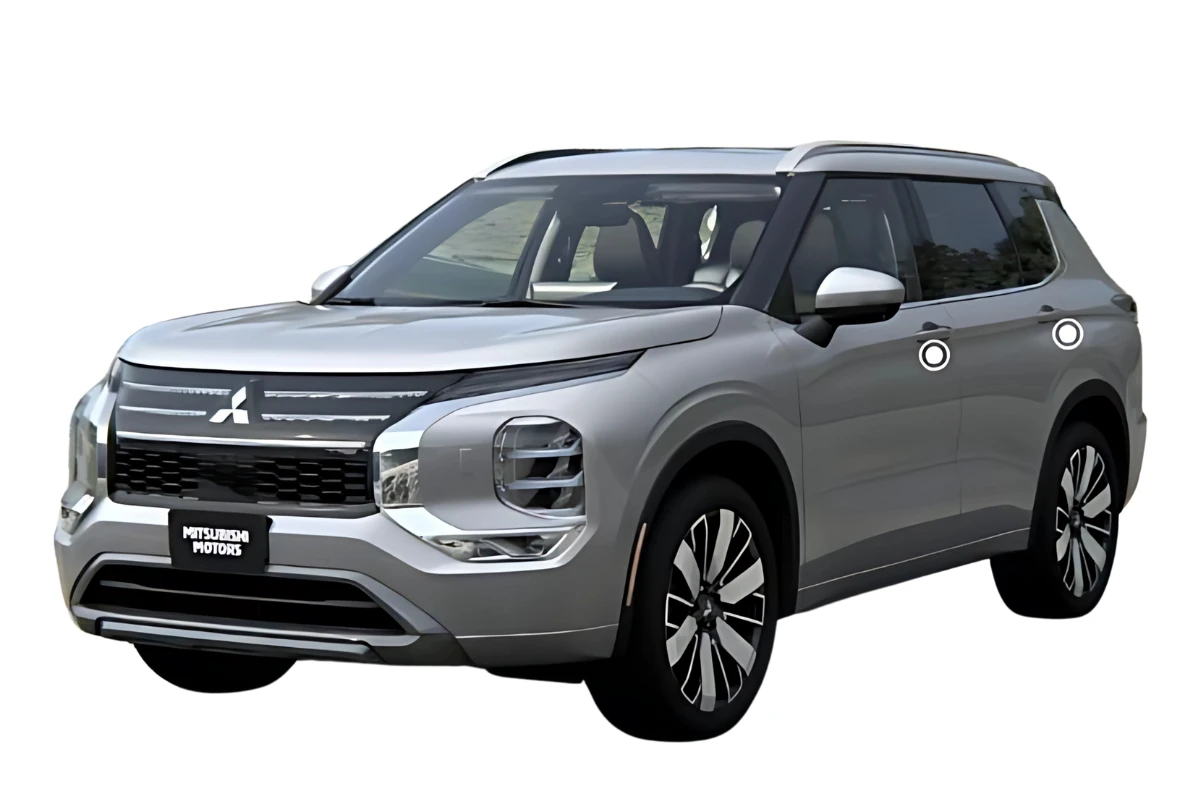
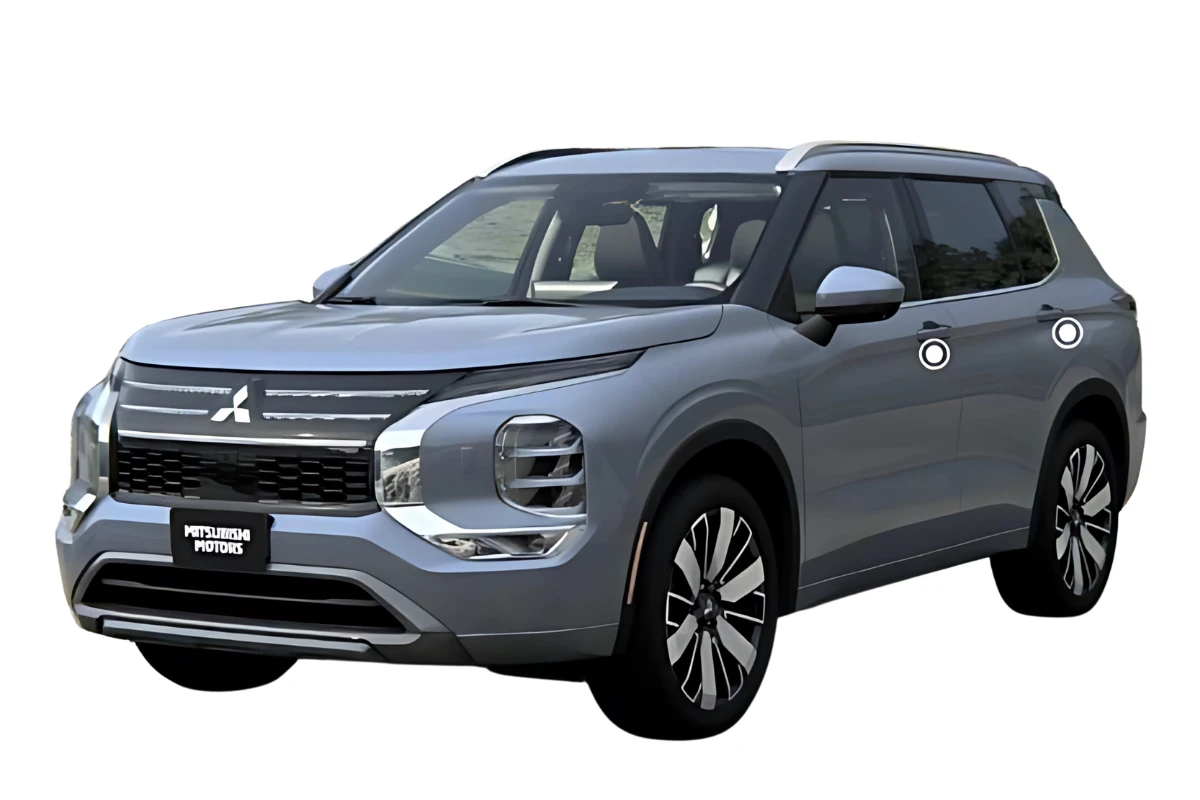
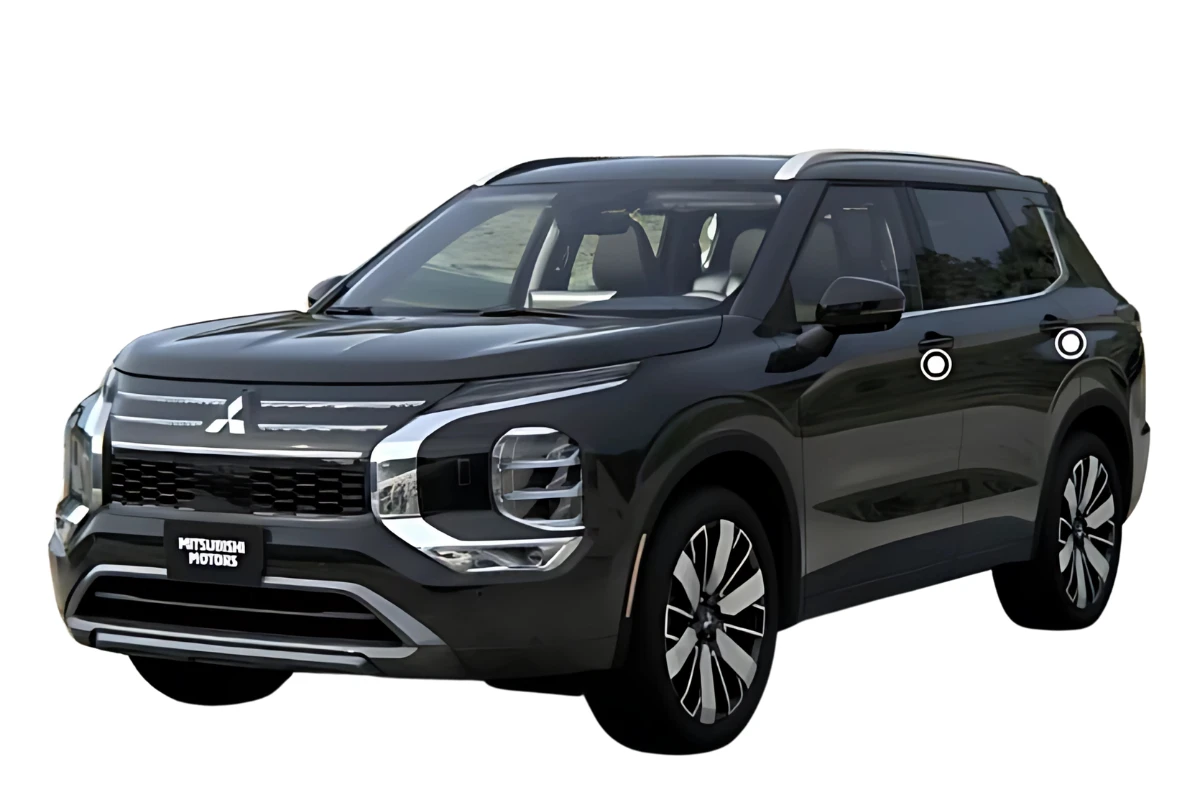
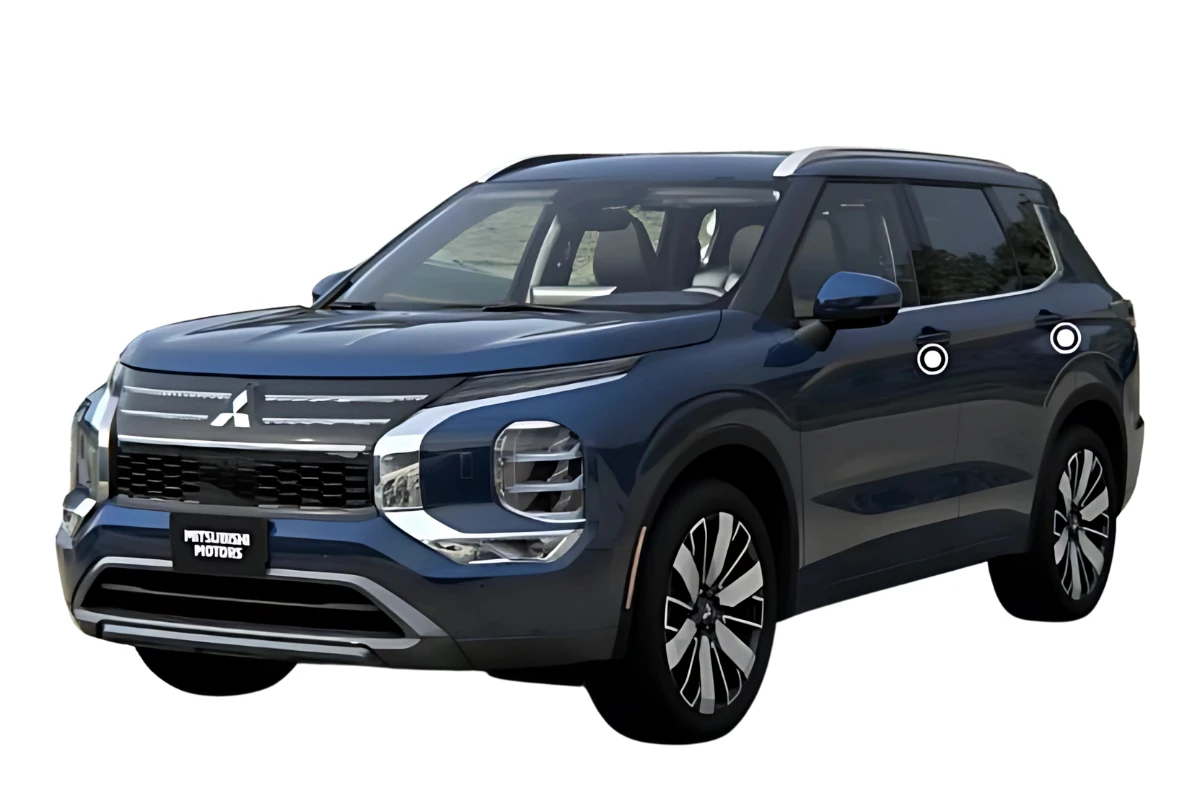
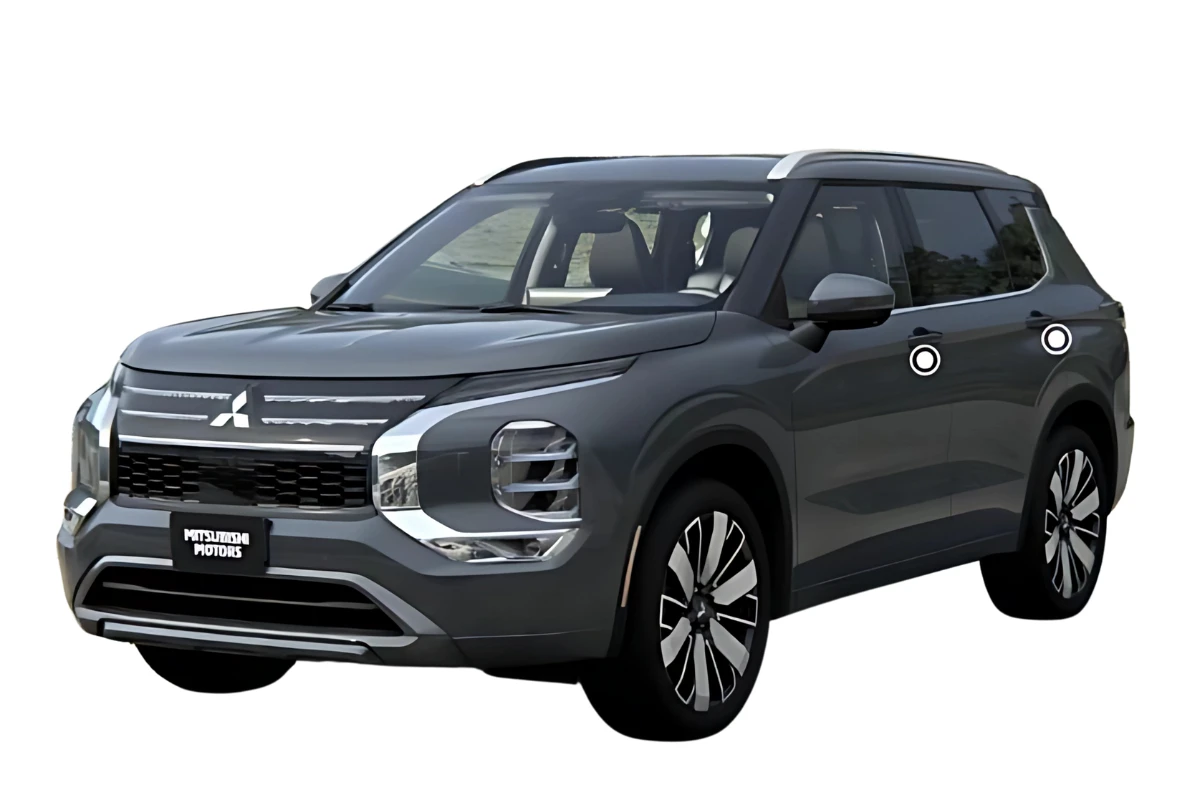

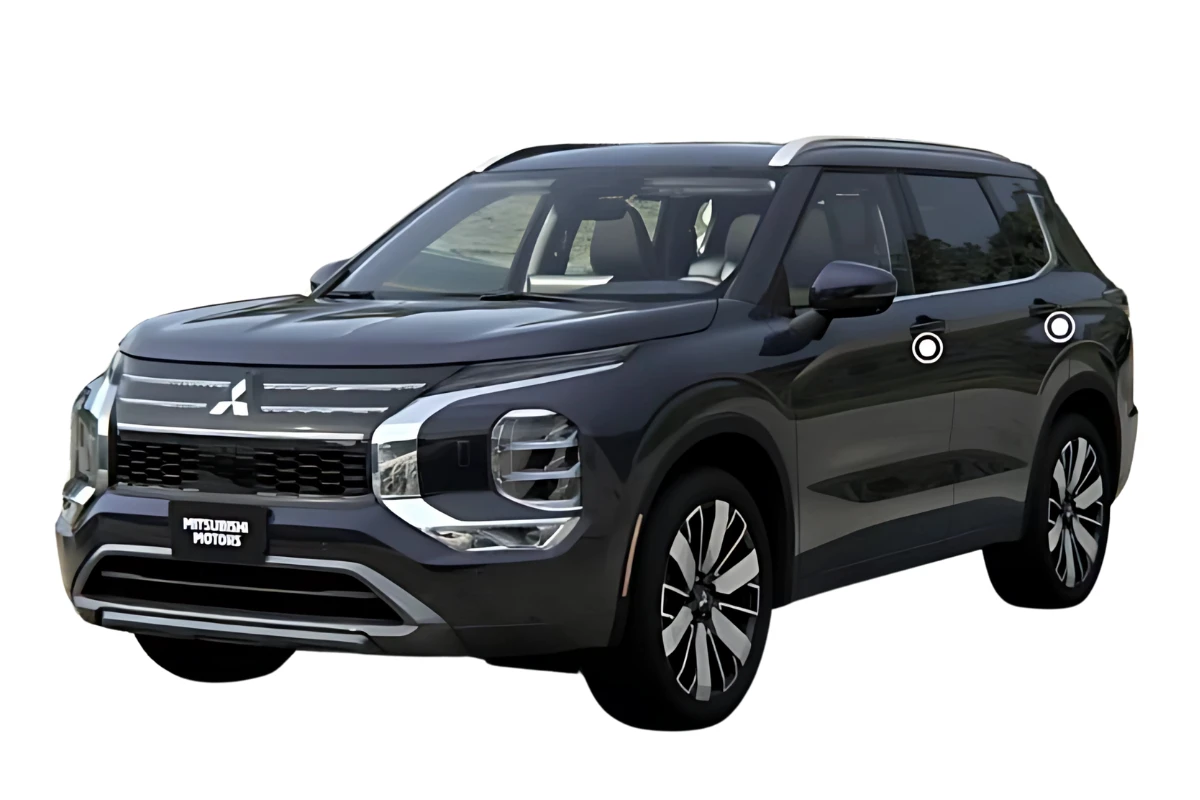
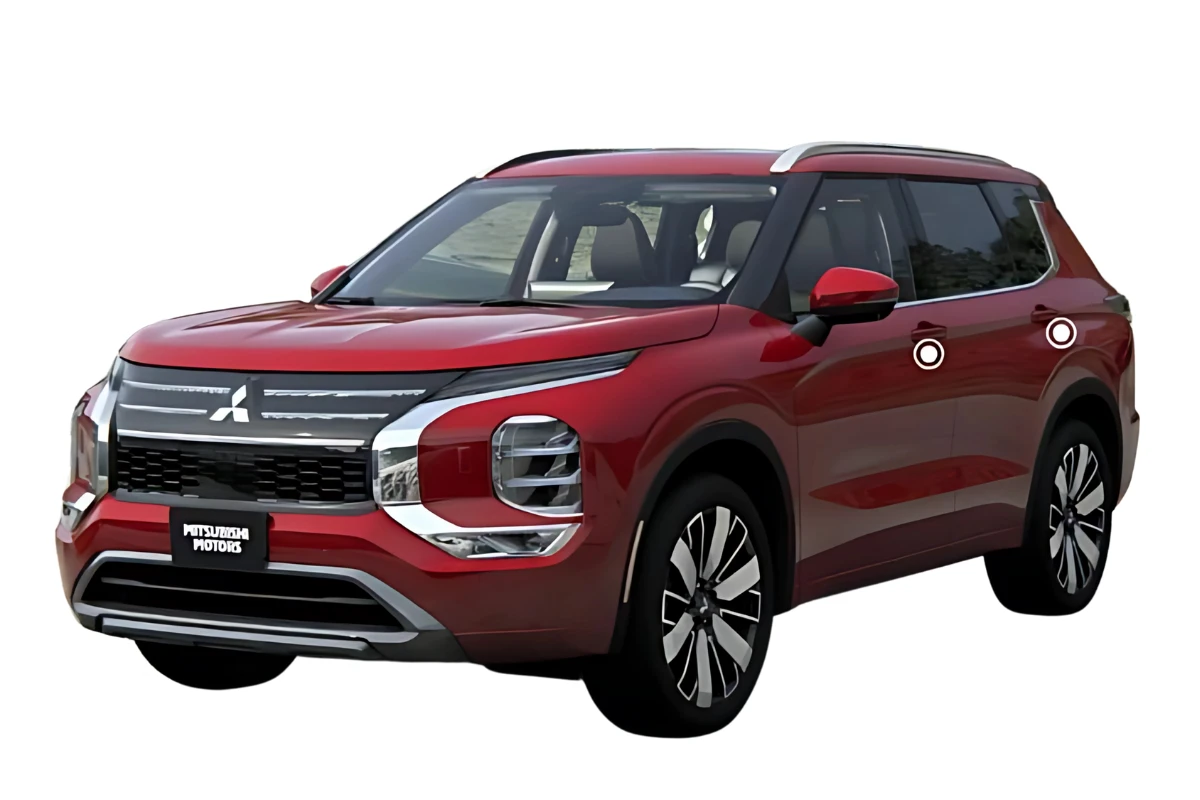
Exterior Dimensions
| Dimension | ES FWD | ES S-AWC | SE FWD | SE S-AWC | Trail Edition S-AWC | SEL FWD | SEL S-AWC | Platinum Edition S-AWC |
|---|---|---|---|---|---|---|---|---|
| Wheelbase | 106.5 in | 106.5 in | 106.5 in | 106.5 in | 106.5 in | 106.5 in | 106.5 in | 106.5 in |
| Overall Length | 185.8 in | 185.8 in | 185.8 in | 185.8 in | 185.8 in | 185.8 in | 185.8 in | 185.8 in |
| Overall Width (without mirrors) | 84.4 in | 84.4 in | 84.4 in | 84.4 in | 84.4 in | 84.4 in | 84.4 in | 84.4 in |
| Overall Height | 68.7 in | 68.7 in | 68.8 in | 68.8 in | 68.8 in | 68.8 in | 68.8 in | 68.8 in |
| Front Track Width | 62.7 in | 62.7 in | 62.7 in | 62.7 in | 62.7 in | 62.7 in | 62.7 in | 62.7 in |
| Rear Track Width | 63.1 in | 63.1 in | 63.1 in | 63.1 in | 63.1 in | 63.1 in | 63.1 in | 63.1 in |
| Ground Clearance | 8.3 in | 8.3 in | 8.4 in | 8.4 in | 8.4 in | 8.4 in | 8.4 in | 8.4 in |
| Turning Diameter (curb to curb) | 36.1 ft | 36.1 ft | 36.1 ft | 36.1 ft | 36.1 ft | 36.1 ft | 36.1 ft | 36.1 ft |
Interior Dimensions
| Dimension | ES FWD | ES S-AWC | SE FWD | SE S-AWC | Trail Edition S-AWC | SEL FWD | SEL S-AWC | Platinum Edition S-AWC |
|---|---|---|---|---|---|---|---|---|
| Passenger Capacity | 7 | 7 | 7 | 7 | 7 | 7 | 7 | 7 |
| Total Passenger Volume | 125.5 cu ft | 125.5 cu ft | 125.5 cu ft | 125.5 cu ft | 125.5 cu ft | 125.5 cu ft | 125.5 cu ft | 125.5 cu ft |
| Front Head Room | 40.6 in | 40.6 in | 40.6 in | 40.6 in | 40.6 in | 40.6 in | 40.6 in | 40.6 in |
| Front Leg Room | 41.7 in | 41.7 in | 41.7 in | 41.7 in | 41.7 in | 41.7 in | 41.7 in | 41.7 in |
| Front Shoulder Room | 57.9 in | 57.9 in | 57.9 in | 57.9 in | 57.9 in | 57.9 in | 57.9 in | 57.9 in |
| Front Hip Room | 54.0 in | 54.0 in | 54.0 in | 54.0 in | 54.0 in | 54.0 in | 54.0 in | 54.0 in |
| Second Row Head Room | 39.1 in | 39.1 in | 39.1 in | 39.1 in | 39.1 in | 39.1 in | 39.1 in | 39.1 in |
| Second Row Leg Room | 39.9 in | 39.9 in | 39.9 in | 39.9 in | 39.9 in | 39.9 in | 39.9 in | 39.9 in |
| Second Row Shoulder Room | 55.9 in | 55.9 in | 55.9 in | 55.9 in | 55.9 in | 55.9 in | 55.9 in | 55.9 in |
| Second Row Hip Room | 53.3 in | 53.3 in | 53.3 in | 53.3 in | 53.3 in | 53.3 in | 53.3 in | 53.3 in |
| Third Row Head Room | 34.5 in | 34.5 in | 34.5 in | 34.5 in | 34.5 in | 34.5 in | 34.5 in | 34.5 in |
| Third Row Leg Room | 18.7 in | 18.7 in | 18.7 in | 18.7 in | 18.7 in | 18.7 in | 18.7 in | 18.7 in |
| Third Row Shoulder Room | 51.2 in | 51.2 in | 51.2 in | 51.2 in | 51.2 in | 51.2 in | 51.2 in | 51.2 in |
| Third Row Hip Room | 42.1 in | 42.1 in | 42.1 in | 42.1 in | 42.1 in | 42.1 in | 42.1 in | 42.1 in |
Cargo Dimensions
| Dimension | ES FWD | ES S-AWC | SE FWD | SE S-AWC | Trail Edition S-AWC | SEL FWD | SEL S-AWC | Platinum Edition S-AWC |
|---|---|---|---|---|---|---|---|---|
| Cargo Space Behind Third Row | 10.9 cu ft | 10.9 cu ft | 10.9 cu ft | 10.9 cu ft | 10.9 cu ft | 10.9 cu ft | 10.9 cu ft | 10.9 cu ft |
| Cargo Space Behind Second Row | 30.6 cu ft | 30.6 cu ft | 30.6 cu ft | 30.6 cu ft | 30.6 cu ft | 30.6 cu ft | 30.6 cu ft | 30.6 cu ft |
| Cargo Space Behind First Row | 64.3 cu ft | 64.3 cu ft | 64.3 cu ft | 64.3 cu ft | 64.3 cu ft | 64.3 cu ft | 64.3 cu ft | 64.3 cu ft |
Weight & Capacity
| Dimension | ES FWD | ES S-AWC | SE FWD | SE S-AWC | Trail Edition S-AWC | SEL FWD | SEL S-AWC | Platinum Edition S-AWC |
|---|---|---|---|---|---|---|---|---|
| Base Curb Weight | 3,593 lbs | 3,714 lbs | 3,637 lbs | 3,759 lbs | 3,759 lbs | 3,681 lbs | 3,803 lbs | 3,803 lbs |
| GVWR | 5,192 lbs | 5,192 lbs | 5,192 lbs | 5,192 lbs | 5,192 lbs | 5,192 lbs | 5,192 lbs | 5,192 lbs |
| Maximum Towing Capacity | 2,000 lbs | 2,000 lbs | 2,000 lbs | 2,000 lbs | 2,000 lbs | 2,000 lbs | 2,000 lbs | 2,000 lbs |
| Maximum Tongue Weight | 200 lbs | 200 lbs | 200 lbs | 200 lbs | 200 lbs | 200 lbs | 200 lbs | 200 lbs |
| Fuel Tank Capacity | 14.5 gal | 14.5 gal | 14.5 gal | 14.5 gal | 14.5 gal | 14.5 gal | 14.5 gal | 14.5 gal |
Wheels & Tires
| Dimension | ES FWD | ES S-AWC | SE FWD | SE S-AWC | Trail Edition S-AWC | SEL FWD | SEL S-AWC | Platinum Edition S-AWC |
|---|---|---|---|---|---|---|---|---|
| Front Wheel Size | 18 x 7.5 in | 18 x 7.5 in | 20 x 8 in | 20 x 8 in | 18 x 7.5 in | 20 x 8 in | 20 x 8 in | 20 x 8 in |
| Rear Wheel Size | 18 x 7.5 in | 18 x 7.5 in | 20 x 8 in | 20 x 8 in | 18 x 7.5 in | 20 x 8 in | 20 x 8 in | 20 x 8 in |
| Front Tire Size | P235/60HR18 | P235/60HR18 | P255/45WR20 | P255/45WR20 | P235/60HR18 | P255/45WR20 | P255/45WR20 | P255/45WR20 |
| Rear Tire Size | P235/60HR18 | P235/60HR18 | P255/45WR20 | P255/45WR20 | P235/60HR18 | P255/45WR20 | P255/45WR20 | P255/45WR20 |
| Spare Tire | Tire Mobility Kit | Tire Mobility Kit | Tire Mobility Kit | Tire Mobility Kit | Tire Mobility Kit | Tire Mobility Kit | Tire Mobility Kit | Tire Mobility Kit |
Suspension & Brakes
| Dimension | ES FWD | ES S-AWC | SE FWD | SE S-AWC | Trail Edition S-AWC | SEL FWD | SEL S-AWC | Platinum Edition S-AWC |
|---|---|---|---|---|---|---|---|---|
| Front Suspension | Strut | Strut | Strut | Strut | Strut | Strut | Strut | Strut |
| Rear Suspension | Multi-Link | Multi-Link | Multi-Link | Multi-Link | Multi-Link | Multi-Link | Multi-Link | Multi-Link |
| Front Brake Rotor Diameter | 13.8 in | 13.8 in | 13.8 in | 13.8 in | 13.8 in | 13.8 in | 13.8 in | 13.8 in |
| Rear Brake Rotor Diameter | 13.0 in | 13.0 in | 13.0 in | 13.0 in | 13.0 in | 13.0 in | 13.0 in | 13.0 in |
Turning & Maneuverability
| Dimension | Outback AWD | Outback Premium AWD | Outback Onyx Edition AWD | Outback Limited AWD | Outback Wilderness AWD | Outback Onyx Edition XT AWD | Outback Limited XT AWD | Outback Touring AWD | Outback Touring XT AWD |
|---|---|---|---|---|---|---|---|---|---|
| Turning Diameter (curb to curb) | 36.1 ft | 36.1 ft | 36.1 ft | 36.1 ft | 36.1 ft | 36.1 ft | 36.1 ft | 36.1 ft | 36.1 ft |
2025 Mitsubishi Outlander Overview:
The Mitsubishi Outlander has really changed a lot over the years. It used to be seen as just a budget-friendly choice in the Mitsubishi lineup, but now, it’s the brand’s flagship model here in North America. For 2025, Mitsubishi has rolled out a smart mid-cycle refresh that builds on the fourth generation of the Outlander, which first hit the market in 2021. Now, sure, Mitsubishi might not be as big in the market as Toyota or Honda, but they’ve been seeing some solid sales growth over the last couple of years. In fact, the Outlander accounts for almost half of Mitsubishi’s sales in the U.S. – impressive, right?
What sets the 2025 Outlander apart in the crowded compact SUV market is that it’s the only one in its class that comes with standard three-row seating for seven passengers. With the Volkswagen Tiguan dropping its third-row option this year, the Outlander is standing alone on that front. This is a big deal for families who sometimes need more seats but don’t want to jump to a larger, pricier midsize SUV, you know, like the Honda Pilot or Kia Telluride.
Now, the Outlander is up against some heavy hitters like the Toyota RAV4 and Honda CR-V. Other notable competitors include the Mazda CX-5 and CX-50, the Nissan Rogue (which shares some parts with the Outlander), Kia Sportage, Hyundai Tucson, Ford Bronco Sport, and Subaru Forester. Interestingly, even though they share a platform, the Outlander’s engine is different now. Nissan has switched to a turbocharged three-cylinder for the Rogue, while Mitsubishi is sticking with a naturally aspirated 2.5-liter four-cylinder.
For 2025, Mitsubishi is focusing more on refining the Outlander rather than making drastic changes. They’ve listened to customer feedback and made updates that enhance the vehicle’s premium feel. Expect to see some slight tweaks to the exterior styling, major updates to the interior, better tech, improved sound insulation, and a retuned suspension and steering system. Plus, the price increases are minimal, so the Outlander continues to offer great value.
You can get the Outlander in several trim levels for 2025. It starts with the base ES at $31,140, then there’s the mid-level SE at $33,890, the well-equipped SEL at $38,490, and it caps off with the premium Platinum Edition at $44,640. Most trims come with standard front-wheel drive, but you can add Mitsubishi’s Super All-Wheel Control (S-AWC) system for an extra $1,800. The Platinum Edition comes with all-wheel drive as standard. Oh, and there’s a Trail Edition on the way later this model year that’ll have a more rugged look.
Mitsubishi also offers a Plug-in Hybrid Electric Vehicle (PHEV) version of the Outlander, but heads up – it won’t get these 2025 updates until the 2026 model year. The PHEV does pack more power and better fuel efficiency compared to the regular gasoline model, but it does come with a higher price tag.
What draws people to the Outlander, though, is its surprisingly upscale interior, especially in those higher trims. It’s got a long list of standard features and one of the best warranty packages around. So, while it may not be the fastest or the most fuel-efficient option out there, it really brings a solid overall package for buyers looking for value, comfort, and the occasional need for seven-passenger seating—all within a compact size, you know?
Engine Options and Performance Specs:
The 2025 Mitsubishi Outlander is pretty much the same under the hood as last year’s model, sporting a naturally aspirated 2.5-liter four-cylinder engine with double overhead cam and direct injection. This engine cranks out 181 horsepower and 181 lb-ft of torque. Now, that puts it on level ground with base engines from other brands, but let’s be honest—it doesn’t quite measure up to the turbocharged options that some competitors have. Oh, and while the Outlander shares its platform with the Nissan Rogue, Nissan has upgraded to a slick turbocharged three-cylinder engine with fancy variable compression ratio tech, while Mitsubishi is sticking with this older 2.5-liter.
Now, this engine is paired solely with a continuously variable transmission (CVT). This CVT can mimic eight gears if you decide to use the manual shift mode with the paddle shifters behind the steering wheel. In general, the CVT does its job well for everyday driving, but you might notice it gets a bit loud when you push it for quick acceleration or when going up steep hills. And yeah, when you’re climbing those inclines, the engine can struggle a bit, especially since the Outlander’s weight has gone up a smidge for 2025 due to extra sound insulation and other tweaks.
As far as performance goes, it’s decent—not jaw-dropping or anything. Independent tests show it can go from 0-60 mph in about 8.2 seconds. That’s competitive among base engines in the compact SUV world, but it’s definitely not in the same league as turbocharged rivals from brands like Mazda or Kia. Just for comparison, the earlier model had similar times, around 8.7 to 8.9 seconds. The top speed? It’s capped at 110 mph, which should be more than enough for cruising legally in North America.
When it comes to the drivetrain, buyers have a choice: you can stick with standard front-wheel drive or opt for Mitsubishi’s Super All-Wheel Control (S-AWC) system for an extra $1,800 on most trims (it’s standard on the Platinum Edition). The S-AWC gives you decent traction in different driving conditions and offers several drive modes like Eco, Normal, Tarmac (which is sportier), Gravel, Snow, and Mud. This is handy for optimizing performance based on the terrain or weather. The Tarmac mode does tweak the throttle response and steering feel for a sportier experience, but remember, the Outlander is more about comfort than it is about performance, no matter which mode you pick.
Fuel economy? Well, the ratings haven’t changed from last year. You’re looking at EPA estimates of 24 mpg city, 30 mpg highway, and 26 mpg combined for all-wheel drive models, and slightly better for front-wheel drive at 24 mpg city, 31 mpg highway, and 27 mpg combined. These numbers aren’t bad, but they’re not leading the pack either. In real-world highway driving, the Outlander has managed about 26 mpg, which is a bit less than what the EPA claims. With a 14.5-gallon fuel tank, you can expect around 375 miles of range before needing to fill up, assuming you have the all-wheel drive.
If you’re looking for something a bit peppier and more efficient, the Outlander PHEV (Plug-in Hybrid Electric Vehicle) is still on the table, but it won’t get the 2025 updates until the 2026 model year. The PHEV combines a 2.4-liter four-cylinder engine with electric motors to deliver a total of 248 horsepower while significantly boosting fuel economy. Plus, it can run up to 38 miles on electric power alone.
Lastly, the Outlander still has a towing capacity of 2,000 pounds, which is enough for small trailers or light recreational gear, but some competitors do offer more heavy-duty towing options. The curb weight has crept up to about 3,850 pounds (depending on the trim and options), which is pretty hefty for this compact SUV category and contributes to its so-so acceleration and fuel efficiency.
Closer Look at the Mitsubishi Outlander Brakes:
So, the 2025 Mitsubishi Outlander’s braking system hasn’t changed much from last year’s model. It still has ventilated disc brakes on all four wheels, which is standard. The front discs are a decent size at 13.8 inches, and the rears are 13.0 inches. That’s actually on the larger side for compact SUVs, and you’d think that would help with stopping power and keeping things cool when you’re braking hard repeatedly.
But, here’s the thing—when you actually hit the brakes, the Outlander performs okay, but it’s not really anything to write home about. In tests, it can stop from 70 mph in about 172 feet. That’s decent enough for its class, but it’s not at the top of the pack. Just to give you an idea, some sportier models can do it in the 160-165 foot range. And with the curb weight being a bit heavier this year—thanks to some added sound insulation and tweaks—it might affect those braking distances a little, but Mitsubishi hasn’t put out any new numbers yet.
Now, about the brake pedal feel—it’s a bit softer than what you might expect. You know, it lacks that firm, confident bite that some of its rivals have. This doesn’t mean the brakes are bad, but it can make the whole experience feel a bit less precise, especially when you need to stop quickly. This softness is still present in the 2025 model since Mitsubishi has put its focus on other parts of the driving experience this time around.
On a more positive note, the Outlander does come with some handy features like an electronic parking brake and an auto-hold function. This lets you take your foot off the brake when you’re sitting at a red light or in stop-and-go traffic, which is super convenient. You’re seeing this more and more in the segment, and it works just fine here.
All versions of the Outlander include anti-lock brakes (ABS), electronic brake-force distribution (EBD), and brake assist—pretty much standard nowadays. These technologies work together to help prevent wheel lock-up when braking hard, adjust the braking force based on how much the vehicle weighs, and give you extra stopping power when you need it.
Plus, the braking system is integrated with the Outlander’s advanced driver assistance systems. For instance, there’s forward collision mitigation with pedestrian detection. This nifty feature can automatically hit the brakes if it thinks you’re about to collide with something or someone, and you haven’t reacted in time. Just keep in mind, it’s a backup to your own attention while driving—not a replacement.
For 2025, Mitsubishi has rolled out its “RISE” (Reinforced Impact Safety Evolution) tech, using high-strength steel with hot stamping to beef up cabin protection. This might even help with braking performance by keeping everything sturdy in case of a crash. But, as of now, no updates to the brake system itself have been announced.
And hey, if you’re worried about long-term reliability, Mitsubishi has you covered with a solid warranty. The braking system is included under their 5-year/60,000-mile basic warranty, so that should give buyers a bit of peace of mind about any future issues.
Steering and Suspension Performance on Various Terrains:

For the 2025 refresh, Mitsubishi has stepped up its game with the Outlander, especially when it comes to steering and suspension. They took a good hard look at customer feedback, and it shows—these updates are some of the biggest mechanical changes for this model year, making the ride feel a lot smoother and refined.
Let’s talk about the steering. Mitsubishi has reworked it to tackle a common gripe from North American drivers: that vague feeling when you’re just cruising down the highway. The old model needed constant little adjustments to stay straight, which could wear you out on long trips. But with the 2025 version, you’ll notice a solid improvement in stability right at the center, cutting down on those annoying tiny corrections and allowing for a much more relaxed drive over long distances.
Now, they’ve gone back to an electric power steering system for this year, which is smartly tuned to adjust its level of assistance based on what drive mode you pick. In Normal and Eco modes, the steering’s nice and light, making it super easy to maneuver around town or slide into tight parking spots. And when you switch it over to Tarmac mode—bye-bye traditional Sport mode—you get a heftier steering feel that really connects you to the road, especially when you’re taking those fun turns on winding paths. This clever setup lets the Outlander be easy-going for everyday driving yet still offers that engaging feedback when you want it.
But wait, there’s more! The biggest upgrades for 2025 really shine in the suspension area. Mitsubishi has introduced frequency-selective dampers, which are a big leap from the old passive shock absorbers. These new dampers can react differently depending on what’s happening on the road, giving you firmer control during those big bumps while keeping things comfy over small potholes. It’s a tricky balance, but they’ve nailed it between ride comfort and stability.
On top of that, they’ve made some tweaks to the suspension mounts, adjusted the sway bars, and fine-tuned the overall suspension setup. They even reinforced the suspension cross members, which not only helps with ride quality but also boosts crash protection. All these changes work together to enhance body control while cornering, and they also make the ride smoother on bumpy roads.
The basic suspension layout sticks around, featuring MacPherson struts in the front and a multi-link system in the rear. That’s standard for the compact SUV crowd and usually hits that sweet spot for ride quality, handling, and space efficiency. And the ground clearance? Still at a decent 8.4 inches, which is great for a compact SUV—enough to tackle some light off-roading without making you feel like you need a ladder to get in and out.
You can feel the difference with these updates. The Outlander now handles bumps and uneven pavement much better, with less jarring impact making its way into the cabin. Body roll when cornering? It’s reduced, but let’s not kid ourselves; it’s still a comfort-first crossover, not a sports car. Plus, the extra sound insulation they’ve added for 2025 works hand-in-hand with the new suspension, giving a feel that’s just more premium and refined.
Oh, and here’s a fun fact: even though the Outlander shares its platform with the Nissan Rogue, Mitsubishi has taken a different approach with the suspension tuning, which really sets this vehicle apart. The Outlander now feels more solid and planted compared to many rivals, including the Rogue. But, there’s a little caveat—this extra heft can slightly affect acceleration and fuel economy.
Tires and Traction:
The 2025 Mitsubishi Outlander brings something interesting to the table with its two different wheel and tire options across the various trims. So, if you’re looking at the base ES trim, you’ll get 18-inch aluminum alloy wheels as standard. But, if you go for the SE, SEL, or Platinum Edition trims, you’ll be treated to larger 20-inch wheels. These bigger wheels not only look more upscale but also happen to be some of the largest standard wheels you’ll find in the compact SUV category.
About those 20-inch wheels—Mitsubishi has changed things up for this model year! The design is more intricate, featuring a multifaceted pattern that’s even been likened to what you’d see on the Honda Prologue electric vehicle. Sure, the previous generation’s wheels were pretty popular, but these new ones? They add a fresh, modern vibe to the Outlander. Plus, with a sleek machined finish and dark accents, they really pop and add depth to the overall look.
Speaking of the wheels, they come equipped with tires sized at 235/45R20. That’s a big size for a compact SUV, and it strikes a nice balance between looks and performance. The lower profile sidewalls do mean you’ll get a more responsive handling experience, which is great. But, just a heads up—those shorter sidewalls don’t provide as much cushioning against bumps in the road. So, you might feel a bit more jostled on rougher paths. And, with less tire to absorb shocks, you’ll want to be careful around curbs and potholes to avoid damaging the wheels.
On the flip side, the ES trim’s 18-inch wheels come with tires that have taller sidewalls. This could lead to a more comfortable ride and better protection against road hazards, though you lose that upscale look that comes with the larger wheels. It’s a trade-off a lot of folks will recognize—base trims often focus on comfort while higher trims aim for style and handling precision with their bigger wheels and lower-profile tires.
Oh, and here’s something to keep in mind: the Outlander doesn’t come with a spare tire. Instead, you’ll find a tire repair kit included as standard across all the trims. This is becoming pretty common nowadays as manufacturers try to save on weight and free up space inside the vehicle. But, if you often drive in areas where getting roadside assistance might be tricky, this is definitely something to consider.
While the Outlander boasts a decent 8.4 inches of ground clearance and comes with all-wheel drive, the standard all-season tires are mainly meant for driving on paved roads. If you’re planning to hit the trails or do some serious off-roading, you might want to look into getting some aftermarket all-terrain tires that are better suited for those adventures.
Lastly, it’s worth mentioning that the Outlander is equipped with a tire pressure monitoring system (TPMS) across all trims. This nifty feature alerts you if there’s a significant drop in tire pressure that could impact safety, fuel efficiency, or tire lifespan. You can easily check the tire pressure on the vehicle’s multi-information display, which makes it super convenient for keeping an eye on your tires.
Inside the Mitsubishi Outlander:
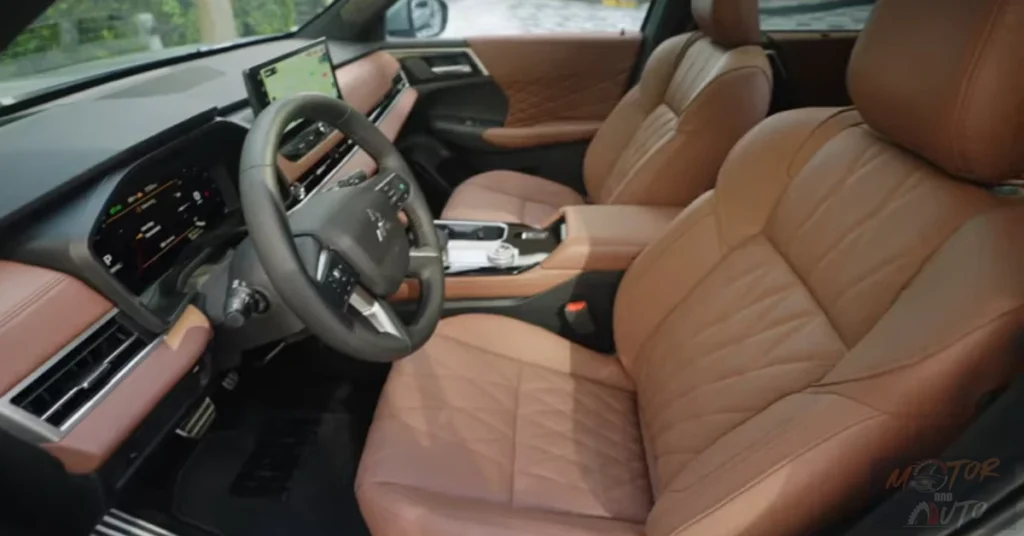
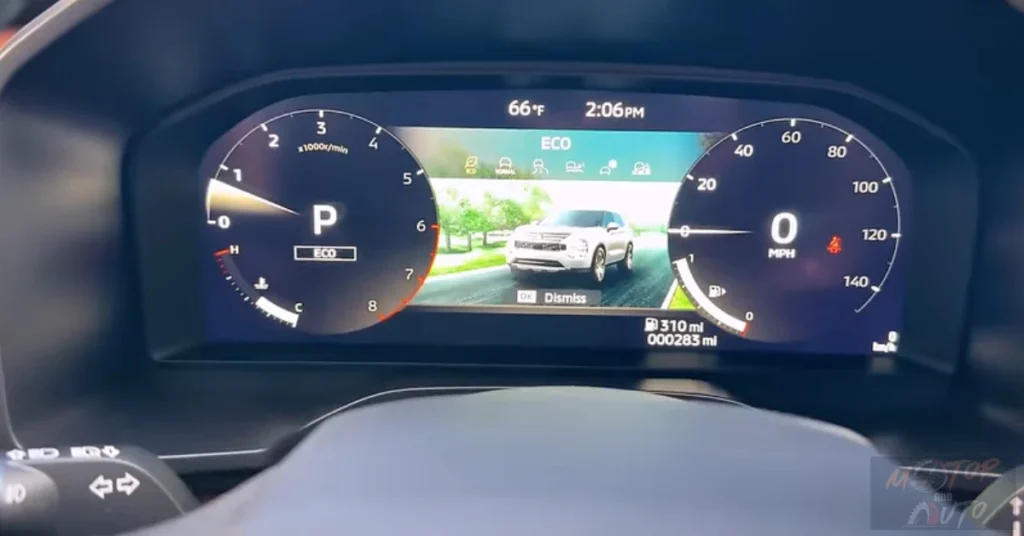

Alright, let’s dive into what’s new with the 2025 Mitsubishi Outlander’s interior because honestly, it’s a real game changer compared to what we’ve seen in past models. Mitsubishi has clearly put in a lot of effort, pouring resources into crafting a cabin that feels surprisingly upscale for a compact SUV. You know, the kind of materials and design touches that you’d expect in a luxury brand? Yeah, that’s what they’re going for.
About that new interior color—Brick Brown. Sounds fancy, right? This rich, warm hue is available with quilted semi-aniline leather on the higher trims. It’s a nice, classy twist away from the sea of boring black interiors you usually find in this segment. The way the leather is quilted adds that extra flair and a nice feel. Honestly, this Brick Brown option has caught the eye of many, who are calling it a standout feature. And if you’re not into darker shades, there’s also a Light Gray synthetic leather option on the mid-level trims for a breath of fresh air.
Moving on to the dashboard, it’s designed with a horizontal layout that emphasizes the cabin’s width. It gives off this spacious vibe, which is nice. Most surfaces that you’ll touch regularly are covered in soft materials, and there’s this padded section with neat contrast stitching that runs along much of the dashboard. At the top of the center stack, you’ve got a 12.3-inch touchscreen display that sticks out a bit—pretty common in today’s cars. Sure, some folks might want it to look more integrated, but honestly, the way it’s positioned makes it super easy to use while driving.
A big update for 2025? The center console. Mitsubishi claims it’s got 50% more storage than the last model— impressive, right? The cup holders have been moved forward, making it easier to grab your drinks, and they can hold larger cups now, too. They also changed the location of the wireless charging pad for better access. Little tweaks like these can make a big difference in everyday use. Plus, there’s a comfy padded armrest on top for those longer drives.
Now, let’s talk about the instrument panel. For the base models, you’ll find a standard 7-inch multi-information display, but if you go for the higher trims, there’s a 12.3-inch fully digital cluster that lets you customize what you see. It clearly shows all the vehicle info, navigation, and driver assistance alerts. Even cooler? A 10.8-inch head-up display is an option on the upper trims, projecting important info right onto the windshield—definitely handy for keeping your eyes on the road.
The material quality in the Outlander’s cabin is impressive, too. You’ve got a mix of surfaces that feel nice to the touch. The higher trims feature soft-touch materials on the dashboard and door panels, and that Brick Brown leather option extends to the door panels, matching the seats for a cohesive look. Sure, there’s some hard plastic in lower areas, but honestly, it’s well-textured enough that it doesn’t ruin the overall vibe.
Interestingly, even though the Outlander shares a platform with the Nissan Rogue, its interior doesn’t feel like it borrowed too much from it. The design, layout, and overall feel are distinctly Mitsubishi, giving it its own personality. Take the steering wheel, for instance—it has a four-spoke design with controls and paddle shifters that are easy to reach on every trim.
You’ll notice piano black accents throughout the cabin. They look sleek when clean, but let’s be real: they’re magnets for fingerprints and dust. That’s a common issue in many cars these days. The faux carbon fiber trim in some spots adds a bit of visual interest, and it has a textured feel that’s more authentic than what you find in a lot of other vehicles.
And here’s something that really stands out for 2025: the Yamaha audio system. Instead of plastic, the speaker grilles are made from solid metal, which is a nice touch. They’re designed with inspiration from traditional Japanese concepts, which is pretty cool. Little details like that add to the premium feel of the interior. This is actually Yamaha’s first sound system designed for a North American vehicle, showing Mitsubishi is serious about stepping up the Outlander’s interior game.
Also, ambient lighting is thoughtfully placed throughout the cabin, with LED lights that illuminate key areas without being a distraction. And if you opt for the panoramic sunroof, it brightens up the space during the day, making it feel even roomier for folks in the front and back. Even with that sunroof, there’s still enough headroom for average-height adults in both rows. So, all in all, it seems like Mitsubishi has really put in the work to create a fantastic interior experience in 2025
Exterior Design Impressions:

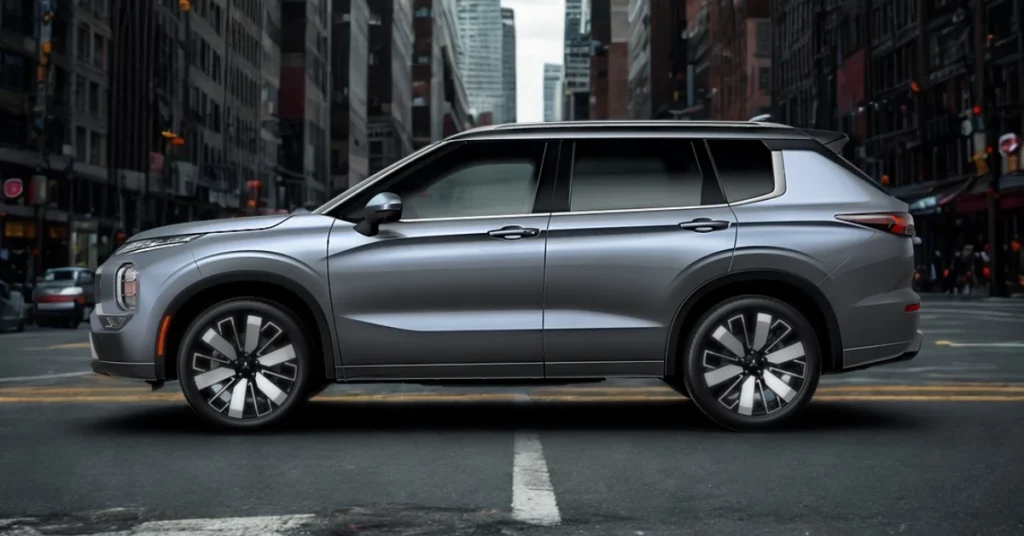
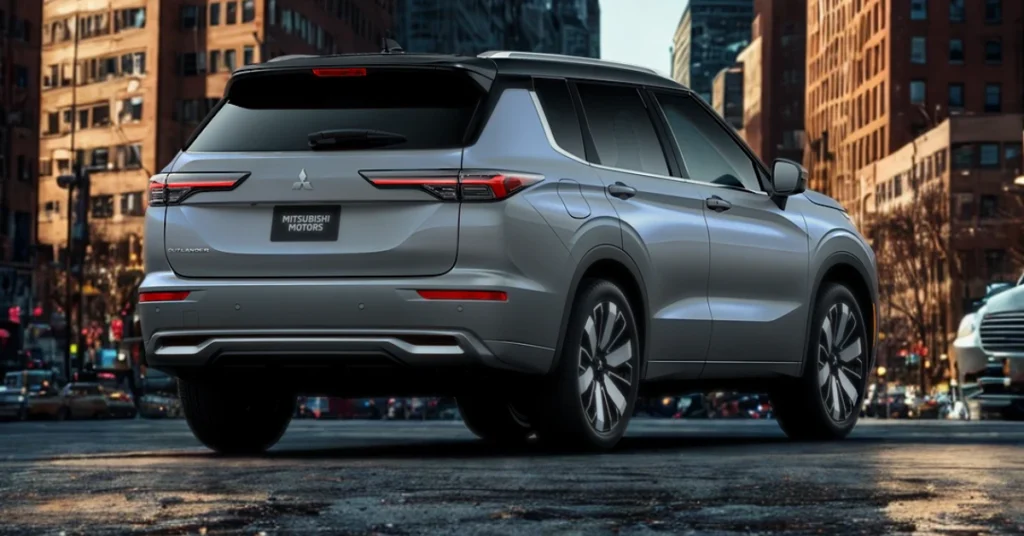
The 2025 Mitsubishi Outlander’s exterior design, well, it’s one of those things you either love or hate. This mid-cycle refresh brings some subtle tweaks, keeping the bold character intact while fine-tuning a few details. Mitsubishi calls its design philosophy the “Dynamic Shield,” which they liken to “two hands protecting your Outlander.” You can really see this in the front end, where a striking grille is flanked by split lighting elements.
For 2025, Mitsubishi has made a few changes to the front fascia. They’ve updated the grille pattern and modified the bumper design. The front still sports that assertive, vertical look with narrow upper lighting elements (that house LED daytime running lights and turn signals) sitting above the larger headlight clusters that are lower down. This split lighting style is becoming more common in the industry, but it was pretty fresh when it debuted on the fourth-gen Outlander. The 2025 model keeps this unique setup, just with some refined details.
One interesting addition for some trims is the “Outlander” script that runs along the front edge of the hood. It’s a bit like what Land Rover does with the Discovery. This little touch adds a bit of class and makes the model name stand out more when you’re looking at it from the front. Mitsubishi mentioned that this feature comes standard on certain trims, but you can also get it as a dealer accessory if you’re into that kind of styling.
When you look at the profile, the Outlander has a more traditional yet attractive outline. The clean lines paired with blacked-out pillars give it that floating roof effect. The greenhouse tapers just a bit toward the back, which helps create a sporty stance without cramping headroom inside. With a wheelbase of 106.5 inches, it feels planted, and there’s plenty of space for second-row passengers. At 185.8 inches long, it’s on the bigger side for compact SUVs, which is great since it has a third row.
Turning to the back, the 2025 Outlander has updated tail lamps that now feature all-LED tech, including LED turn signals that were incandescent before. The clear lenses on these tail lights create what Mitsubishi calls a three-dimensional look, which definitely adds some flair and a premium feel. The rear bumper also has a design they refer to as a “hexagonal guard horizon,” supposedly inspired by the Montero and Pajero SUVs from the ‘90s—though, honestly, we think that connection is a bit shaky.
For this model year, there’s also a new exterior color called Moonstone Gray, which has these subtle blue undertones that pop in certain lighting. It joins the existing color lineup, which has a mix of metallic and pearl options. Plus, higher trims still offer two-tone roofs, giving you even more ways to customize the look.
The wheels have had a complete makeover for 2025, too. The base ES trim comes with standard 18-inch alloys, while all the other models get shiny new 20-inch wheels. These larger wheels have a detailed, multifaceted design that looks a lot like what you’d find on the Honda Prologue electric vehicle. The bigger wheel size, along with the low-profile 235/45R20 tires, gives the Outlander a more upscale vibe compared to competitors that often stick with smaller wheels on similar trims.
Ground clearance sits at 8.4 inches, which is solid for the segment. It strikes a nice balance between being able to handle some off-road fun while still being easy to get in and out of for everyday use. That clearance, combined with the relatively short front and rear overhangs, gives it decent angles for light off-roading, even though let’s be real, it’s mostly built for cruising the streets.
You’ll spot chrome accents all over the exterior, especially on the higher trims—framing the windows, embellishing the door handles, and highlighting the front and rear fascias. While this chrome adds to the upscale look, we feel it’s a bit too much, especially at the front where the large chrome elements of the Dynamic Shield design can look a little busy.
On higher trims, you can get a power liftgate, and the top models come with a hands-free option. This lets you open the rear hatch just by waving your foot under the bumper when the key fob is in range. It’s a handy feature that’s becoming more common but is still a nice touch for day-to-day life.
And here’s something to look forward to: the Trail Edition model, coming later in the model year. It’s expected to have a more rugged look, with unique wheel designs, underbody protection, and maybe some exclusive colors. This version is aimed at those who want a more adventurous vibe, even if the mechanical differences from standard models are likely to be minimal.
Comfort and Convenience Features
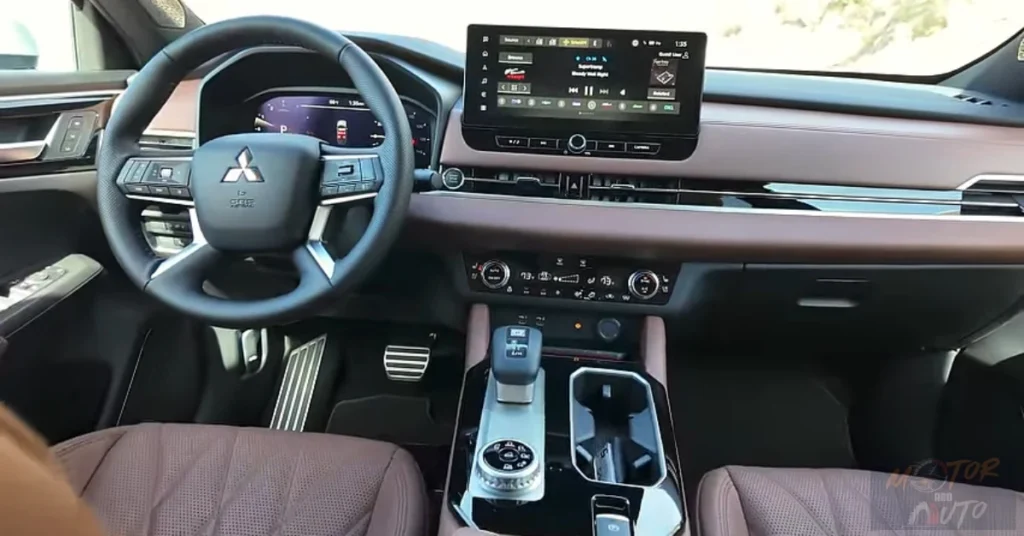
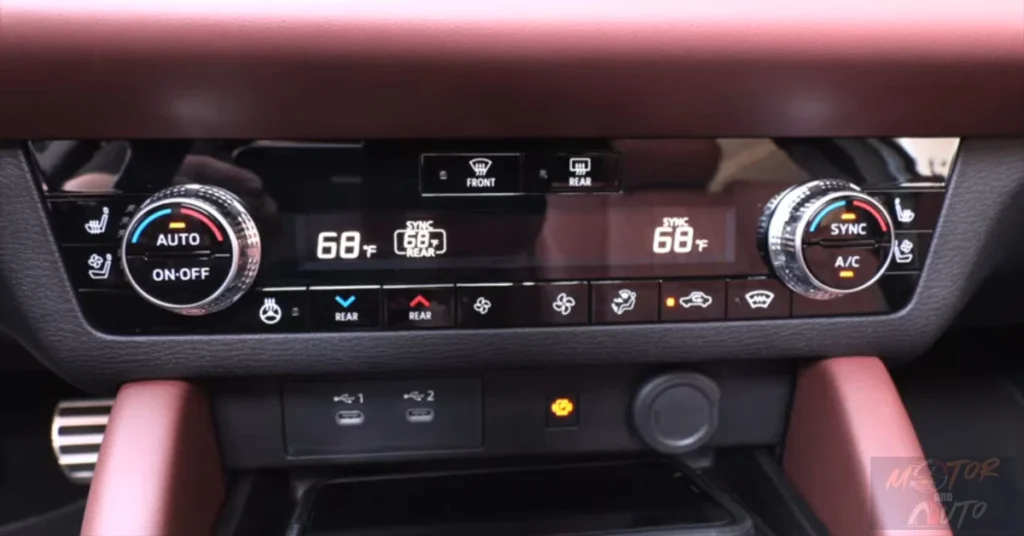

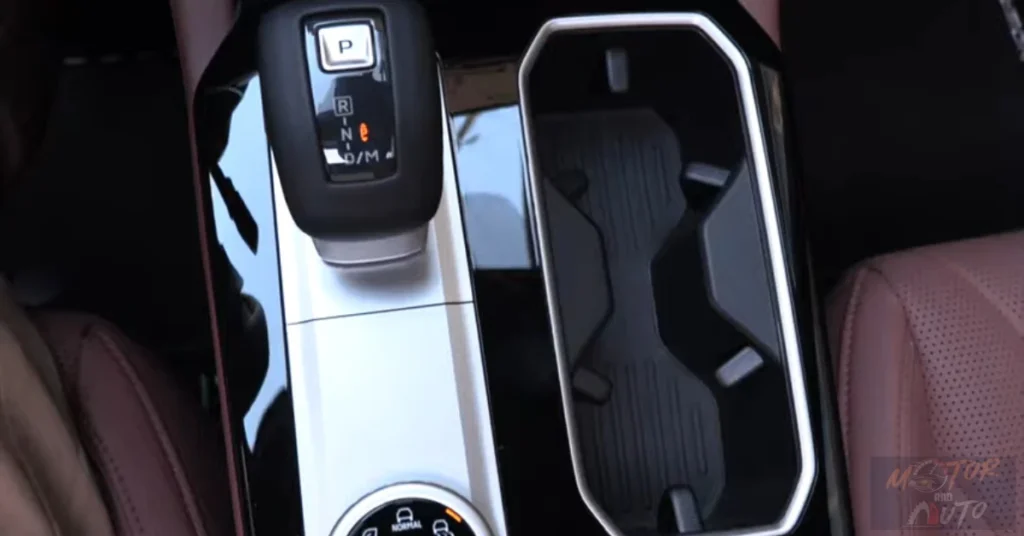
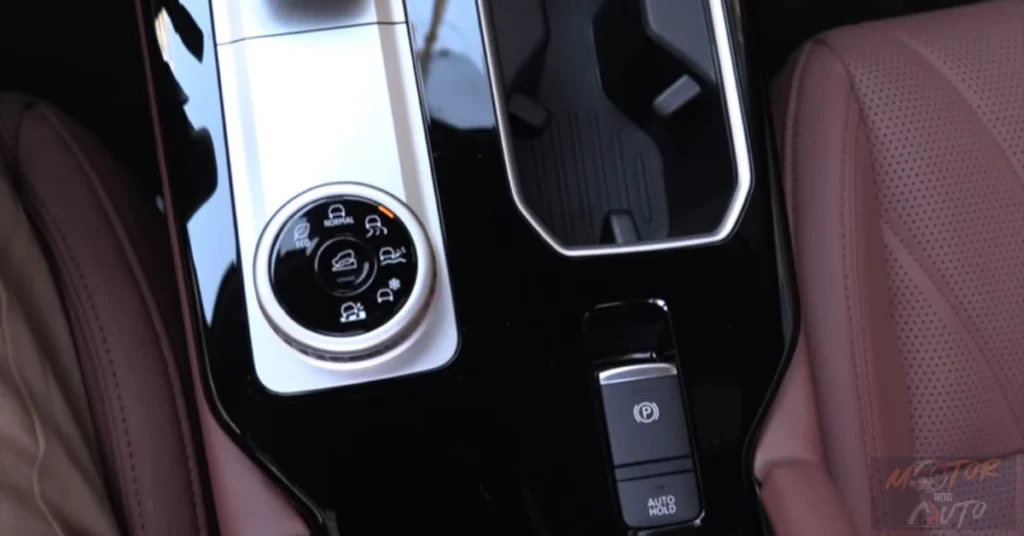
The 2025 Mitsubishi Outlander has gone through a bunch of updates aimed at making it more comfy and convenient—super important for a family-friendly ride, whether you’re just running errands or heading out on a longer trip. It’s pretty clear that Mitsubishi has listened to what folks have had to say, making some thoughtful changes throughout.
One of the biggest changes this year is the boost in sound insulation. You know, all those annoying noises that can creep into the cabin? Well, Mitsubishi has added sound-deadening materials to the pillars, doors, and floor. They’ve even made the carpet heavier to help soak up sound better. Oh, and the hood? It’s now made of steel instead of something lighter. They say it’s all about improving noise, vibration, and harshness (NVH) characteristics. In simpler terms, it helps keep engine noise at bay. These updates aim to enhance the new Yamaha audio systems, but the added bonus is that the cabin feels way quieter and more refined overall.
When it comes to the front seats, there’s some extra padding this year, which is great for long drives. On the higher trims, you’ll find these seats wrapped in quilted semi-aniline leather, complete with snazzy cross-stitching that looks and feels nice. A big highlight for 2025 is the addition of ventilated front seats on the upper trims—finally! This was something people were missing in earlier models. Those ventilated seats, along with the standard heated function, mean you’ll be comfy no matter what the weather throws at you. The driver’s seat has an 8-way power adjustment with lumbar support on higher trims, but the passenger seat is only 4-way adjustable and doesn’t have height control – this could be a spot for improvement in future updates.
Moving to the second row, it’s quite roomy—39.9 inches of legroom, which is competitive out there. These seats can slide back and forth, letting passengers tweak the space between the second and third rows as needed. For those on higher trims, the outboard seats are heated, which is a nice touch that you don’t see everywhere in this class. Plus, there are dedicated climate controls back there on the higher trims, turning the Outlander into a true three-zone climate control system instead of just the usual dual-zone setup you find in many rival vehicles. And hey, USB-C charging ports for rear passengers? Yep, that’s an upgrade from the old USB-A connections.
Now, let’s talk about the third row—that’s a feature that sets the Outlander apart in the compact SUV world, especially since the Volkswagen Tiguan has dropped its third-row option for this year. Mitsubishi is refreshingly upfront about this row, calling it good for “occasional use” and mostly suited for kids. With only 18.7 inches of legroom, it’s kind of tight for adults. But sliding the second row forward can help create some usable space in a pinch. Basically, this third row serves as emergency seating, giving the Outlander an edge over two-row competitors and allowing it to fit seven passengers if needed, without having to jump up to a pricier midsize SUV.
The center console has been redesigned for 2025, boasting 50% more storage space than before, which is pretty handy. The cup holders have been moved forward, making them more ergonomic and able to hold larger drinks—this might seem small, but it’s a practical change that caters to American habits with bigger beverages.
Connectivity has also seen some upgrades this year, with all USB ports switched to the more modern USB-C standard. There’s even a 15W wireless charging pad available on higher trims, now positioned for easier access compared to the last model. It has an LED indicator to show when your phone is charging and is big enough to fit larger smartphones, even those with cases.
As for climate controls, Mitsubishi has kept them as physical buttons and knobs instead of cramming everything into the touchscreen. This is a smart move, letting drivers make quick adjustments without taking their eyes off the road. The three-zone climate system means everyone can set their own temperature—definitely a plus for comfort. And if you opt for the panoramic sunroof, get ready for tons of natural light during daytime drives, which opens up the feeling inside. This sunroof even comes with a power sunshade and can be opened for ventilation—something that some competitors’ sunroofs don’t offer.
One of the coolest upgrades for 2025 has got to be the new standard 12.3-inch touchscreen infotainment system. It’s a big jump from the old 8-inch screen. This really puts the Outlander ahead of quite a few competitors out there—like the Honda CR-V, which is still stuck with a 7-inch screen for its base models and only goes up to 9 inches in the higher trims. Now, the Outlander comes with wireless Apple CarPlay and Android Auto (the Android Auto part is brand new for 2025), built-in navigation, and the ability to get over-the-air updates.
The interface of the infotainment system has gotten a nice redesign, with snazzier graphics and better performance. You can even use split-screen functionality, which is super handy because you can check navigation and audio info at the same time. The screen has a good resolution and is responsive, but some feel the built-in navigation looks a bit outdated compared to what you get on your smartphone. Plus, the Google integration adds some extra perks like real-time traffic updates, local gas prices, and even Google Earth imagery that makes navigating a bit more realistic.
On higher trims, there’s this slick new digital rear-view mirror that gives you a clear view behind the vehicle—no matter how many passengers, cargo, or headrests are in the way. You can switch it between a regular mirror and a camera view, which is pretty neat! There’s also a 12.3-inch digital instrument cluster and a 10.8-inch head-up display that shows key info right on the windshield, which is super convenient for the driver.
Now, if you’re into audio, there’s a big upgrade thanks to a partnership with Yamaha. Even the base ES trim gets an 8-speaker Yamaha Dynamic Sound system, and the higher trims? They go all out with a 12-speaker, 1650-watt Yamaha Dynamic Sound Ultimate system. They’ve really thought about the details too—the speaker grilles are made from solid metal and have designs based on traditional Japanese art. Mitsubishi and Yamaha put a lot of effort into these systems, tuning them for different driving conditions and even considering how rain hitting the windshield might change how you hear the sound.
Inside the cabin, you’ll find practical conveniences everywhere, like loads of storage compartments, door pockets that are just the right size, and cup holders placed perfectly. There’s also a hands-free power liftgate that makes it super easy to get into the cargo area when your hands are full, and the power-folding mirrors with built-in turn signals add a touch of safety and convenience. Plus, if you have multiple drivers, the memory settings for the driver’s seat and mirrors on higher trims make sharing a breeze.
The Mitsubishi Connect app provides remote functionality, including the ability to lock/unlock doors, activate climate control, locate the vehicle, and receive various safety alerts. You get a one-year trial for the standard features and a five-year trial for the safety functions, after which there are subscription fees. These connected services are popping up everywhere in the automotive world, but they do add a nice layer of convenience for those who love integrating their smartphones with their cars.
Safety and Security:
The 2025 Mitsubishi Outlander builds on an already strong safety foundation, making some meaningful updates to boost both passive and active safety systems. For this year, Mitsubishi has rolled out its “RISE” (Reinforced Impact Safety Evolution) tech, which uses high-strength steel and hot stamping to beef up the cabin structure, making it safer in collisions. This is a big step forward in the vehicle’s passive safety engineering.
Alongside these structural enhancements, they’ve also reinforced the suspension cross members. This is great because it not only improves the ride quality but also adds to crash protection. One notable new feature for 2025 is the introduction of a front-center airbag. This airbag deploys between the driver and the front passenger during certain side-impact collisions, helping to keep them from bumping into each other. With this addition, the Outlander now has a total of eight airbags, creating a comprehensive safety net with front, side, curtain, and now, a center airbag.
As for the tech, the Outlander comes standard with a whole suite of advanced driver assistance systems (ADAS) across all trims. We’re talking about forward collision mitigation with pedestrian detection, blind-spot monitoring, rear cross-traffic alert, and lane departure warning. If you opt for the higher trims, you get even more cool features like adaptive cruise control, lane-keeping assist, and a multi-view camera system. This system gives you a 360-degree view around the vehicle, making parking and low-speed maneuvering way easier. Plus, the camera’s resolution has been improved this year for clearer images.
The adaptive cruise control is quite handy on highways, keeping a safe distance and adjusting speed smoothly with traffic. Lane-keeping assist offers gentle nudges if you drift toward the lane markings without signaling. Just a heads up, it’s more of a safety backup than a hands-free driving feature. These systems are designed to help reduce driver fatigue on long trips while adding an extra layer of safety.
Now, if you go for the higher trims, you’ll also get traffic sign recognition. This feature displays current speed limits and other important road signs right on your instrument cluster and head-up display, super helpful when you’re in unfamiliar areas. There’s also a driver attention alert that monitors your driving habits and suggests breaks if it senses fatigue or distraction. It’s definitely a nice touch in today’s world where driver distraction is a real concern.
Mitsubishi takes a conservative approach with these systems, focusing on reliable operation rather than going overboard with tech. They usually only step in when necessary, and do so in a way that feels predictable and non-intrusive. This might be a relief for drivers who find some of the more aggressive systems in competing vehicles annoying. Plus, you can customize safety alerts through the vehicle settings, adjusting sensitivity or even disabling features to fit your preferences.
For those who often park in tight spots, higher trims come with front and rear parking sensors that give you both audible and visual alerts for nearby obstacles while you’re maneuvering at low speeds. These work great with the 360-degree camera system for easier parking. Another neat feature for 2025 is the digital rear-view mirror, which greatly improves rear visibility, no matter how many passengers or cargo you’ve got blocking the view in a regular mirror.
And if you’re a parent, you’ll be glad to know that Outlander has child safety features. It comes with LATCH (Lower Anchors and Tethers for Children) points in the second row for secure child seat installation. The third row lacks LATCH anchors but does have top tether points for forward-facing child seats if needed. Just keep in mind that if you put child seats in the third row, those seats become hard to access from the sides, so you’d have to go through the cargo area, which isn’t the most convenient for everyday use.
When it comes to security, you get a standard anti-theft alarm system, an engine immobilizer, and remote keyless entry. The Mitsubishi Connect app adds even more security perks like vehicle location services, remote lock/unlock, and various alerts like speed, curfew, and boundary notifications—perfect for parents of teen drivers. Just remember, these services will need a subscription once the trial periods are up.
Looking back, the previous generation Outlander snagged a Top Safety Pick+ rating from the Insurance Institute for Highway Safety (IIHS) and a five-star overall rating from the National Highway Traffic Safety Administration (NHTSA). While we don’t have the specific ratings for the refreshed 2025 model just yet, all these structural improvements and added safety features suggest it should keep up or even improve on those solid safety credentials.
Mitsubishi’s excellent warranty coverage extends to all safety systems, with the basic 5-year/60,000-mile warranty and 10-year/100,000-mile powertrain coverage providing long-term peace of mind regarding potential issues with safety components. This comprehensive warranty is particularly valuable for complex electronic safety systems that can be expensive to repair outside of the warranty.
On the Road with the Mitsubishi Outlander:
One of the first things you’ll notice in the 2025 model is how quiet it is inside. Mitsubishi has put in a lot of sound insulation throughout the car; we’re talking about the pillars, doors, and even the floor. They’ve even made the carpet heavier to help soak up more noise. And get this—the hood is now made of steel instead of a lighter material, which is a smart move to keep engine noise from creeping into the cabin. These changes weren’t just for show, though; they were mainly aimed at boosting the sound quality of the new Yamaha sound system. The result? A much quieter and more refined driving experience.
When it comes to suspension, there’s been a big overhaul for 2025. They’ve swapped out the old passive shock absorbers for new frequency-selective dampers. What does that mean? Well, these dampers react differently depending on the kind of bumps you hit. So, you get better control when cornering, but it still feels smooth over smaller road imperfections. Mitsubishi has also made some tweaks to the suspension mounts, and sway bars, and reinforced the cross members. All this adds up to a ride that’s a nice blend of comfort and control—less jolting over bumpy roads and way better handling in turns.
Now, let’s talk about steering. Mitsubishi listened to feedback from North American drivers who found the steering a bit vague, especially on the highway. The old model needed constant corrections, which could get tiring on long drives. The 2025 version? It’s got a more stable feel when driving straight, making those long trips a lot easier on the nerves. Depending on the drive mode you choose, the steering weight changes too. In Tarmac mode, for example, it feels heavier and more connected when you’re taking those winding roads at a spirited pace.
The powertrain hasn’t changed. You still get a 2.5-liter naturally aspirated four-cylinder engine putting out 181 horsepower and the same amount in torque, paired with a continuously variable transmission (CVT). It’s decent but not exactly thrilling. You’re looking at about 8.2 seconds for a 0-60 mph sprint, according to independent tests. The engine does alright in city driving and can cruise comfortably on the highway, but it can feel a bit sluggish when you’re trying to climb steep hills or make quick passes—especially if you’ve got a full load of passengers and cargo.
The CVT usually works well in normal driving, simulating gear shifts to feel more like a traditional automatic. You can even use paddle shifters to play around with eight simulated gears. But when you really step on it, you might notice that familiar “drone” sound as the CVT keeps the engine revved up to get the most power. This is especially noticeable on steep climbs or when merging onto the highway, as it prefers to keep the engine in its sweet spot rather than pretend to shift up.
Now, let’s touch on Mitsubishi’s Super All-Wheel Control (S-AWC) system. It’s available on all trims except the top-tier Platinum Edition, where it’s standard. This system does a good job of providing traction no matter the conditions and comes with various drive modes like Eco, Normal, Tarmac, Gravel, Snow, and Mud. This means you can fine-tune the vehicle’s performance based on what you’re driving on or the weather outside. Typically, it runs in front-wheel drive to save on gas, only sending power to the back wheels when necessary for better traction or if you switch modes.
Braking? Well, it’s okay—not the best, but it gets the job done. The pedal might feel a bit soft, lacking that firm bite that some competitors have. Previous tests showed it could stop from 70 mph in about 172 feet, which is decent but not the best in its class. However, it does work well with the Outlander’s advanced driver assistance systems, like forward collision mitigation that includes automatic emergency braking.
Speaking of driver assistance, these features generally perform well. The adaptive cruise control keeps a safe distance from other cars and adjusts speed smoothly as traffic changes. The lane-keeping assist gives gentle nudges if you start drifting without signaling, but it’s more of a safety net than a system you can completely rely on for hands-free driving. These systems are great for reducing fatigue on longer trips while adding an extra layer of safety.
Visibility from the driver’s seat is generally good, with reasonably sized pillars and large side mirrors. The available 360-degree camera system and digital rear-view mirror further enhance visibility during parking and low-speed maneuvering. The driving position is comfortable, with a good range of adjustment in the seat and steering wheel to accommodate drivers of various sizes.
Overall, the 2025 Outlander’s driving experience emphasizes comfort, refinement, and ease of use rather than sporting pretensions. The vehicle feels substantial and planted on the road, with the updated suspension and steering providing a more composed, confidence-inspiring character than before. While it won’t satisfy driving enthusiasts, the Outlander offers a pleasant, low-stress driving experience well-suited to its role as a family-oriented crossover.
CX-90’s Rear Seat Comfort
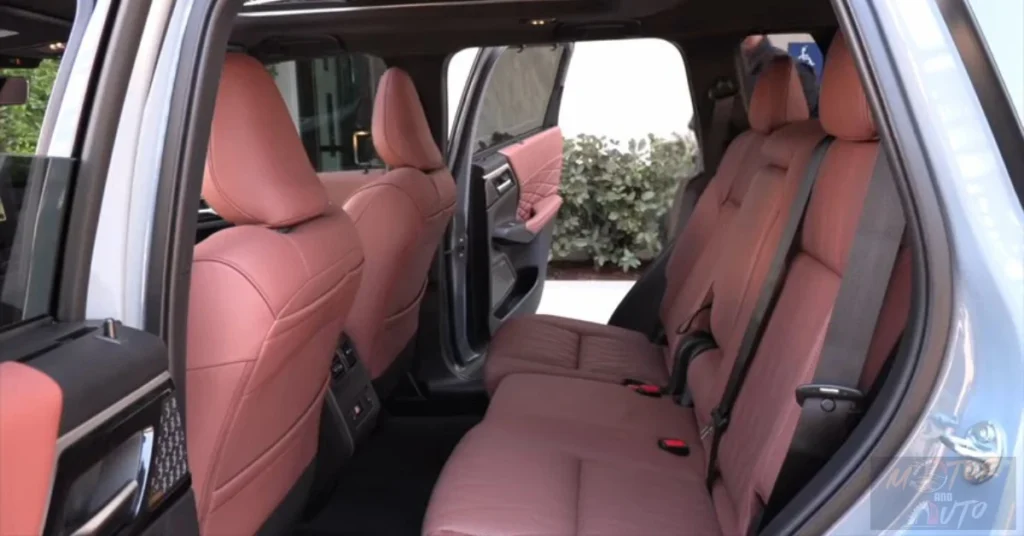
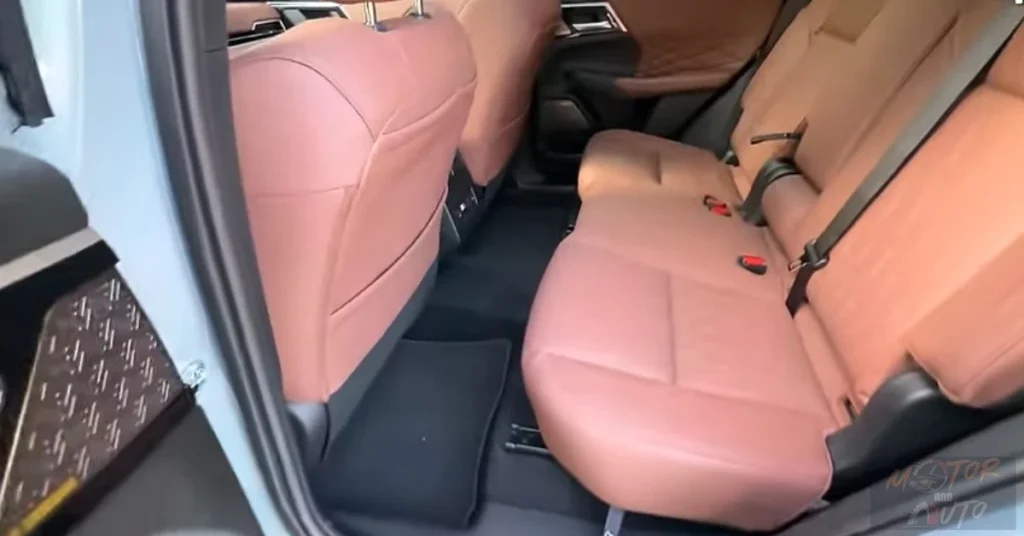
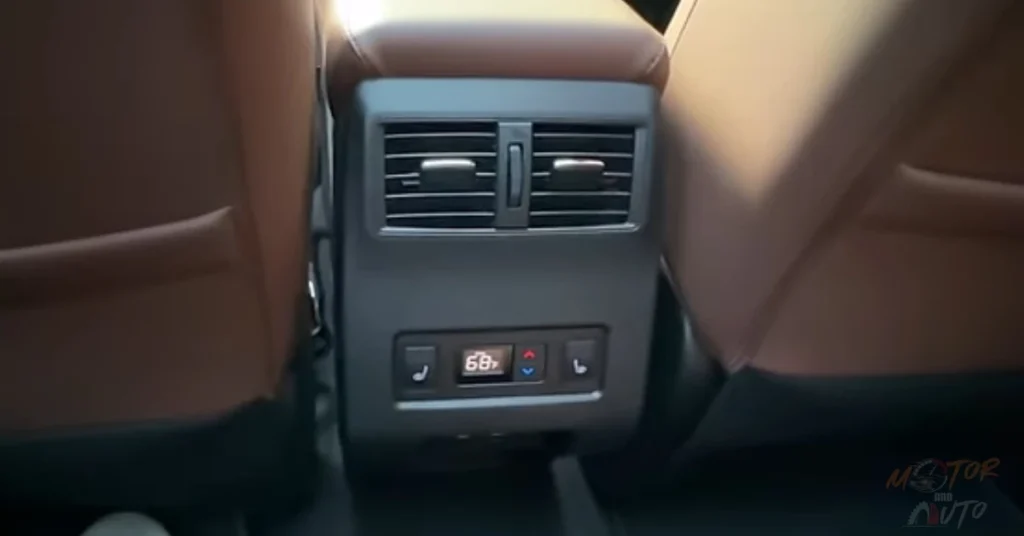

The 2025 Mitsubishi Outlander brings an interesting rear seating arrangement to the table, especially when you compare it to other compact SUVs. Thanks to its standard three-row setup, it offers some unique perks and trade-offs that buyers should think about based on what they need and how they plan to use the vehicle.
Let’s dive into the second row first. This space is surprisingly comfortable and roomy. With about 39.9 inches of legroom, it’s more generous than what you’ll find in a Toyota RAV4 (which has 37.8 inches) but just a tad less than the Honda CR-V’s 41.0 inches. The seats are well-cushioned and supportive, with a backrest angle that makes longer trips a breeze for adults. Plus, the 60/40 split bench design makes it easy to configure the seating and cargo space according to your needs.
Now, one of the standout features in the second row is its ability to slide back and forth. This flexibility means you can adjust the space between the second and third rows as needed. If you’re not using the third row, you can slide the second row all the way back to maximize legroom for those passengers. But, if the third row is occupied, you can move the second row forward to give more room to those in the back—though that does mean sacrificing some space in the second row.
For 2025, Mitsubishi has kept the quality of materials in the second row consistent with what’s in the front cabin. The door panels are made from soft-touch materials, so there’s no cheap plastic here, which is a nice touch. If you go for the higher trims with the Brick Brown leather interior, you’ll find that the second-row seats are dressed in the same quilted semi-aniline leather as the front seats, complete with attractive cross-stitching. It helps to keep that upscale vibe throughout the cabin. Plus, the metal speaker grilles for the Yamaha audio system carry over to the rear doors, adding a little flair.
When it comes to comfort features, the second row is well-equipped for its class. In higher trims, you get heated outboard seats—a feature that’s not super common in this segment, but it definitely ups the comfort on chilly days for those sitting in the back. There are dedicated air vents on the rear of the center console, and in the higher trims, you also get separate climate controls. So, it’s more like a true three-zone climate control system instead of the dual-zone setups you see in many rivals. Oh, and don’t forget the USB-C ports for charging devices—definitely a step up from the older USB-A.
The second row also comes with a fold-down center armrest that has built-in cup holders when the middle seat isn’t occupied. One thing to keep in mind, though, is that this armrest is a bit narrow at the front, and some folks have mentioned it could create pressure points if used for a long time. The seats have adjustable headrests for all three positions, and the outboard spots come with LATCH (Lower Anchors and Tethers for Children) points for safely securing child seats. The doors open wide, making it easy to get in and out, and the seat height is just right—not too low or too high.
In the higher trims, there’s a panoramic sunroof that extends over the second row, letting in lots of natural light and making the space feel even bigger. You also get retractable sunshades for the rear side windows, which is super helpful for blocking out sunlight—something parents with little ones will probably appreciate. Plus, those large side windows give passengers good visibility, which can help reduce motion sickness on winding roads.
Now, let’s talk about the third row. This is where you start to see some compromises in the Outlander’s design. With only 18.7 inches of legroom, it’s definitely snug for adults. Mitsubishi is pretty upfront about this, saying the third row is really meant for “occasional use” and is best suited for kids. Getting back there involves folding and sliding the second-row seats forward, which is fairly simple, but not as easy as you might find in bigger vehicles designed for seven passengers.
Once you’re in the third row, adults will notice the seating position is a bit upright, and knees might sit higher than what’s comfortable. While there’s adequate headroom for average-height folks, taller individuals might find it cramped. There aren’t dedicated air vents for the third-row passengers, but the climate system does have some outlets aimed at that area. You’ll find cup holders on either side of the third row, which is a nice touch for keeping drinks secure in what can be a tricky seating position.
Bootspace and Practicality
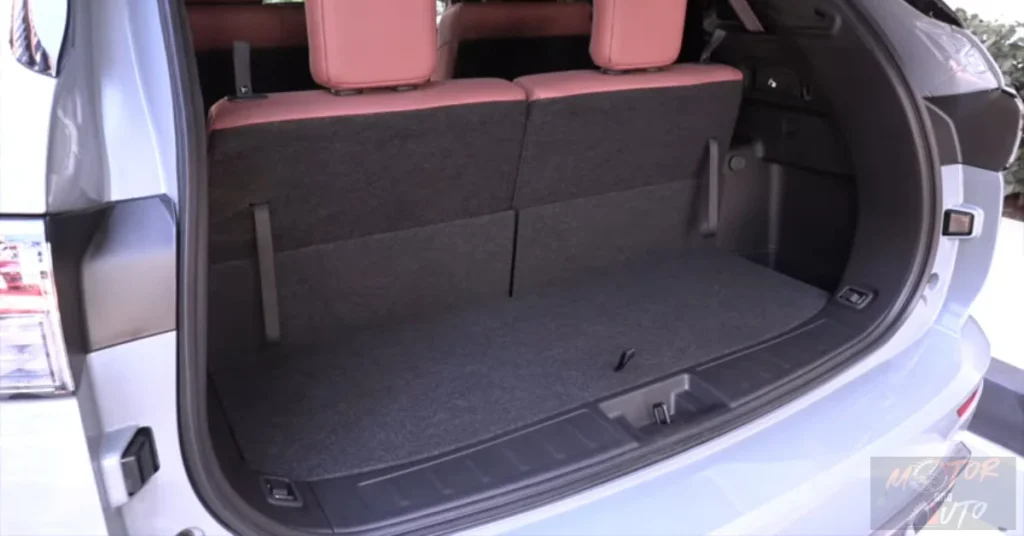

When it comes to cargo capacity, the 2025 Mitsubishi Outlander stands out in the compact SUV market, especially with its standard third-row seating. You see, this seven-passenger setup allows for all sorts of cargo arrangements that other SUVs, which usually just have two rows, simply can’t match.
If you have all three rows of seats up, you’re looking at about 10.9 cubic feet of cargo space behind that third row. Honestly, that’s a bit cramped – sure, you can fit a few grocery bags or a couple of backpacks, but it might not hold larger items or luggage for a full carload of people. Mitsubishi, however, has come up with some smart ways to make the most of this space. For instance, there are underfloor storage compartments where you can stash the third-row headrests when they’re not in use. These spots are handy for keeping small items out of sight or separated from the main cargo area.
If you fold down the third row, you get a more generous 30.6 cubic feet behind the second row. That’s competitive, but it doesn’t quite lead the pack. Just to give you a point of reference, the Honda CR-V offers up to 39.3 cubic feet, while the Toyota RAV4 comes in at 37.6 cubic feet in their standard two-row setups. The Outlander’s slightly smaller cargo area in this setup has to do with the need to fit that third row into a more compact design. Still, it’s plenty usable for everyday stuff – think multiple suitcases, sports gear, or those big shopping trips.
For those who need maximum cargo space, folding down both the second and third rows gives you a solid 64.3 cubic feet. But, let’s be real, that’s still trailing behind the Honda CR-V, which has a whopping 76.5 cubic feet, and the RAV4 with 69.8 cubic feet. The good news is that when you fold the seats down, they almost lie flat, creating a nice, continuous load floor that makes it easier to slide in longer items. There’s just a slight incline at the point where the seats meet the cargo floor, but it’s not a dealbreaker when it comes to loading or securing your stuff.
Expanding the cargo area is easy, too. You can fold the third-row seats by just pulling on straps at the top of each seatback. The second row has a 60/40 split design, and you can fold it down using levers that are right there in the rear cargo area – a nice touch that saves you from having to walk around to the side doors when you’re loading up larger things. Plus, that second row can slide back and forth, so you can adjust between passenger legroom and cargo space based on what you need.
The cargo area also comes with some practical features that boost its functionality. Tie-down hooks help keep loose items secure, and the carpeted floor offers a bit of grip to stop things from sliding around while you’re driving. There’s even a retractable cargo cover to keep your valuables out of sight, though you’ll have to take it out and store it somewhere else if you’re using the third row. It can be tucked away under the cargo floor when not in use, which is handy, but it does take up some of that underfloor storage space.
And if you’re looking for a bit more convenience, higher trims come with a power liftgate – and some even let you open it hands-free! Just wave your foot beneath the bumper when your key fob is close by, and boom, the hatch opens. The liftgate itself is wide and tall enough to make loading bulky items a breeze. The height is just right – it gives you decent ground clearance for light off-roading but isn’t so high that you struggle to lift heavy stuff into the back. Overall, the Outlander’s cargo space is designed to be practical for a variety of needs.
The Mitsubishi Outlander Value Proposition: Is It Worth the Price?
The 2025 Mitsubishi Outlander occupies a unique position in the highly competitive compact SUV segment, offering distinctive value propositions that make it worthy of serious consideration for certain buyers. To determine whether it’s worth the price, we need to examine how each trim level balances features, performance, and overall value compared to both its direct competitors and alternatives in adjacent segments.
Starting with the base ES trim at $31,140 (plus $1,495 destination fee), the Outlander immediately distinguishes itself with standard features that exceed what many competitors offer at similar price points. The inclusion of a 12.3-inch touchscreen with navigation, wireless Apple CarPlay and Android Auto, an 8-speaker Yamaha audio system, and seven-passenger seating represents excellent value. By comparison, the base Honda CR-V starts with a much smaller 7-inch screen and seats only five, while costing nearly the same. The ES trim comes with 18-inch alloy wheels, LED headlights, and a comprehensive set of safety features including forward collision mitigation, blind-spot monitoring, and rear cross-traffic alert.
Moving up to the SE trim at $33,890 adds 20-inch wheels, a 15W wireless phone charger, rear USB-C ports, and the option of a light gray interior. The available Tech Package ($3,200) further enhances this trim with the 12-speaker Yamaha sound system, panoramic moonroof, and 12.3-inch digital instrument panel. This mid-level offering strikes a particularly sweet spot in the lineup, providing many of the premium features that enhance the daily driving experience without pushing the price into territory where more powerful or prestigious alternatives become tempting. For most buyers, this SE trim with the Tech Package represents the best balance of features and value.
The SEL trim at $38,490 elevates the Outlander into more premium territory with quilted semi-aniline leather (available in the distinctive Brick Brown color), memory driver’s seat, digital rear-view mirror, ventilated front seats, the full 12.3-inch digital driver display, 12-speaker Yamaha Ultimate audio system, panoramic sunroof, heated second-row seats, and a hands-free power liftgate. At this price point, the Outlander begins to overlap with base versions of midsize three-row SUVs like the Kia Telluride or Hyundai Palisade, creating some interesting cross-shopping scenarios. The Outlander’s smaller footprint and more premium interior might appeal to those who prioritize features and materials over absolute space.
The top-tier Platinum Edition at $44,640 comes standard with all-wheel drive (a $1,800 option on other trims), two-tone exterior paint options, Platinum badging, and all available features as standard equipment. At this price point, the value proposition becomes more questionable, as the Outlander approaches territory occupied by entry-level luxury crossovers and well-equipped midsize SUVs with more powerful engines and greater interior space. The relatively modest 181-horsepower engine becomes harder to justify as the price climbs, despite the premium interior appointments.
When considering the Outlander’s overall value proposition, several key factors emerge as particularly significant. First and foremost is its standard third-row seating, which makes it the only compact SUV to offer seating for seven now that the Volkswagen Tiguan has dropped this feature for 2025. For families who occasionally need to transport additional passengers but don’t want or need a larger midsize SUV for daily use, this unique capability provides genuine practical value that could justify the purchase on its own.
The second major value factor is Outlander’s surprisingly premium interior, particularly in higher trims with the quilted leather upholstery and full complement of digital displays. The materials, design, and attention to detail exceed what many would expect from Mitsubishi and compare favorably with more expensive competitors. The partnership with Yamaha for the audio systems further enhances this premium feel, providing excellent sound quality that outperforms many competitors’ offerings.
Technology features represent another strong value point, with the standard 12.3-inch touchscreen across all trims standing out as particularly generous. Many competitors still offer much smaller screens on their base models, with Honda’s base CR-V limited to a 7-inch unit and Toyota’s entry-level RAV4 featuring an 8-inch display. The inclusion of wireless Android Auto for 2025 (joining the previously available wireless Apple CarPlay) further enhances the technology package.
Mitsubishi’s warranty coverage continues to be a significant value proposition, with a 5-year/60,000-mile basic warranty and 10-year/100,000-mile powertrain coverage exceeding what most competitors offer. This comprehensive protection provides peace of mind regarding potential issues and can contribute significantly to the total ownership cost equation. The addition of two years of complimentary maintenance for U.S. buyers further enhances this value.
The Outlander’s primary weaknesses that impact its value proposition are its merely adequate powertrain and fuel economy. The 181-horsepower engine provides sufficient but uninspiring performance, and fuel economy ratings of 24-27 mpg combined (depending on drivetrain) are average for the segment but fall short of class leaders. For buyers who prioritize performance or efficiency, alternatives like the turbocharged Mazda CX-5 or hybrid Toyota RAV4 might represent better value despite potentially higher prices or fewer features.
Cargo capacity represents another potential weakness, with the Outlander offering less space than key competitors like the Honda CR-V and Toyota RAV4. This is a direct consequence of packaging a third row within a compact footprint, creating a compromise that buyers must weigh based on their specific needs. For those who rarely use the third row and frequently carry bulky cargo, a traditional two-row competitor might offer better value despite lacking Outlander’s seating flexibility.
The 2025 updates focused on refinement (improved sound insulation, retuned suspension, enhanced technology) to address specific customer pain points and strengthen Outlander’s overall value proposition, particularly for buyers who prioritize comfort and interior quality over driving dynamics. These changes make the Outlander feel more substantial and premium than its price point might suggest, contributing positively to its value equation.
In the final analysis, the 2025 Mitsubishi Outlander represents excellent value for certain specific buyer profiles. It’s particularly compelling for families who occasionally need seven-passenger seating but don’t want to step up to a larger, more expensive midsize SUV for daily use. It also offers strong value for buyers who prioritize interior quality, technology features, and warranty coverage over driving dynamics or maximum cargo capacity. The SE trim with the Tech Package hits a particularly sweet spot in the lineup, offering the most essential premium features without pushing the price into territory where more powerful alternatives become tempting.
However, buyers who prioritize driving performance, maximum cargo space, or class-leading fuel efficiency might find better value in alternatives despite potentially sacrificing some features or paying slightly more. As with most vehicle purchases, Outlander’s value proposition ultimately depends on how well its specific strengths and compromises align with individual buyer priorities and usage patterns.

